|
Newsletter
Seminar Material
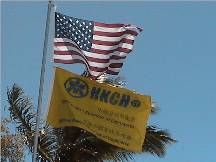



Biz:
China
Hong
Kong Hawaii


What people
said about us

China
Earthquake Relief
Tax &
Government
Hawaii Voter Registration
 Biz-Video
Biz-Video
 Hawaii's
China Connection Hawaii's
China Connection

 CDP#1780962
CDP#1780962

 Doing Business in
Hong Kong & China
Doing Business in
Hong Kong & China
| |
Bauhinia News© &
Newsletter©
Bauhinia News© Share
For Current Information,
Please Visit our EVENT,
HK & CHINA BIZ
and PHOTO ALBUM
PAGES
Do you know our dues
paying members attend events sponsored by our collaboration partners worldwide
at their membership rates - go to our event page to find out more!
Do you know our dues
paying members attend events sponsored by our collaboration partners worldwide
at their membership rates - go to our event page to find out more!
After
attended a China/Hong Kong Business/Trade Seminar in Hawaii...still unsure what
to do next, contact us, our Officers, Directors and Founding Members are
actively engaged in China/Hong Kong/Asia trade - we can help!
Share Are you ready to export your product or
service? You will find out in 3 minutes with resources to help you -
enter
to give it a try

May 25 2011
Selling Strategic Marketing

Eddie Choi is a firm believer in the power of social media. The Managing Director of Frontiers Digital Agency and four partners moved their boutique digital-strategy agency from the United Kingdom to Hong Kong three years ago to tap the booming online consumer market on the Chinese mainland.
In 2009, the Hong Kong-based agency expanded into the mainland, where Mr Choi said the number of online users is growing exponentially. China’s Internet penetration rate ranks fourth in the world, and is expected to reach 50 per cent by 2014. In Six Questions, Eddie Choi talks about the impact of social media on online marketing.
Tell us about your company.
Frontiers Digital Agency is a boutique digital strategy agency, offering marketing and advertising services to primary and multinational companies on the Chinese mainland, including such companies as Michelin and Make Up For Ever. Working with online media, we do media planning. Most of the work we do is strategy work.
Unlike traditional advertising agencies, which do more media buying, we provide pre-media-buying services, including coming up with a plan and strategies that tell clients why they need to buy that media. So there is a difference between a strategy agency like us and a media agency. We plan, investigate and research to help our clients decide whether to buy the media advertising.
Where did your company get its start?
We started as a United Kingdom-based agency, but moved to Hong Kong in 2008. I have four UK partners. One is former Myspace Managing Director of UK & Europe David Fischer. Another, Luke Townsend, was former Head of Agency Sales at AOL UK. I had done a lot of B2B work, and my background is in search marketing, mainly in Hong Kong, but also elsewhere in Asia.
We came together with our accumulated experience to start this business because we didn’t see a lot of strategy work being done in Hong Kong, where not many companies provide international online marketing services.
The Hong Kong market is so small that if you were to count the number of online media, you would find that there are no more than 10. So we started our first Asian office in Hong Kong in 2008 and expanded into the mainland in 2009 because of the market shift. We have a lot more media and resources plans for our clients there, and strategy work only works in places where you have a lot of resources.
What’s the latest development in online marketing on the mainland?
China has become the biggest market, with more opportunities, more budget and more media compared to Hong Kong. But the Internet is only partially open. The first decision we made was to have a fully local team, because everything was different when we went to the mainland. People are not on Facebook; they have their own version of Facebook. Online behaviour on the mainland is totally different, the demographic is different, even the search engine is different.
But everyone is into social media and it’s a natural behaviour. In China, you can find more people are staying with social media rather than search engines. Of course, search engines are still more commonly used, particularly for those in the B2B business. You rely on search engines for business information. If you are in B2C, you do a lot of product search.
In China, there are three major components in online marketing: search engines, social media and online shopping. The three platforms are connected. A typical cycle goes like this: people search online for a shopping site. They then shop on the site and share their shopping experience through social media. If you are planning online marketing strategy on Google search, you should know that it will end up having something to do with social media.
Why is social media such an important component of e-business on the mainland?
Social media connects people in different parts of China. Unlike Hong Kong, where you can see your friends every day, on the mainland the situation is a little bit like in the United States, where the population is dispersed.
The information circulation within a friend group is powerful because it involves trust. You can do even more powerful word-of-mouth marketing on social media because it involves trust. I call social media marketing “second-opinion” marketing.
For example, when you need to make an important (buying) decision, which information will you believe? Are you going to believe the first-hand information from a sales brochure? You will take that information and verify it with your friends for a second opinion. So that second opinion becomes important and circulates among people on social media. People rely on social media for information that they can trust or verify. That’s what makes social media so powerful in China.
What is the main difference between China and Hong Kong’s online shopping behaviour?
Online commerce will grow bigger because of market demand. Hong Kong people remain sceptical about paying or shopping online, but online marketing is more acceptable on the mainland. I believe Chinese consumers are more open to advertising, which they see as trustworthy information. But in Hong Kong, advertising is advertising, which they don’t trust 100 per cent.
Geographically, Hong Kong also is very small. People can shop at physical stores and see products for themselves. But in third- or fourth-tier mainland cities, people rely on a campaign picture or a website to shop for what they want. Also, the logistics development, shipping and customer service are improving. In future, when people continue spending money online, they will become more cautious and will want more information to justify their spending.
Why did you choose to base your business in Hong Kong when the majority of services you provide are on the mainland?
Hong Kong is a good place to build a company with good management. We have better information flow from the East and West. It’s a unique location, where we can get and process information freely. I’ve worked in the United States, but I couldn’t get much information about China there. Second, is Hong Kong’s proximity to the mainland. Third, Hong Kong still has free trade. That’s why we decided to position the company here, where all the resources are within reach.
May 12 2011
The Move Inland
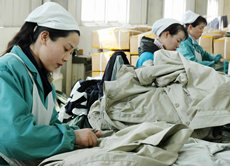 Enterprises in the garment industry have indicated plans to set up new production bases in the next three years Enterprises in the garment industry have indicated plans to set up new production bases in the next three years
The shortage of mainland migrant workers hit the headlines after the Lunar New Year, with reports describing the problem as even more acute this year. Shanghai reportedly dispatched hundreds of buses to bring workers back from provinces that were large sources of migrant workers. Preliminary estimates suggested that Guangdong Province alone would be short one million workers after the New Year.
To all manufacturers operating in the Pearl River Delta (PRD), labour shortages are a chronic problem, and raising wages to retain workers is often deemed inevitable. The PRD’s labour shortages are attributed to structural changes in society and the economy. Given the changing structure of the region’s population, the number of people joining the workforce overall has dropped. By contrast, job opportunities in the central and western regions are surging, prompting more migrant workers to find jobs in places nearer their hometown.
Cost Advantages
The labor issue is only one of many changes in the coastal investment environment. Other factors, including local industrial and land policies, are also putting pressure on manufacturers.
Given this changing business environment, most Hong Kong manufacturers are trying to upgrade their operations, improving production technology, raising product quality, launching new products or developing their own brands. Other companies are choosing to relocate part of their production lines to the inland regions that have more plentiful labour. Some large-scale major OEM enterprises, such as Taiwan-headquartered Foxconn and Inventec, have moved some of their production lines inland as far away as Chongqing.
With relatively lower land, water, electricity and labour costs, inland regions hold strong cost advantages. There is still a gap between some central and western regions and the coastal areas, in terms of average worker salaries. For instance, workers’ average wages in Jiangxi Province from January to September 2010 were only about 70 per cent of their counterparts’ in Guangdong Province.
Decentralising Production
Manufacturers generally don’t hold out much hope that the difficulty in recruiting workers can be overcome by moving inland. Yet, as more migrant workers seek jobs in their own neighbourhoods, some enterprises, particularly in such labour-intensive sectors as the garment industry, have begun to decentralise.
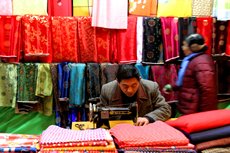 Certain cities in inland provinces have proven attractive to foreign investment Certain cities in inland provinces have proven attractive to foreign investment
Production processes are carried out at smaller production points located across regions with sufficient labour supply, instead of operating a large production base in the PRD or other locations. By doing so, manufacturers hope they can recruit more workers.
Choi Koon-shum, Chairman of the Chinese General Chamber of Commerce in Hong Kong, said that Hong Kong investors relocating their production facilities share a common trait: their operations are not relocated in one go.
Instead, most investors tend to move gradually, with some production processes relocated first. Mr Choi added that subsidiary factories may also be set up in other provinces, a process he described as “relocation with increased production activities.”
Enterprises adopting this strategy will retain the PRD as their main production base. Some of the high-tech processes and packaging activities, particularly for products where transport costs differ significantly before and after packaging, are carried out in the PRD. Low-tech processes are moved elsewhere, usually near Guangdong, where transport links are more convenient, minimising time and cost.
Likely Movers
A survey by the HKTDC revealed that, although there had not been a massive wave of relocations among Hong Kong companies with PRD production facilities, some were considering expanding production to other mainland regions.
Among companies with ongoing production activities in the PRD, 6.2 per cent said they planned to embark on new mainland production activities over the next three years. The PRD was their main choice of location, followed by areas in Guangdong Province (other than the PRD) and inland provinces near Guangdong.
Among sectors selected, a higher proportion of labour-intensive industries plans to start new production activities in other regions. The garment industry is one example, with 14.3 per cent of surveyed enterprises indicating a plan to establish new production bases over the next three years.
Among them, more than 30 per cent would choose a location in Guangdong other than the PRD or in such neighbouring provinces as Jiangxi and Hunan.
In the electronics industry, which has higher technology content, only 5.7 per cent of respondents said they planned to establish new production bases over the next three years. Textiles and printing and packaging are two other industries where a relatively higher ratio of respondents planned to set up new production bases. These two sectors typically have to follow their clients on relocation.
Inland Relocation
China’s Ministry of Commerce recently designated alternate locations in a bid to coordinate regional economic development and promote the transformation and upgrading of processing trades in the central and western regions. To encourage industries in the coastal areas to move inland, the Central Government announced 44 pilot sites for relocating processing trade activities in the central and western regions.
After years of development, the PRD has grown into one of the world’s most efficient industrial clusters, and relocation on a massive scale within a short period will not be easy. Macro-statistics in the past few years reveal that, in addition to the northern, eastern and western flanks of Guangdong, some inland provinces, particularly those in the central region and close to Guangdong, have been successful in attracting relocated industries.
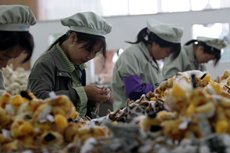 Average pay for workers still lags in central and western regions compared to their counterparts in coastal areas Average pay for workers still lags in central and western regions compared to their counterparts in coastal areas
Some manufacturers have noted that northern Guangdong, along with Jiangxi and Hunan provinces, could assume an increasingly important role as “the factory at the back” for Hong Kong’s manufacturing sector.
Figures for the actual growth of foreign direct investment in recent years also show that regions in the proximity of Guangdong, such as Jiangxi, Hunan and Guangxi, have performed extremely well, while central regions such as Hubei and Henan have also recorded reasonably good growth.
These regions outperformed the entire nation – and even Guangdong – in soliciting foreign direct investment. Certain cities in these inland provinces were particularly good in wooing foreign investment. For instance, Chenzhou in Hunan Province is relatively close to Guangdong, and its foreign investment soared by an annual average 17 per cent from 2006 to 2010, making it Hunan’s second-largest city for attracting foreign investment.
Ganzhou in Jiangxi Province, another city near Guangdong, was second to Nanchang, Jiangxi’s provincial capital, for luring foreign investment. There are signs of foreign investment penetrating further north in their entry to inland provinces.
Yongzhou, in Hunan Province, registered a 25 per cent average annual growth rate for foreign investment in 2008 and 2009; this climbed a further 39.5 per cent in the first nine months of 2010.
Similarly, Ganzhou in Jiangxi Province witnessed a 20 per cent increase in foreign investment in the first 11 months of 2010. Ji’an, another city further north, recorded a 16.7 per cent foreign investment growth rate in 2009, and a 17.8 per cent increase in the first 11 months of 2010. In Shangrao, a city even further north, a 30 per cent increase in foreign investment was reported over the same period. Hong Kong companies could benefit from watching these trends closely.
March 18 2011
Here’s the Plan - China's 12th Five-Year Plan: Hong Kong's Advantage
 Hong Kong has a significant role in the Central Government’s latest Five-Year Plan, unveiled this month Hong Kong has a significant role in the Central Government’s latest Five-Year Plan, unveiled this month
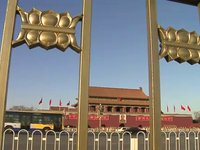 View Video Presentation Online http://www.vimeo.com/21160300 View Video Presentation Online http://www.vimeo.com/21160300
It used to be said that highly flexible economies like Hong Kong’s didn’t “do” five-year plans. But given the impressive achievements of the Chinese mainland’s economic reforms, Hong Kong would do well to reconsider that idea.
Hong Kong’s advantages, with its fine natural port and international levels of trade and finance, are well-suited as a platform for the mainland. It has attracted investment and capital and served as a mighty anchor for the entire country’s export drive.
Hong Kong’s economy has flourished by keeping pace with the mainland’s economic development – and it’s been in lock step for years. The many opportunities offered by the mainland market have also provided early opportunities to key Hong Kong industries, including banking, logistics and professional services.
While manufacturing now accounts for only 2.5 per cent of Hong Kong’s economy, local manufacturers have not vanished, but simply changed position. They have seized the moment, taking full advantage of the Pearl River Delta’s (PRD) proximity and low production costs. They have expanded vigorously while fuelling the growth of Hong Kong’s services sectors and export trade.
The 12th Five-Year Plan (FYP), which runs until 2015, is designed to deepen the mainland’s economic reforms, introducing fundamental changes to the country’s development model. Under the FYP, strategic adjustment of the economy will get underway. The FYP will boost domestic consumer demand, raise the contribution of the services sector and lift the level of urbanisation.
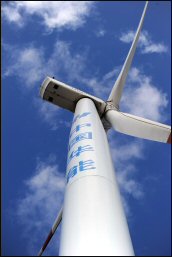 Green technology is one of the seven strategic industries set out by the Central Government’s latest Five-Year Plan Green technology is one of the seven strategic industries set out by the Central Government’s latest Five-Year Plan
The mainland intends to develop one of the world’s largest domestic markets and, at the same time, construct seven strategic emerging industries, as well as a services sector and a sustainable economic model. Those seven key industries are green technology; next-generation information technology; biotechnology; high-end equipment manufacturing; alternative energy; alternative materials; and alternative-energy vehicle industries. Hong Kong’s future may well depend on its ability to capitalise on these opportunities, and keep pace as the mainland moves to another level of reform.
Changing Consumer Patterns
As many leading commentators have noted, the world’s economic centre of gravity is shifting to Asia. So, too, is consumption growth. Personal consumption in Asian countries has risen markedly over the past 10 years; on the mainland alone, total personal consumption as a percentage of world consumption climbed to five per cent in 2009 from 2.8 per cent in 2000.
The scale of the mainland’s personal consumption is only one-sixth that of the United States, but the increase in its share will produce significant effects. For example, the mainland became the world’s largest car consumer market and the second-largest luxury market in 2009, attracting large-scale development by many retailers and brands from Europe, the US and Japan, as well as South Korea and Taiwan.
Hong Kong companies have always considered the mainland a manufacturing heartland, producing goods mainly for export. But with the expansion of the mainland consumer market, spending power is rising, and Hong Kong should adjust to take advantage of it.
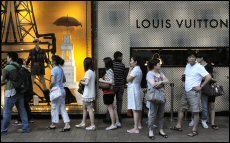 Global brands are drawn to the growing spending power of Chinese mainland consumers Global brands are drawn to the growing spending power of Chinese mainland consumers
Consumer awareness and concepts are maturing on the mainland, giving Hong Kong companies new opportunities to develop domestic sales, build sales channels and establish brand names that will magnify value-added goods and services.
HKTDC surveys have found that mainland middle-class consumers have a particularly good impression of Hong Kong products, rating them highly for quality and design. Hong Kong is seen as a fashion centre, giving it an edge over mainland markets. Fast-growing mainland towns and cities are conducive to better-run regional distribution networks, helping solve the scattered distribution channel problems of the past. On a broader level, urbanisation continues to drive opportunities for investment and employment growth, raising people’s incomes and spending power.
Judging from consumer figures in the coastal cities, urbanisation will bring changes in the demand for goods, and the development of towns and cities will stimulate consumption of services. These services will include catering and entertainment. And urbanisation will create demand for other services such as property management, cold chain logistics, mass transportation and garbage disposal.
Adjusting Strategies
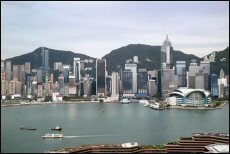 Hong Kong’s diversified financial services can provide the necessary capital for mainland technology projects Hong Kong’s diversified financial services can provide the necessary capital for mainland technology projects
China’s young population is likely to peak in 2011, with the overall labour force expected to decline from 2015 on. The continuing arc of the mainland’s urban growth, increases in employment opportunities in the central and western regions, and rural workers’ lower incentive to seek employment outside their home provinces are other developing trends.
All this will mean continuing labour shortages in the PRD, which already faces other challenges, particularly rising production costs and competition from inland provinces and cities. These factors should see increased investment by multinationals and large Chinese enterprises in the central and western regions, gradually resulting in the formation of new manufacturing clusters.
Whether approached from the point of view of the production chain or from domestic sales considerations, there is but one conclusion: there will be increasing incentives for Hong Kong manufacturing enterprises to move inland from the PRD.
Nevertheless, there may well be renewed interest in the PRD or, more broadly, on the mainland, for Hong Kong services. Much depends on their level of expertise and applicability. The expertise to steer high-end industrial chains, set up regional headquarters, R&D and distribution centres and form services sectors in major coastal cities pose strong competition to Hong Kong’s professionals in these areas.
Indeed, it’s worth considering whether Hong Kong’s services can cope with the development needs of the mainland’s seven strategic emerging industries. In any case, Hong Kong companies should brace themselves for these changes as early as possible.
Importing Technology
Under the FYP, advanced technology and innovation will serve as a cornerstone for changing China’s economic development model. Hence the seven strategic emerging industries all focus on fostering and developing scientific and technology content.
In certain technology areas, the mainland is level with or even ahead of mature economies. But in terms of overall scientific research activity, it lags behind advanced countries. As a result of the technology gap, the mainland still needs to bring in key technology to support its industrial development.
For instance, if the mainland achieves its target of building a resource-efficient, environmentally friendly society, it would need a lot of environmental technology. According to a United Nations research report, the mainland needs 62 key specialised and general technology to undertake energy-saving and emission-reduction tasks. But in about 70 per cent of these areas, it still has not mastered the core technology and will have to rely on imports.
Hong Kong is the mainland’s window for procuring technological products and possesses extensive experience in assembling technological cooperation overseas. Coupled with well-regarded intellectual property rights laws, the city is able to introduce foreign technology through technology transfers, licensing and other means. Hong Kong’s diversified financial services, such as venture capital funds, can also provide the necessary capital for mainland technology projects.
During the FYP period, increasing numbers of mainland companies will seek listings and funding in Hong Kong as the mainland transforms its manufacturing industries and steps up its “going out” strategy.
The Framework Agreement on Hong Kong/ Guangdong Cooperation, signed last year, will likely be used to help implement various pilot cooperation projects. The Agreement suggests setting up a financial cooperation zone, with Hong Kong as a leader. In addition, Hong Kong is emerging as an offshore renminbi centre. Both initiatives would be favourable to Hong Kong’s continuing development as an international financial centre.
January 4 2011
 Hawaii's Brain Drain - Isles lose many of ‘the best and brightest’ The mainland offers graduates more money, opportunities and prestige
By Lavonne Leong Special to the Star-Bulletin (3-24-1999) Hawaii's Brain Drain - Isles lose many of ‘the best and brightest’ The mainland offers graduates more money, opportunities and prestige
By Lavonne Leong Special to the Star-Bulletin (3-24-1999)

An article almost 12 years ago could change the date and still apply to Hawaii today...100s
of our smartest and brightest continue to leave Hawaii monthly.
Recent University of Hawaii graduates in finance were asked, "What advice would you offer current and soon-to-be graduating students in your major?"
Almost 25 percent responded, "Move to the mainland."
More students are taking that advice as they survey Hawaii's economic landscape. While a lot of the perception of a "brain drain" is anecdotal, numbers back it up.
Census reports released late last year show that in a 1997 and 1998 period almost 17,000 more people moved from Hawaii to the mainland than moved from the mainland to Hawaii.
Hawaii's population growth rate is third-lowest in the United States, extraordinary given Hawaii's high birthrate and high foreign immigration.
And Hawaii Data Book figures show a gradual rise in the average age of Hawaii's citizens, indicating that those who leave are disproportionately young.
"In the earlier days, I think that everybody pretty much wanted to stay home," said Dr. Eleanor Len, director of career services at UH. "Now I think they're beginning to say, 'I'm willing to go to the mainland.' "
Some experts are reluctant to use the term "brain drain."
 Nicholas Ordway, professor of financial economics and institutions at UH, would rather talk about the "education drain." Nicholas Ordway, professor of financial economics and institutions at UH, would rather talk about the "education drain."
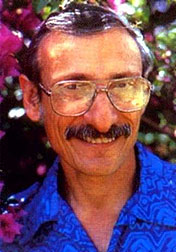 Ira Rohter, UH associate professor of politics, preferred to talk about the "soul drain," but added, "I think there is a real brain drain in Hawaii if you mean ... that the best and the brightest are leaving." Ira Rohter, UH associate professor of politics, preferred to talk about the "soul drain," but added, "I think there is a real brain drain in Hawaii if you mean ... that the best and the brightest are leaving."
Ordway described the typical mainland-mover as young and well educated. "Many of the recently educated or soon-to-be educated college-age students are leaving and probably will never come back to Hawaii, except to visit with family," he said.
The economy is the reason cited most often for the exodus, but not always for the obvious reasons. Statistics first started showing more workers leaving for the mainland than coming here in 1987 -- a year the economy was booming. Every year since then has recorded a deepening trend toward people leaving.
Ordway said the brain drain has become an issue "because of a series of dynamics that came together and created high-housing prices, low-paying jobs and a lack of opportunity. We can place any graduate from UH in any major job any place except in Hawaii."
Yet the economy is only one of a number of reasons why people leave and stay away.
About 5 percent of Waipahu High's graduates attend mainland colleges. About 10 to 15 percent of Roosevelt High's college-bound students go to the mainland. And although UH is the single school that receives the most Punahou students, 87 percent of the Punahou class of 1998 left Hawaii to attend college.
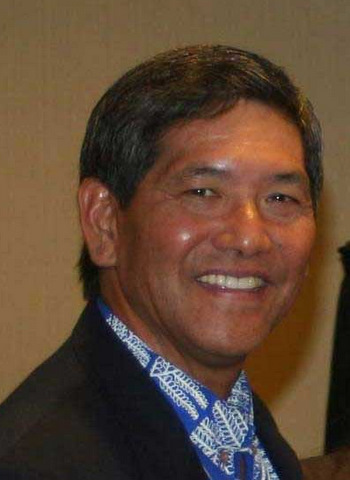 "A large number of kids (nationally) go to college within a 500-mile radius," said Myron Arakawa, Punahou's director of college counseling. "Well, for Hawaii kids, 500 miles is in the middle of the Pacific. It's not abnormal for Hawaii students to want an adventure away from home. Unfortunately, 'away from home' is awaaay from home." "A large number of kids (nationally) go to college within a 500-mile radius," said Myron Arakawa, Punahou's director of college counseling. "Well, for Hawaii kids, 500 miles is in the middle of the Pacific. It's not abnormal for Hawaii students to want an adventure away from home. Unfortunately, 'away from home' is awaaay from home."
 That's not necessarily bad. Students who go to the mainland for college "have so many different and new positive experiences that they feel that those who stay back may not have had the chance to get involved in," said Lillian Yonamine, counselor for Waipahu High. "They feel, 'Oh wow, my friends (who stayed in Hawaii), they seem like they're still in high school.' " That's not necessarily bad. Students who go to the mainland for college "have so many different and new positive experiences that they feel that those who stay back may not have had the chance to get involved in," said Lillian Yonamine, counselor for Waipahu High. "They feel, 'Oh wow, my friends (who stayed in Hawaii), they seem like they're still in high school.' "
That's fine, said Rohter. "The problem is coming back."
Most high-schoolers leaving for college on the mainland intend to return. Rory Padeken, a sophomore at Punahou, thinks he might want to go to Stanford. "It's away from home but not too far away," he said. "Hawaii's home."
But Roosevelt High counselor Nancy Scarci said that intending to return when Hawaii is all you've ever known is one thing; actually returning, after building another life elsewhere, is another.
"I think 'eventually' is the key thing," she said. "They want to come back 'eventually.' A lot of them say 'I want to raise my family here,' or 'When I get married, I want to come home.' "
Passing milestones
Once they become tracked into mainland life, however, the urge to return diminishes.
"By that time -- this is maybe 10 years after they graduate -- (moving back) is a nice idea but then he looks at the size of the house, you look at job opportunities ..." Scarci said.
Those who put down roots on the mainland are least likely to return. Putting down a root can mean passing any of the big milestones: marrying, buying a house, having children. Students who are waiting for the right career opportunity to surface in Hawaii have found it difficult to postpone building a life wherever they are.
"They've bought homes. They're raising their kids," said UH's Len.
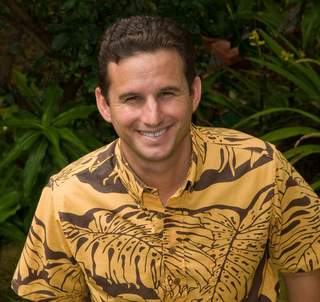 State Rep. Brian Schatz, 27, said many of Hawaii's children leave before they have had a chance to participate in an adult Hawaii: "When you're 18, 21, you go to other people's events. As you get older, you start giving them -- you are the party, you are the community organization." State Rep. Brian Schatz, 27, said many of Hawaii's children leave before they have had a chance to participate in an adult Hawaii: "When you're 18, 21, you go to other people's events. As you get older, you start giving them -- you are the party, you are the community organization."
For those who have moved to the mainland, Hawaii has often become just a distant place to go for food, sun, and a quick shot of ohana -- a vacation spot, fraught with rumors of a bad economy and gridlocked politics.
"When I went to school in Texas," said Ronald Atienza, "I built enough of a life there that I missed Hawaii less and less. People leave Hawaii for one reason, then become attached to their new home for another."
Hawaii can fall victim to its own easygoing image as a tourist escape from the real world.
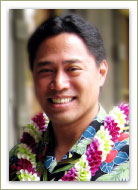 "I think people equate staying here with a lack of drive," said Kippen Chu. After graduating from the American University in Paris, Chu returned to Hawaii and now works in the state Legislature. "It's like, 'Oh you just want to stay here so you can go beach every day.' " "I think people equate staying here with a lack of drive," said Kippen Chu. After graduating from the American University in Paris, Chu returned to Hawaii and now works in the state Legislature. "It's like, 'Oh you just want to stay here so you can go beach every day.' "
The fashion lag -- the feeling that Hawaii finds fads just as the mainland is abandoning them -- contributes to the peripheral feeling, said Vu Van, a junior at UH. "New York sets the trends, then they move down to Los Angeles, and then Hawaii gets it six months afterwards."
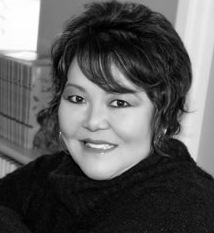 "We believe, and we've always believed, that we're five steps behind," said nationally acclaimed author Lois-Ann Yamanaka. "It's the 'You're only good [enough] to be on this rock' mentality. It's ingrained. And when your neighbor's kid goes to Stanford and you had to stay in Hilo College -- I mean, heaven forbid! To me it's sad because I felt that way." "We believe, and we've always believed, that we're five steps behind," said nationally acclaimed author Lois-Ann Yamanaka. "It's the 'You're only good [enough] to be on this rock' mentality. It's ingrained. And when your neighbor's kid goes to Stanford and you had to stay in Hilo College -- I mean, heaven forbid! To me it's sad because I felt that way."
Many assume that it's impossible or unambitious to live in Hawaii, and they leave even before they have looked for jobs here. "Part of it is the economic situation in our state, but there's also a psychology among young entrepreneurial people about different cities," Schatz said. "People are very fickle about what cities they think are hip. Sure, there are more jobs in San Francisco, but part of the reason that there are more jobs there is that everyone is going there to start businesses, to be entrepreneurial."
The heady "playing with the big boys now" feeling associated with a mainland job can make a job in Hawaii seem less desirable. "When it comes to class reunion time," said Chu, a Punahou '83 graduate, "it's much more prestigious to say that you're a communications consultant for Boeing in Seattle than a marketing specialist for Bank of Hawaii."
Schatz said the media's magnifying glass on economic woes can augment the problem: "I think the media does a disservice to local kids sometimes by exaggerating our economic problems and focusing on what's not possible rather than focusing on what's possible."
The brain drain can be a vicious circle: A perceived lack of opportunity makes people look elsewhere for jobs. They leave, so the skilled work force diminishes. Then companies coming in decry the lack of a skilled work force and fill skilled positions with non-Hawaii employees.
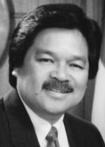 "We would be able to keep more of our people here if some of the captains of our industry here made it a point to hire people from here rather than bring people in," said Gov. Ben Cayetano. "We would be able to keep more of our people here if some of the captains of our industry here made it a point to hire people from here rather than bring people in," said Gov. Ben Cayetano.
Financially, said Ordway, the brain drain "probably reinforces a single-industry state, i.e. tourism, which doesn't depend on that many well-educated individuals. It is probably making Hawaii less attractive to high-tech industries."
Lack of innovation
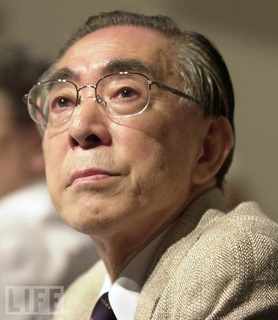 Ordway also said he thinks the brain drain is partly responsible for a dearth of innovation here. Given Hawaii's wealth of scientific natural resources, scientific breakthroughs like Ryuzo Yanagimachi's cloned mice should not be isolated incidents.
"Hawaii is producing about one-fourth to one-fifth the number of patents it should, given the size of its population," said Ordway, "and despite the fact that we have a comparative advantage in astronomy, biology, botany." Ordway also said he thinks the brain drain is partly responsible for a dearth of innovation here. Given Hawaii's wealth of scientific natural resources, scientific breakthroughs like Ryuzo Yanagimachi's cloned mice should not be isolated incidents.
"Hawaii is producing about one-fourth to one-fifth the number of patents it should, given the size of its population," said Ordway, "and despite the fact that we have a comparative advantage in astronomy, biology, botany."
The total population will also get older. "The migration is not symmetrical; it's asymmetrical towards the younger ages. So what is happening is that the overall population in Hawaii is aging," said Ordway.
 If Hawaii continues on this path, UH Law professor Randall Roth's projections for five years down the road are grim. He described a changed Hawaii, with less aloha spirit and fewer people with roots in Hawaii. People have continued to move to Hawaii from elsewhere, but "their life experiences and values are not identical to those of the folks whose places they took. If Hawaii continues on this path, UH Law professor Randall Roth's projections for five years down the road are grim. He described a changed Hawaii, with less aloha spirit and fewer people with roots in Hawaii. People have continued to move to Hawaii from elsewhere, but "their life experiences and values are not identical to those of the folks whose places they took.
Typical case: Wed outside Hawaii; may never return
 Lavonne Leong is a 1993 graduate of Punahou. She received a bachelor's degree in English from Barnard College and is now in the third year of a doctoral program in English literature at Oxford University in England.
In many ways, she is the embodiment of Hawaii's brain drain. Asked about her future plans, she said: Lavonne Leong is a 1993 graduate of Punahou. She received a bachelor's degree in English from Barnard College and is now in the third year of a doctoral program in English literature at Oxford University in England.
In many ways, she is the embodiment of Hawaii's brain drain. Asked about her future plans, she said:
"Do I want to move back to Hawaii? The answer is yes, but I guess I'm your typical case. I spent several years building a life away from Hawaii, and married an Englishman, who agreed to move back to the U.S. with me, but feels Hawaii would be an ocean too far unless there was something really good there for both of us.
"So I guess you could say something like, 'After her doctorate, she plans to move somewhere in the western half of the United States with her husband to pursue an academic and writing career.' "
December 2 2010
簽證貴 團費高 缺直航機 中國人到夏威夷觀光障礙多
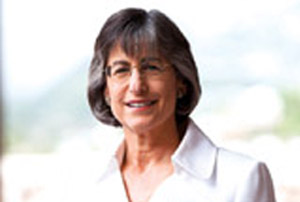 州長林格曾積極爭取直航機往來中國與夏威夷,但未有結果。
州長林格曾積極爭取直航機往來中國與夏威夷,但未有結果。
北京居民王先生(Benny Wang)和妻子趙氏(Echo
Zhao)想去海邊旅遊時,由於進出韓國比較容易,因此選擇韓國。其實,兩人一直夢想來夏威夷旅遊,只是受到旅行限制和成本高昂而無法成行。
據《檀香山星廣告人報》報道,他們不是唯一有這種做法的旅客。夏威夷雖是世界頂級觀光地點,在爭取中國旅客的工作上,也遭逢現實世界的諸多阻礙。
2009 年中國外遊旅客人數增長至
4,000 萬人,其中僅約
45,000
人到夏威夷。據夏威夷觀光局表示,雖然中國觀光人數迅速大幅增長,估計今年和明年來夏威夷的旅客人數大概仍只有
63,000 萬人和
85,000 萬人。
在北京美國大使館對面的
Pegasus & Taihe
國際娛樂公司工作的趙女士嘆氣說:「到夏威夷實在很困難。」她說,美國政策規定,旅客必須親自接受面試才能取得旅遊簽證,每天從早上到晚上
6
時前,使館外面都有申請人排成長龍等候面試。
縱使費盡千辛萬苦取得簽證,還有另一障礙:沒有直航班機。旅遊業者指出,目前到夏威夷必須在首爾、東京或三藩市轉機,頗費周章,原本的5日遊結果只剩3天可用來觀光。
此外,由於變數頗多,組織旅行團的公司很難保證中國海南航空或其他航空公司會提供到夏威夷的機位。業者透露,目前有2、3
家公司可包機直飛夏威夷,但成本一般來說相當高,單程價格就高達
40 萬元。
業界原本預期海南航空今年第二季會開闢北京直飛檀香山的航班,但最後落空,海南航空改而開闢直飛新加坡、河內、曼谷和布吉島等其他旅遊地點的航線。海南航空將重點放在新興旅遊市場,甚至使得該公司原來直飛夏威夷的包機服務受到影響。
爭取中國直飛夏威夷的航空服務,曾被林格州長視作優先考量工作,她四度到中國訪問,促進雙方的了解,並與海南航空管理層在夏威夷見面,討論他們提出的著陸費等費用打折的要求。但雙方未達成共識,預料在林格州長於下月卸任時,此事仍將懸而未決。
中國有旅遊業界人士稱,美國簽證費太高也是令人不想來夏威夷的原因,目前申請美簽的費用大約220美元,澳大利亞簽證只要
117 美元,日本簽證
44
美元,俄羅斯簽證 29
美元,歐洲簽證
73 美元。
在成本方面,平均5天3夜的夏威夷觀光團,包含機票、住宿及交通等的團費為
2,924 美元。與之相比,馬來西亞7日遊只需
548 美元。
November 2 2010
Hong Kong US$5.16 billion Cultural Vision
“Iconic, world class and for everyone – that is our mission,” said Sir Norman
Foster, acclaimed architect, chairman and founder Foster + Partners, of his
vision for Hong Kong’s groundbreaking West Kowloon Cultural District (WKCD).
Described as the world’s most ambitious
cultural project, the plan to transform 40 hectares of prime waterfront land on
Hong Kong’s iconic harbor to an arts and leisure precinct housing a modern art
museum, theatres, concert halls and other performance venues, has gained
worldwide attention.
Following an open tender process, three firms were commissioned in July 2009 as
conceptual plan consultants:
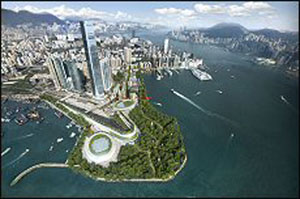 Foster + Partners of London, led by Sir Norman; Dutch firm Office for
Metropolitan Architecture (OMA), led by principal Rem Koolhaas; and Hong Kong
firm Rocco Design Architects Ltd, led by Rocco Yim.
Foster + Partners of London, led by Sir Norman; Dutch firm Office for
Metropolitan Architecture (OMA), led by principal Rem Koolhaas; and Hong Kong
firm Rocco Design Architects Ltd, led by Rocco Yim.
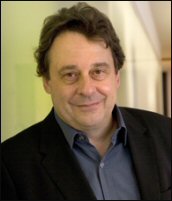 Graham Sheffield, CEO, West Kowloon
Cultural District Authority Graham Sheffield, CEO, West Kowloon
Cultural District Authority
With their conceptual plans now open for public comment, Graham Sheffield,
formerly of London’s Barbican Centre, has taken up his new position at the West
Kowloon Cultural District Authority. As CEO, Mr Sheffield will lead and manage
the artistic and operational initiatives related to the development of the WKCD.
The scale of the three firms’ involvement is
immense. In addition to a 30-plus strong team in Hong Kong and London, Foster +
Partners set up a 25-member advisory board especially for this project, made up
of leading practitioners and thinkers from the world of art and culture,
including visual and performance artists, curators, film-makers, academics,
media and management experts. “Together with the project team, the advisory
board provides informed and independent judgement, critical to a project of this
scale and ambition,” said Colin Ward, Architect and Partner, Foster + Partners.
OMA dedicated a team of 20 members in Hong Kong, led by David Gianotten, General
Manager, OMA Asia. Rem Koolhaas was in Hong Kong one week each month during the
design process, assisted by a team member working from the Rotterdam
headquarters. “But next to the OMA team, we had a large team of sub-consultants
of expert cultural, financial, technical and political advisors, with more than
60 people in total,” said Mr Gianotten.
Benchmark for Asia
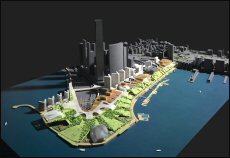 Rocco Design’s concept comprises three
integrated layers: Green Terrain, City Link, Cultural Core Rocco Design’s concept comprises three
integrated layers: Green Terrain, City Link, Cultural Core
The architects said the project will lift Hong Kong’s international profile and
set a new benchmark as the cultural hub of Asia.
“West Kowloon Cultural District is the world’s most ambitious cultural project,”
said Mr Ward of Foster + Partners. “International visitors will experience
unrivalled cultural venues as Hong Kong is projected onto the global stage,
reaffirming its unique culture and position as Asia’s World City. Importantly,
it will also provide Hong Kong with an unprecedented opportunity to enhance
home-grown talents in the arts by nurturing the artists of tomorrow and
inspiring a new generation of arts managers and performers.”
 The OMA’s Mr Gianotten agreed. The OMA’s Mr Gianotten agreed.
David Gianotten, General Manager, OMA Asia “West Kowloon Cultural District is a
unique project of its kind in the world, in terms of both size and amount of
investment by the government,” he said. “The project provides an opportunity for
Hong Kong to recognise the city’s local arts and culture, and to elevate the
public’s appreciation towards arts and culture.”
The scale and scope of the project also
highlights opportunities for Hong Kong-based and overseas firms to contribute a
wide range of specialized expertise.
Opportunities Across the Board
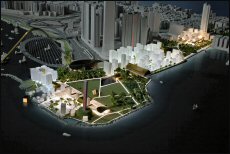 OMA’s plan is for three villages nurturing
all aspects of the creative process OMA’s plan is for three villages nurturing
all aspects of the creative process
Mr Gianotten said that the two major components of the project – 40 per cent
cultural facilities and 60 per cent commercial – opened business opportunities
not only related to arts and culture, but in urban planning , design,
construction, green energy, curatorship, art administration, education, art
production, retail dining and entertainment, tourism and transport. “These
opportunities will be local, regional and international,” he said, adding that
the project would play a key role in the city’s economy.
“It is foreseeable that a large number of experts from both local and overseas
are needed. Since everything on this 40-hectare site will be new, it needs a
collective effort from around the world to realise all the ambitions. It is a
good time to get as much expertise as possible involved now, in the early stages
of the project.”
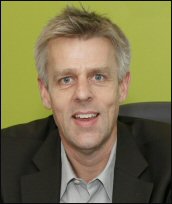 Colin Ward, Architect and Partner, Foster +
Partners Colin Ward, Architect and Partner, Foster +
Partners
Mr Ward said the Foster + Partner project team illustrates the diverse range of
disciplines required for a project of this magnitude; namely architecture,
engineering, landscape design, town planning, retail design, property
management, financial management, theatre design, arts and cultural advisory,
public relations and marketing. “Another key area – because our City Park will
be the world’s first carbon neutral cultural district – is green energy and
environmental technology for renewal energy waste and water,” he said, adding
that the WKCD will be “an example to the world on how a cultural district should
be created.”
“It is vast on every scale, including opportunities for overseas firms with the
right skills, technology and expertise. From the hardware: design, construction,
infrastructure – to the software: arts programming, education, management – the
HK$21.6 billion cultural district is one of the most ambitious projects in the
world,” he said.
Public Consultation
The three conceptual plans are open for public opinion until 20 November 2010.
One of the three plans will be selected by the West Kowloon Cultural District
Authority, taking into account the public’s feedback, and potentially
incorporating components of the other two plans. The selected plan will form the
basis for the preparation of a detailed master plan, tentatively scheduled to be
unveiled in 2011.
Following further public consultation, the detailed master plan will be
fine-tuned and submitted to the Town Planning Board for consideration.
October 27 2010
Tracking Corporate Sustainability - Hong Kong Launching the Hang Seng
Corporate Sustainability Index Series
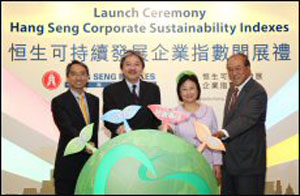 (Left to right) Vincent Kwan,
Director and General Manager of Hang Seng Indexes Company Ltd; Hong Kong
Financial Secretary John Tsang; Margaret Leung, Hang Seng Bank Vice Chairman and
Chairman of the Hang Seng Indexes Advisory Committee; Peter Wong, Chairman of
RepuTex (HK) Ltd (Left to right) Vincent Kwan,
Director and General Manager of Hang Seng Indexes Company Ltd; Hong Kong
Financial Secretary John Tsang; Margaret Leung, Hang Seng Bank Vice Chairman and
Chairman of the Hang Seng Indexes Advisory Committee; Peter Wong, Chairman of
RepuTex (HK) Ltd
The Hang Seng Corporate Sustainability Index Series joins the FTSE4Good Index
and the Dow Jones Sustainability Index in tracking the stock price and ethical
performance of Hong Kong and Chinese mainland stocks.
“With the launch of the Corporate
Sustainability Index Series, we are providing an objective and highly visible
platform to be used by the investment community to promote socially responsible
investment products,” said Vincent Kwan, Director and General Manager of Hang
Seng Indexes Company Ltd, a wholly owned subsidiary of Hang Seng Bank.
The Hang Seng Corporate Sustainability Index Series comprises three indexes: the
Hang Seng Corporate Sustainability Index (HSSUS), Hang Seng (China A) Corporate
Sustainability Index (HSCASUS), and Hang Seng (mainland and Hong Kong) Corporate
Sustainability Index (HSMHSUS).
The HSSUS and HSCASUS indexes are made up of the top 30 high-performing
environmental, social and governance (ESG) companies in Hong Kong and the top 15
mainland companies. A total of 538 companies – 274 Hong Kong firms and 264
mainland A-share companies – were analysed by RepuTex Hong Kong Ltd, an
independent analytics and advisory firm that specialises in sustainable risk
analysis, from December 2009 to April 2010.
 Hugh Grossman, Executive Director,
RepuTex Hugh Grossman, Executive Director,
RepuTex
Hugh Grossman, Executive Director of RepuTex, an Australian company
headquartered in Hong Kong, said only the top ESG companies and those that met
the Hang Seng Indexes (HSI) market capitalisation, turnover and listing history
criteria were eligible. Stringent assessment was also carried out in the four
key categories of corporate governance, environmental impact, social impact and
workplace practice.
“The selection criteria of identifying the best sustainability performers based
on the environment, social and governance factors is on par with the Dow Jones
Sustainability Index and the FTSE4Good constituent companies, while providing
the market with highly liquid exposure to Hong Kong and China markets,” said Mr
Grossman.
He added that companies with good corporate governance are likely to have better
risk processes in place and a more effective management. “These proactive
companies are best positioned to take advantage of new market opportunities and
generate more positive returns for their stakeholders with lower risk.”
Sustainable Shipping
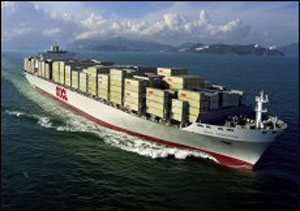 Global shipping giant Orient
Overseas (International) Ltd - (OOIL) is one of the 30 constituents in the Hang
Seng Corporate Sustainability Index Global shipping giant Orient
Overseas (International) Ltd - (OOIL) is one of the 30 constituents in the Hang
Seng Corporate Sustainability Index
Orient Overseas (International) Ltd (OOIL) is one of the 30 constituents in the
HSSUS Index. It owns one of the world’s largest international integrated
container transport business, which trades under the name OOCL. OOIL’s Chief
Financial Officer, Ken Cambie, said the Group has always performed well in ESG
issues. “OOIL’s corporate social responsibility (CSR) policy states that we
recognise that businesses must take responsibility for their industry’s effects
on the environment.”
“As we are a shipping and transportation company,” Mr Cambie added, “we believe
that saving fuel is the best way to save both money and emissions.”
CSR, he said, is very important for any company’s bottom line. “Some of our
customers only choose environmentally friendly carriers, so carriers like OOCL,
with good environmental performance strategies, will benefit in the long term.”
While it’s early days yet to predict on the success of the new socially
responsible investment (SRI) funds, Mr Grossman predicted that they will catch
on just as they have in Western financial markets.
“The reality is that this is a new investment concept in Asia,” he said. “The
FTSE4Good and Dow Jones Sustainability Indexes were launched in 2001 and 1999
respectively, and it has taken a decade to take off. But local Asian investors
are very astute in their desire to identify a good risk/returns story, so no
doubt, funds will grow as performance builds.”
SRI funds have expanded over time with expectation and have reached almost US$7
trillion, according to the Eurosif SRI Survey 2008. “The sustainability concept
will surely grow in Asia, so Hong Kong and China must get their feet in the door
first,” Mr Grossman said. “Already, we have 30 companies in HSSUS with global
best practices from an investment point of view and that is a great start.”
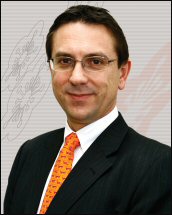 Ken Cambie, Chief Financial Officer,
Orient Overseas (International) Ltd Ken Cambie, Chief Financial Officer,
Orient Overseas (International) Ltd
Mr Cambie agreed. “Hong Kong, New York and London are likely to remain powerful
financial centres in the foreseeable future. We believe the number of
constituents in HSSUS will expand further and Hong Kong can develop to a level
on par with New York and London.”
Fund managers are expected to be cautious with the new index, at least
initially. “It would take time to come up with new financial products, and
investors would have to see how these companies perform or out-perform in HSSUS
over a period of time,” said Mr Kwan.
Sally Wong, CEO, Hong Kong Investment Funds Association, pointed out that in
Asia, particularly in the retail sector, the uptake of SRI products is
“relatively muted.” In Hong Kong, there have not been many green funds launched.
“A possible reason is that investors traditionally don’t associate the two,” Ms
Wong said. “People may readily take up ethical or socially responsible causes,
but instead of doing through investments, they tend to go down the route of
charity initiatives or other channels. They tend to see these not in keeping
with investments.”
Caring Investors
According to the Association for Sustainable & Responsible Investment in Asia,
many people fit the profile of SRI investors. “US and European market experience
indicates that SRI investors are often caring professionals, NGO workers and
charity foundations,” Mr Cambie said. “In Hong Kong, there is a sizeable pool of
potential SRI investors.”
Ms Wong said it’s an area where more investors, especially pension funds and
institutional investors, are attaching greater importance. “The approach has
evolved from a negative one to a positive one. In the past, the focus had been
primarily to screen out companies that are pollution-related or associated with
sweatshops or weaponry. But increasingly, the industry has moved on to one of
‘engagement overlay,’ that is, to proactively engage the company to factor in
social and ecological needs, such as a more eco-friendly approach in purchasing
and waste disposal, or implement policies for a better work-life balance.”
Ms Wong believes that more data should be available to show the causal
relationships between the ethical activity and the financial outcome. “As more
cases illustrate how these causes and outcomes are correlated, investors will
appreciate the value and warm to the idea. But, it probably takes time,” she
said.
Education, it appears, is the key. Hang Seng Indexes Company Ltd is taking part
in seminars in Hong Kong and around the region to raise greater awareness.
Mr Kwan said he is encouraged by the number of smaller firms that have been
enquiring about how they could be considered for inclusion in the HSSUS Index.
“I tell them to embrace the standards set up by the Index. RepuTex will do an
annual review of participating companies and if there is a chance, we might
include more companies,” he said.
October 13 2010
Blueprint for a New China
Urbanization on the Chinese mainland is advancing at an annual rate of one per
cent, which means that about 13 million people move from rural areas to cities
each year. The enormous changes to the country’s urban blueprint in the years
ahead are expected to create huge demand in the construction and engineering
sectors.
With more than 10 million people settling
into mainland cities every year, the demand for housing will be pressing. Based
on an average family of four, about 3.2 million mainly low-cost housing units
will be required every year.
Of the Rmb4 trillion economic stimulus rolled out by the Central Government at
the end of 2008, Rmb400 billion was earmarked for housing and the reconstruction
of shanty towns. The development of small- and medium-sized cities is intended
to strengthen the larger cities’ economic hinterland, spurring demand for
high-end consumption, housing, hotels and office buildings in smaller satellite
communities.
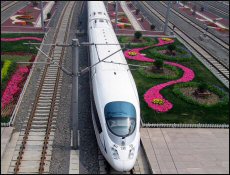 Fixed-asset investments in
the mainland’s transport infrastructure and real estate sectors by Hong Kong,
Macau, Taiwan and foreign companies have more than doubled in the four years to
2008 Fixed-asset investments in
the mainland’s transport infrastructure and real estate sectors by Hong Kong,
Macau, Taiwan and foreign companies have more than doubled in the four years to
2008
Hong Kong architectural firms, which excel at projects requiring advanced
technical requirements and complexity, are very much involved in the
construction boom, designing landmark buildings and multi-purpose complexes in
major cities. They’ve also drawn up blueprints for upmarket residential
developments and green buildings in smaller cities. One example is Hong Kong’s
Ronald Lu & Partners, which is working on Lake Dragon, a plush ranch-style
apartment and villa complex in Guangzhou, as well as luxury, residential houses
in Chengdu’s Splendid City and Dalian’s Maritime.
Transport Network Boost
Rural and urban differences, the mobility of rural migrant workers and urban
traffic congestion already pose big problems in mainland cities. Communities
have to upgrade their transportation networks to meet the needs of the Central
Government’s plan for coordinated urban and rural development, particularly
since the migration of the rural population to the cities is expected to
aggravate transportation demands.
Ministry of Transport data reveals that urban residents make eight to nine times
more trips than their rural counterparts. This makes planning for sound road and
railway networks vital for the development of small- and medium-sized cities and
wider strategic aims.
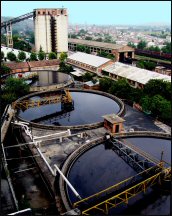 As greater numbers of people migrate to
the cities, there’s a corresponding increase in demand for public utilities such
as power, sewage treatment and garbage disposal As greater numbers of people migrate to
the cities, there’s a corresponding increase in demand for public utilities such
as power, sewage treatment and garbage disposal
Several Hong Kong companies are currently participating in mainland transport
projects. Most notably, Hopewell Highway Infrastructure Ltd, a unit of Hong
Kong’s Hopewell Holdings, built and is now operating the Guangzhou-Shenzhen
Superhighway and phases one and two of the Western Delta Route. Hong Kong’s Mass
Transit Railway Corp is participating in the construction of the Shenzhen Metro
Line 4 and the Beijing Metro Line 4.
Utilities Surge
With the increasing numbers migrating to cities, there’s a corresponding rise in
demand for public utilities, including power, sewage treatment and garbage
disposal.
China’s urbanization looks set to advance rapidly in the next few years,
exerting enormous pressure on public utilities. To meet demand, the Central
Government issued a set of opinions in 2002 aimed at accelerating municipal
public utility programmes and introducing capital-market financing to assist the
construction and operational effort.
Hong Kong Link
Hong Kong’s construction and engineering sectors have been participating in the
mainland market since the 1980s, bringing huge profits, particularly with the
continued growth in infrastructure and real estate investments.
Hong Kong players have evolved with the demands of the market: they have both an
international perspective and an intimate knowledge of the mainland. These are
key advantages when it comes to vying for projects financed by either Hong Kong
or foreign capital.
The mainland’s urbanisation programme is sure to attract more investment from
Hong Kong, Macau, Taiwan and overseas. In fact, in the four years to 2008,
fixed-asset investment in the mainland’s transport infrastructure and
real-estate sectors by Hong Kong, Macau, Taiwan and foreign companies more than
doubled, hitting Rmb10.9 billion and Rmb416.1 billion respectively. Fixed-asset
investment in public facilities also grew almost 30 per cent.
Projects in small- and medium-sized cities generally don’t feature high
technical requirements, but the Central Government has said that there should be
“rational layout” and “intensive development” among cities. In other words, the
development of these smaller cities will also drive the development of large
cities, forming hubs linking regions to the international arena. In turn, this
is expected to boost demand for upmarket commercial and residential projects by
people from the mega cities, offering new business opportunities for Hong Kong
companies.
Most Hong Kong firms, particularly SMEs, are concentrated in first-tier coastal
cities like Guangzhou, Shenzhen, Shanghai and Beijing. But lately, Hong Kong
players have undertaken more projects in second-tier cities such as Chongqing,
Tianjin, Wuhan, Nanjing and Chengdu.
Where competition is concerned, there are going to be stiff challenges from
mainland and overseas firms. Since China’s accession to the World Trade
Organization, there have been increased exchanges between mainland and foreign
firms. With decades of experience, mainland companies are now more
technologically advanced, while their costs remain considerably lower than Hong
Kong’s.
The huge size of the mainland market has also attracted plenty of top
international construction and engineering firms, all competing at the high end
of the market. Hong Kong firms face competitive pressures from all sides.
Some Hong Kong firms emphasise localization, setting up subsidiaries on the
mainland and sub-contracting work to these subsidiaries to reduce costs. Hong
Kong companies are also actively pursuing higher professional standards and
offering premium-value services targeting clients at the upper end of the
market. For example, Hong Kong firms are able to apply environmental concepts to
projects and help clients cut costs through suitable design and planning.
The massive urbanization underway on the mainland will reward Hong Kong
construction and engineering firms that can offer the best concepts, technology
and management. Liberalization measures under the Closer Economic Partnership
Arrangement (CEPA) allow Hong Kong firms to capitalize on their relative
strengths to secure mainland contracts amid the country’s ongoing urban
development.
Hong Kong SAR Updated on Oct 1 2010 -
Tax Information : Hotel Accommodation Tax
"waived" Effective July 1 2008
 By virtue of the Hotel
Accommodation Tax Ordinance, Cap 348 (“HATO”), Hotel Accommodation Tax (“HAT”)
is imposed on hotel and guest house accommodation. By virtue of the Hotel
Accommodation Tax Ordinance, Cap 348 (“HATO”), Hotel Accommodation Tax (“HAT”)
is imposed on hotel and guest house accommodation.
"Hotel" means any establishment, the proprietor of which holds out to the extent
of his accommodation that he will provide, accommodation to any person
presenting himself who is able and willing to pay a reasonable sum for the
services and facilities provided and is in a fit state to be received.
"Accommodation" means any furnished room or suite of rooms hired by the
proprietor of the hotel to guests, or for the use of guests, for lodging and
includes such furnishings, appliances and fittings as are normally provided
therein.
"Accommodation charge" means the sum payable by or on behalf of guests for
accommodation received.
Effective from 1 July 2008, the Government waives the charge of HAT. The rate
of tax is reduced to 0% (the tax rate was at 3% for the period up to 30 June
2008) on all accommodation charges paid by the guests.
For the period during which the rate of HAT is 0%, hotels and guesthouses are
not required to impose HAT on accommodations hired by the guests and they do not
need to file the HAT return to the Collector.
Additional information please visit
http://www.ird.gov.hk/eng/tax/hat.htm
October 6 2010
Small is Big
Economic development zones across the Chinese mainland have risen rapidly over
the past 20 years, as has the migration of people to cities looking for work.
The pace of urbanization itself has accelerated the growth and number of medium-
and small-scale cities. Just two years ago there were 264 cities with
populations under 200,000, and the number is still rising. In 2008, there were
also 41 cities with populations of more than two million. This interdependent
urban network evolution is likely to precipitate the world’s fastest-growing
urban consumer market.
Economic interaction among cities has increased because of industrial division
and extended industrial chains. In places where cities are clustered, areas in
which people can travel within an hour have emerged, thanks to improvements in
intercity railway networks and highways.
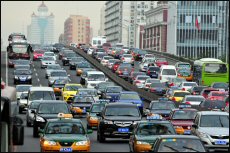 City density for retail has far to
go City density for retail has far to
go
Currently, there are three extended urban
areas that deserve the “megalopolis” epithet: Beijing-Tianjin-Hebei in the
northeast of the country, the Yangtze River Delta in the east and the Pearl
River Delta in the southeast.
There are also what could be described as smaller “city clusters,” such as
central-southern Liaoning (encompassing Shenyang, Dalian and Anshan), the
pairing of Chengdu and Chongqing in Sichuan Province, the Shandong peninsula,
the central China plain, which brings together Zhengzhou, Luoyang and Kaifeng,
as well as Changsha-Zhuzhou-Xiangtan in Hunan Province and Wuhan in Hubei
Province.
Spurring Regional Distribution
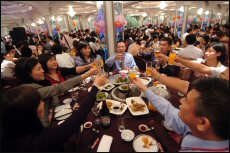 Urban consumer spending is
on the rise Urban consumer spending is
on the rise
One of the factors limiting growth in the mainland’s distribution industry has
been the marked disparities in economic development between cities and towns,
and between first-tier, second- and third-tier cities.
There are wide differences in consumer income and spending; the degree of market
homogeneity is low, and retail enterprises within the same region struggle to
expand and develop chain-store networks and franchises.
Retail chain Parkson, for example, has 40 mainland outlets, the largest number
nationally among department-store groups. Compared with European and American
department stores such as M&S, with more than 600 stores in the United Kingdom,
and JC Penney, with more than 1,100 stores in the US, mainland department stores
fall short in overall size and regional development density.
When it comes to large-scale supermarkets, Wal-Mart has the most outlets among
foreign-invested enterprises on the mainland, but even it counts only 180
stores. That’s very different in scale to the 4,364 Wal-Mart stores in the US.
Intense market competition has prompted more retail enterprises to expand into
second-and third-tier cities
Similarly, there are 2,270 Carrefour stores in France and 2,482 Tesco outlets in
the UK. In terms of size or development density, their mainland presence is only
at the starting line.
Granted, some mainland-invested small-and mid-sized supermarkets have seen
significant growth in store numbers and density, but the operational scale of
these enterprises remains relatively small compared to mature markets in Europe
and the US. Since the operational scale and purchasing volume of retail
enterprises are not high, their purchasing costs and gross-profit margins can’t
compare to those of large-scale chain stores in Europe, the US and Japan.
By the end of 2009, Wal-Mart’s US market operation had 1.4 million employees
working in 4,364 stores, with a turnover of US$255.7 billion and a gross profit
of 23.7 per cent. In comparison, Lianhua Supermarket, China’s largest local
retailer, has 4,930 stores across the country, with about 53,000 employees; yet
turnover was about US$3.5 billion in 2009 on gross profits of 13.1 per cent.
Spending on the Rise
Nevertheless, consumer spending is on the rise, led by the development of areas
surrounding first-tier cities as well as second- and third-tier cities.
Expansion towards district-level commercial centers is now more feasible for
chain store and franchise operations, including supermarkets, convenience stores
and household appliance stores.
For the three mainland megalopolis, for example, the 2008 per capita GDP in
cities at and above the prefecture level stood at Rmb37,494, Rmb56,566 and
Rmb56,000 respectively, showing robust spending power.
The non-agricultural populations in cities under the jurisdiction of the three
major megalopolis were, respectively, 20.3 million for Beijing-Tianjin-Hebei,
30.9 million for the Yangtze River Delta and 18 million for the Pearl River
Delta in 2008.
Government initiatives such as the “thousands of villages’ market project,” the
“appliances to the countryside” and the “connecting farms with supermarkets”
campaigns have also created huge development opportunities for some large retail
enterprises and their suppliers.
Retail Enterprise Expansion
Urbanization has enabled megalopolis circles and city clusters to break free
from regional administrative restrictions, forming huge economic zones. These,
in turn, promote close collaboration between urban and rural areas.
Retail enterprises have been opening chain stores and franchises in peripheral
locations in recent years. Such groups and wholesale distributors are fast
expanding across geographic regions and in greater scale.
Carrefour is a case in point. In 2004, the French retail giant opened two stores
in Beijing, located on the Third Ring Road and Fourth Ring Road respectively.
Since 2006, Carrefour has expanded its business reach in Beijing towards large,
distant residential areas such as Tongzhou and Tiantongyuan.
New World Shopping Mall is another example. The retailer saw the saturation of
department stores in Beijing’s city centre and decided to expand operations into
the neighboring areas of Beijing – at the Apple Community on East Third Ring
Road, to attract new customers.
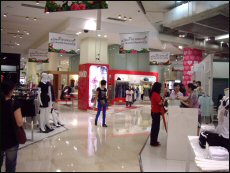 Intense market competition has also
prompted more retail enterprises to expand into second- and third-tier cities.
According to data from the China General Chamber of Commerce, trends for mergers
and acquisitions on a regional basis and expansion towards second- and
third-tier cities were well defined among the top 100 retail enterprises in
2009. Intense market competition has also
prompted more retail enterprises to expand into second- and third-tier cities.
According to data from the China General Chamber of Commerce, trends for mergers
and acquisitions on a regional basis and expansion towards second- and
third-tier cities were well defined among the top 100 retail enterprises in
2009.
For retail enterprises intending to expand within a region, chain store
and franchise operations boost operational efficiencies of scale, but also raise
cost efficiencies in logistical support as the number and density of stores
continue to grow.
Most retailers use centralized purchasing, which helps boost operational scale,
market coverage and the capacity of regional wholesale distributors. Although
there are only a few nationwide wholesale distributors on the mainland, regional
wholesale distributors show tremendous potential. Compared to nationwide
wholesale distributors, regional distributors are more knowledgeable about local
markets and have better relations with them. This is particularly useful for
further development and expansion.
Urbanization Promotes Consumerism
As the economy continues to grow rapidly, so, too, does the development of
tertiary industries, particularly services, in cities.
The value-added ratio of primary, secondary and tertiary industries in cities
above prefecture-level stood at 3.2:50.6:46.2 respectively in 2008. Compared to
1990, the ratio of tertiary industry has shown a 13.2 percentage point increase.
Increased work opportunities in the cities translate to tremendous income rise
for salaried workers. The per-capita disposable income of urban households rose
to Rmb15,781 in 2008, 9.5 times greater than 1990; even after adjusting for
inflation, the increase was eight-fold.
The theory of 19th century economist Ernst Engel comes into play when analysing
living standards on the mainland. Engel’s Law states that, with a given set of
tastes and preferences, as income rises, the proportion spent on food falls even
if the actual expenditure on food rises, propounding income elasticity of
demand.
This reflects the higher living standards of urban households, as supported by
Engel’s Coefficient, which falls as living standards rise, showing a drop on the
mainland, from 54.2 per cent in 1990 to 37.9 per cent in 2008.
Engel’s Coefficient for rural households also dropped, from 58.8 per cent in
1990 to 43.7 per cent in 2008. This shows an increase in income for the rural
labour workforce as it migrated towards non-agricultural sectors in the cities,
sparking a rise in rural living standards to a “moderately well-off standard of
living.”
Although there’s been continual growth in the actual expenditure on food,
including dining out, there’s also been a noticeable drop in average personal
expenditure. In contrast to the cost of food, expenditure on clothing and
essential daily supplies has shown a downward trend in households where total
incomes or total expenditure continued to rise.
September 20 2010
 Hong Kong SAR September 20 2010 - Hong
Kong remains the world’s freest economy according to the findings of the
Economic Freedom of the World: 2010 Annual Report released on September 20, 2010
by the Cato Institute. This marks the 14th consecutive year Hong Kong has topped
the ranking.
Hong Kong SAR September 20 2010 - Hong
Kong remains the world’s freest economy according to the findings of the
Economic Freedom of the World: 2010 Annual Report released on September 20, 2010
by the Cato Institute. This marks the 14th consecutive year Hong Kong has topped
the ranking.
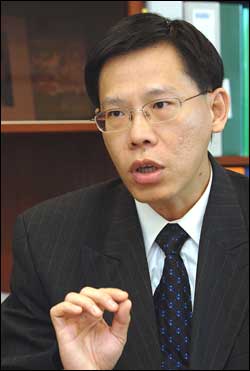 Hong Kong Commissioner to the United
States, Donald Tong, welcomed the findings of the report, saying: “I am
delighted that the Cato Institute, in conjunction with other prominent research
institutions, once again recognizes Hong Kong’s staunch commitment to free trade
and the rule of law. Hong Kong Commissioner to the United
States, Donald Tong, welcomed the findings of the report, saying: “I am
delighted that the Cato Institute, in conjunction with other prominent research
institutions, once again recognizes Hong Kong’s staunch commitment to free trade
and the rule of law.
“Our adherence to the free-market philosophy has enabled us to weather the
global economic crisis and better position the city as an international
financial, business and logistics center.”
The Economic Freedom of the World report uses 42 different measures to create an
index ranking economies around the world based on policies that encourage
economic freedom.
Economic freedom is measured in five different areas: (1) size of government;
(2) legal structure and security of property rights; (3) access to sound money;
(4) freedom to trade internationally; and (5) regulation of credit, labor and
business.
The 2010 report ranks 141 economies using data from 2008, the most recent year
for which comprehensive data was available.
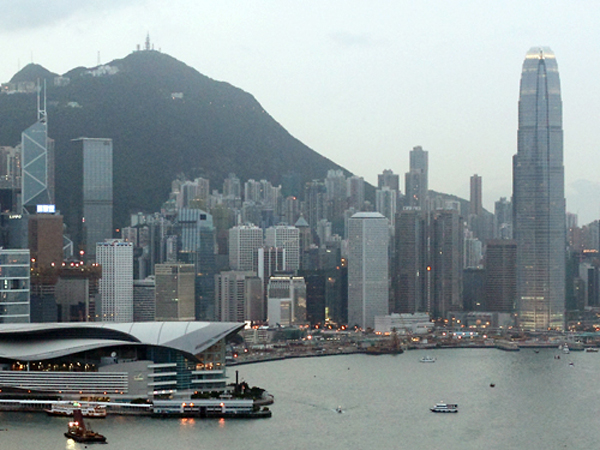 According to the report,
Hong Kong’s rating for economic freedom is 9.05 out of 10, followed by Singapore
with a rating of 8.70. The United States is the sixth-freest economy in the
world with a rating of 7.96. According to the report,
Hong Kong’s rating for economic freedom is 9.05 out of 10, followed by Singapore
with a rating of 8.70. The United States is the sixth-freest economy in the
world with a rating of 7.96.
The first Economic Freedom of the World report, published in 1996, was the
result of a decade of research by a team which included several Nobel Laureates
and over 60 other leading scholars in a broad range of fields, from economics to
political science, and from law to philosophy.
The Economic Freedom of the World report measures the degree to which the
policies and institutions of economies are supportive of economic freedom. The
annual report is published in conjunction with the Economic Freedom Network, a
group of independent research and educational institutes in over 80 nations.
For more information on the Economic Freedom Network, data sets, and previous
Economic Freedom of the World reports, please visit
http://www.freetheworld.com/index.html
September 19 2010
Hong Kong’s New-Look Hotels
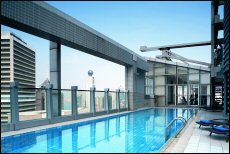 The rooftop swimming pool
at Traders Hotel, Western District, operated by the Shangri-La group The rooftop swimming pool
at Traders Hotel, Western District, operated by the Shangri-La group
Recent industry surveys show 2010 as a year of revival for business travel, a
sector hit badly in 2009. American Express data reveal that more than half of
executives surveyed globally planned to maintain or increase business-travel
spending this year. They were more prepared to loosen travel policies to meet
with new clients or for business development and more likely to attend
conferences and events this year.
But business travellers have also become more budget-conscious. Travel agents
say that, in addition to prioritising their travel needs, companies are
expecting value-for-money out of every business trip. To cater to demand, Hong
Kong-based Shangri-La Hotels and Resorts has brought its mid-market brand,
Traders Hotel, to Hong Kong. Traders Hotel Hong Kong opened in the Western
District in August. According to General Manager Andrea Mastellone, the city is
“a perfect fit” for the brand, which matches the profile of today’s business
traveller.
Four Stars in Demand
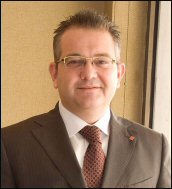 Andrea Mastellone, General
Manager, Traders Hong Kong Andrea Mastellone, General
Manager, Traders Hong Kong
He noted what he calls “the new breed” of corporate travelers, those who tasted
a value-for-money experience during the economic downturn and liked it.
“Companies looking to cut back on expenses would allow their representatives
fewer travelling days or demand a lower rate,” Mr Mastellone said. “The
frequency of travel has increased this year, but recovery is not yet evident in
the room rate. Hospitality business is back on track, but guests are still very
conscious about price. During the downturn, they were able to negotiate a
dramatic rate cut – even five-star rooms at four-star prices. But that was never
going to be sustainable. A reliable brand at the four-star end can deliver what
they really need.”
What business travellers want, Mr Mastellone said, are convenient locations,
quiet, clean and comfortable rooms of intelligent design, with suitable working
desk and good lighting, fast service, easy accessibility via all distribution
channels, and reliability of meeting guests preferences. He said Traders Hotel,
the mid-range arm of a brand best known for its five-star hotels and resorts,
meets those expectations.
A Traveller’s Essential Needs
 Mid-range EAST hotel in Taikoo Shing, a
Swire property Mid-range EAST hotel in Taikoo Shing, a
Swire property
Mr Mastellone added that he’s delighted by the brand’s debut performance in Hong
Kong. “We are already seeing excellent results with many business travellers,
including corporate accounts embracing the brand. We have definitely tapped a
niche market and are very excited about our prospects in Hong Kong.”
Swire Hotels has also entered the business
hotel market, with EAST in Taikoo Shing, its third hotel property. Managing
Director Brian Williams said EAST responds to the “essential needs” of modern
business travellers. “It has been designed to rejuvenate when you are tired,
energise when you’re in search of fun, and support you when it’s time for
business.” The brand’s first Hong Kong hotel, The Upper House, opened at Pacific
Place in 2009.
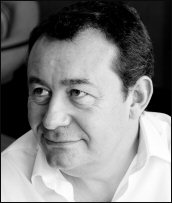 Brian Williams, Managing Director,
EAST Brian Williams, Managing Director,
EAST
Another newcomer, L'Hotel Island South in Aberdeen, pitches itself at
value-for-money, young-at heart travellers, who don’t mind staying outside of
Hong Kong’s prime business districts. Developed by the Chinachem Group of Hong
Kong, the hotel is close to the city’s other main attractions: great beaches,
beautiful natural attractions, rustic heritage sites and cultural trails.
MICE Travel Soars
Data from the Hong Kong Tourism Board (HKTB) show a 29.7 per cent increase in
the MICE (meetings, incentives, conventions and exhibitions) segment in the
first half of 2010, with 657,951 overseas arrivals. Increases in MICE traffic
were seen from around the world, with 37.7 per cent from the Americas, 17.4 per
cent from Europe, Africa and the Middle East, 18.1 per cent from Australia, New
Zealand and Pacific, 25.8 per cent from North Asia, 55 per cent from South and
Southeast Asia, and 27.8 per cent from the Chinese mainland.
HKTB Chairman James Tien said he expects this upward trend in MICE travel to
continue during the rest of the year. In 2009, the Meetings and Exhibitions Hong
Kong office successfully secured hundreds of MICE events. These are expected to
bring in more than 150,000 additional MICE visitors between 2010 and 2013.
Trade Fairs Shine
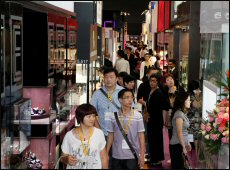 Reflecting a boom in MICE travel, the
Hong Kong Jewellery & Gem Fair in September drew a record 3,205 exhibitors from
45 countries Reflecting a boom in MICE travel, the
Hong Kong Jewellery & Gem Fair in September drew a record 3,205 exhibitors from
45 countries
A boom in business travel to Hong Kong is also reflected in a record year for
the Hong Kong Convention and Exhibition Centre (HKCEC). The fiscal year ended 30
June 2010 was the busiest in the HKCEC’s 21-year history. Operating revenue for
the first time exceeded HK$1 billion (US$130 million), increasing 21 per cent
over the previous fiscal year. The total number of events increased to 1,185,
from 1,076.
“We continue to benefit from the HKCEC's extraordinary client base, plus an
experienced and enthusiastic staff, and have achieved a 21-year history of
successes servicing some 38,000 events,” said HKCEC Managing Director Cliff
Wallace. “The HKCEC continues to be a benchmark that venues strive for
throughout Asia."
September 20 2010
 San Francisco California - September 20 2010 - More than 200 distinguished
guests, consuls general, senior government officials and business leaders
gathered at the "Meet the Many Faces of Hong Kong" reception at the de Young
Museum, San Francisco, on September 20.
San Francisco California - September 20 2010 - More than 200 distinguished
guests, consuls general, senior government officials and business leaders
gathered at the "Meet the Many Faces of Hong Kong" reception at the de Young
Museum, San Francisco, on September 20.
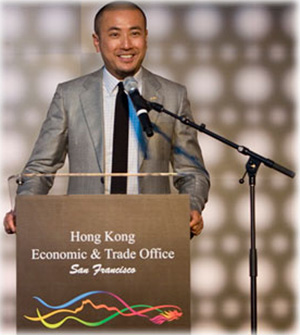 At the reception, the Director of the Hong
Kong Economic and Trade Office, San Francisco, Mr Jeff Leung, updated the guests
on the revitalized Brand Hong Kong (BrandHK), a communications platform to
promote Hong Kong as Asia's world city. At the reception, the Director of the Hong
Kong Economic and Trade Office, San Francisco, Mr Jeff Leung, updated the guests
on the revitalized Brand Hong Kong (BrandHK), a communications platform to
promote Hong Kong as Asia's world city.
Addressing the guests, Mr Leung said that the core values and attributes of
BrandHK were updated to reflect the attitudes and aspirations of Hong Kong
people regarding their city and the unique characteristics that make the city
distinctive. "The five core values are free, enterprising, excellence,
innovative and quality living. And the five attributes, which describe Hong
Kong's perceived characteristics are cosmopolitan, secure, connected, diverse
and dynamic," Mr Leung said.
The vitality of BrandHK comes from the people of Hong Kong. Each face tells a
story and together, the people of Hong Kong make it Asia's world city, he added.
The "Faces of Hong Kong" video was shown at the reception. "We invite people
around the world to get to know more about Hong Kong through these real
stories," Mr Leung said. "While Hong Kong has gained international recognition
for its efficiency and vibrancy, many may not be aware of its soft power - the
beauty of its natural landscape, the diversity of its culture and the warmth of
the people.
"Hong Kong may be small in size, but our people have an open and diverse
culture; we have busy urban areas, but we also have serene and quiet villages.
Those who have worked or lived in Hong Kong might agree with me that the hard
work and expertise of Hong Kong people have enabled the city to scale new
heights in many areas, turning it into an ideal place to work, live, study and
enjoy life; a place where there are interesting things to do and discover," he
said.
Hong Kong is a free and dynamic society where creativity and entrepreneurship
converge; a city with unlimited potential. This is also the theme used at the
Hong Kong Pavilion at the Expo 2010 Shanghai China to showcase the city's unique
qualities.
September 16 2010
 San
Francisco California - September 16 2010 - To further promote Hong Kong as a
wine trading and distribution hub, a luncheon was organized by Invest Hong Kong
in Lodi, a major winegrape and wine producing region in California. San
Francisco California - September 16 2010 - To further promote Hong Kong as a
wine trading and distribution hub, a luncheon was organized by Invest Hong Kong
in Lodi, a major winegrape and wine producing region in California.
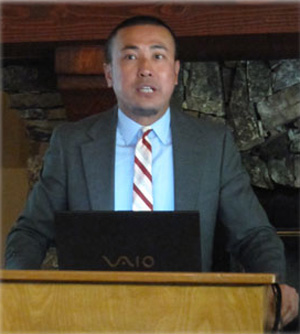 Addressing the 50 industry leaders and
senior executives from the region’s vineyards and wineries, Mr. Jeff Leung,
Director of the Hong Kong Economic and Trade Office, San Francisco highlighted
the zero wine import duty policy of Hong Kong. Addressing the 50 industry leaders and
senior executives from the region’s vineyards and wineries, Mr. Jeff Leung,
Director of the Hong Kong Economic and Trade Office, San Francisco highlighted
the zero wine import duty policy of Hong Kong.
“Hong Kong has totally eliminated wine import duty in 2008. Hong Kong never has
any VAT or GST. This makes Hong Kong the first free wine port among major
economies. Since the scrapping of wine duties, the growth of wine business in
Hong Kong has been more than spectacular. So far, import of U.S. wine has
already increased by five-fold. We are now one of the world’s fastest growing
markets for wine, and we aim to be one of the world’s great wine trading and
distribution centers.
“This past May, Secretary of Commerce of the United States, Mr. Gary Locke, led
a trade mission to Asia. The Secretary made a stop in Hong Kong and signed a
Memorandum of Understanding (MOU) between Hong Kong and the U.S. on Co-operation
in Wine-related Business,” said Mr. Leung.
“The MOU marks an important milestone in our closer bilateral ties and business
co-operation with the U.S. It also underlines Hong Kong’s commitment to succeed
as the wine trading hub in the region. We will further strengthen our efforts in
the U.S. on promoting wine-related trading, tourism, investment and education,”
he added.
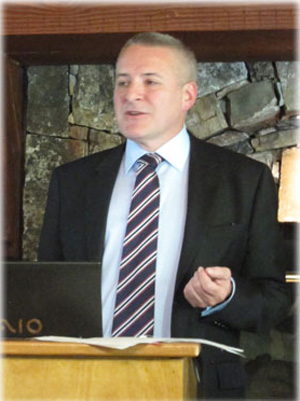 Also speaking at the luncheon was Mr.
Andrew Davis, Associate Director-General at Invest Hong Kong. He highlighted the
customs facilitation measures for wines entering the Mainland China market
through Hong Kong and the wine market profile. Also speaking at the luncheon was Mr.
Andrew Davis, Associate Director-General at Invest Hong Kong. He highlighted the
customs facilitation measures for wines entering the Mainland China market
through Hong Kong and the wine market profile.
Representatives of the Lodi-Woodbridge Winegrape Commission, Lodi Chamber of
Commerce, Export-Import Bank of the United States and Sacramento Regional Center
for International Trade Development also attended the luncheon on September 16.
September 8 2010
Chinese Bank with China Connection Helping a Hawaii Company -
Hoku Corp
 China
Construction Bank is one of the three large Chinese lenders to open a branch in
New York in the past two years. China
Construction Bank is one of the three large Chinese lenders to open a branch in
New York in the past two years.
Hoku Corp is a typical customer. The Honolulu-based clean-energy company
received a US$28.3 million loan from CCB in June for the construction of a
polysilicon production plant in Idaho. The agreement was arranged through
Chengdu-based Tianwei New Energy, a majority owner of Hoku and a previous client
of the bank.
"It's tough to get money," Darryl Nakamoto, Hoku's chief financial officer,
said. "So to have Tianwei as a supporter and having access to Chinese banks
gives us access to capital we probably wouldn't have otherwise accessed."
The Manhattan branch made moving funds easier, he added. As the US tilted
towards fears of a double-dip recession last week, one Midtown Manhattan office
exuded calm. "The financial crisis is a chance for us as newcomers," said Li Wei,
the general manager of China Construction Bank (SEHK: 0939) Corp's New York
branch, a tranquil office overlooking Bryant Park.
CCB is one of the three large Chinese state-controlled banks to open a branch in
New York in the past two years. The banks are quietly overcoming local
regulatory hurdles as they move tentatively into the US market in a bumpy global
economy. With lending still slow among US banks, Li said, there was little
customer loyalty to institutions with a longer history here.
"To the extent that they don't have a legacy portfolio of bad loans that the US
banks do," said Henry Fields, a partner at law firm Morrison & Foerster, which
has advised foreign banks operating here, "they have a competitive advantage."
Since opening in June last year, CCB's New York branch has brought in assets of
US$560 million. The branch has hired 35 employees, most of them locals, and
primarily serves corporate clients who are involved in US-China trade and
investment.
Industrial and Commercial Bank of China (SEHK: 1398)'s New York branch has
brought in assets of more than US$1 billion since opening in October 2008.
The same month, China Merchants Bank (SEHK: 3968) opened its New York branch; it
recently reported assets of US$260 million.
Two other Chinese banks - Bank of China and Bank of Communications (SEHK: 3328)
- have a longer history in the US, and are also expanding their activities here.
Because of foreign banking restrictions in the US, Chinese banks are not
authorised to accept retail deposits. Only Bank of China, which enjoys an
exemption, has retail branches.
Regulatory hurdles have been a source of frustration for the banks in the past.
In 2007, CCB chairman Guo Shuqing told reporters the US was "unfair" in its
treatment of Chinese banks.
Li, the bank's general manager in New York, said their complaints faded after
regulators granted the foreign branch licence last year. He added that the
branch was focusing its efforts in the first year on ensuring compliance with US
anti-money-laundering regulations and other legal requirements before thinking
of further growth.
In a brief e-mailed statement, a spokesman for the Federal Reserve said it
"evaluates the application of any firm, foreign or domestic, in consideration of
the financial and managerial facts presented by each case".
Several lawyers who specialise in commercial banking operations here said they
expected the US to grant Chinese banks the regulatory status they needed to
expand into retail operations.
"It's clear that Chinese banks and the whole Chinese regulatory system have
improved markedly in the past several years," Rodgin Cohen, chairman of law firm
Sullivan & Cromwell, said.
He added that he thought it was a question of when - and not whether - Chinese
banks would receive the nod from the regulators. "It's difficult to hazard a
guess but I'd say within the next 12 to 24 months."
Whether the banks will want to expand into the retail market is another
question, though. The shaky condition of many community lenders in the US -
natural targets for expansion - might have also slowed Chinese banks' efforts to
acquire them, said Fields, the Morrison & Foerster attorney.
"I think they were poised to move more quickly before things fell apart in 2007
and 2008," Fields said. "I still think this is going to happen, it's just a
little hard to predict the timing."
China Minsheng Banking Corp became a pioneer - and had its fingers burned - by
acquiring a sizeable minority stake in UCBH Holdings, the holding company of San
Francisco-based United Commercial Bank. That bank failed late last year.
Li said it was not his job to determine CCB's future in the US - that was up to
the head office. But he expects the bank to move with caution. "I think we will
expand our business gradually," he said. "We won't jump into a market we don't
know."
By Kristin Jones in New York
August 8 2011
APEC 2011 "Hawaii" Host committee members named - Security paramount for
conference - Federal agencies will join city and state authorities in preparing
for protesters
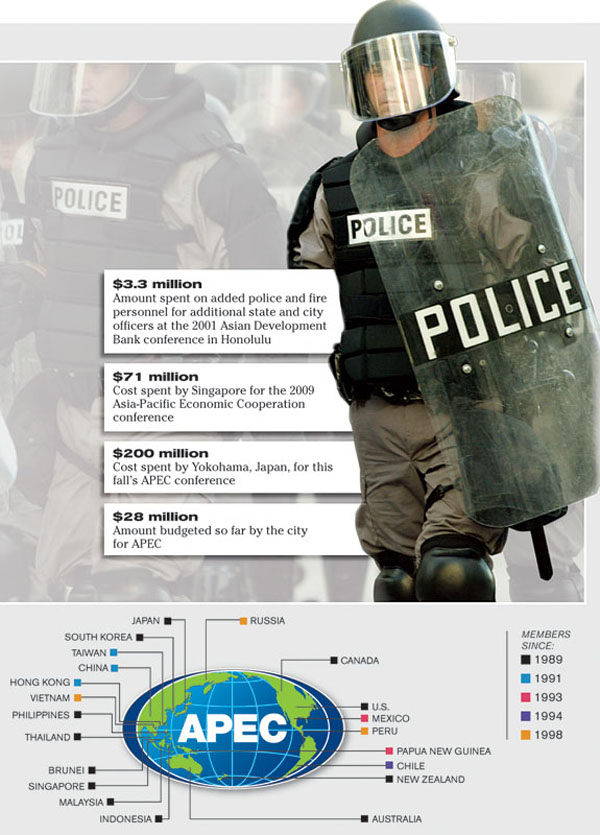
WHAT IS APEC Source: www.apec.org?
The Asia-Pacific Economic Cooperation, based in Singapore, was established in
1989 as a forum for facilitating economic growth, cooperation, trade and
investment in the Asia-Pacific region. Unlike the other multilateral trade
bodies, APEC has no treaty obligations required of the countries that
participate. Decisions made within APEC are reached by consensus and commitments
are undertaken on a voluntary basis.
APEC has 21 members, referred to as "member economies," which account for about
40.5 percent of the world's population, about 54.2 percent of the world's gross
domestic product and about 43.7 percent of world trade.
The Asia Pacific Economic Cooperation Hawaii Host Committee members have been
named for the Nov. 12-13, 2011, event in Honolulu. President Barack Obama will
host 21 leaders from the Asia-Pacific region at the event. Here are the
committee members:
» CEO: Gregg Yamanaka, president of Green Era Corp. and of LearningBiz
» Chairman: Peter Ho, chairman, president and CEO, Bank of Hawaii
» Vice chairman: Timothy E. Johns, president and CEO, Bishop Museum
» Gov. Linda Lingle
» Mufi Hannemann, former Honolulu mayor
» Adm. Robert Willard, commander, U.S. Pacific Command
» David Carey, president and CEO, Outrigger Enterprises Group
» Greg Dickhens, executive vice president, Kyo-ya Management Co.
» Mark Dunkerley, president and CEO, Hawaiian Airlines
» Adm. Thomas Fargo, U.S. Navy (retired)
» Gerard Gibson, area vice president, Hilton Hawaii
» M.R.C. Greenwood, president, University of Hawaii
» Corbett Kalama, executive vice president, First Hawaiian Bank
» Bert "BJ" A. Kobayashi Jr., president and CEO, Kobayashi Group LLC
» Stanley Kuriyama, president and CEO, Alexander & Baldwin Inc.
» David Lewin, general manager, Hyatt Regency Waikiki Beach Resort and Spa
» Patricia Loui, chairman, OmniTrak Group Inc.
» Mike McCartney, president, Hawaii Tourism Authority
» Ambassador Lauren Kahea Moriarty (retired), educator and former U.S.
ambassador to APEC
» Randy Perreira, executive director, HGEA
» Barry Taniguchi, president, KTA Super Stores
» Chris Tatum, vice president for North Asia, Hawaii and South Pacific Marriott
International
» James Tollefson, president and CEO, Chamber of Commerce of Hawaii
» Eric Yeaman, president and CEO, Hawaiian Telcom
EX-OFFICIO MEMBERS:
» U.S. Sen. Daniel Inouye
» U.S. Sen. Daniel Akaka
» U.S. Rep. Mazie Hirono
» Charles Morrison, president, East-West Center
More than 600 protesters were arrested in June at the G-20 summit in Toronto,
where clashes with police led to burning squad cars and shattered store windows
-- a situation local authorities are already working to avoid at the
Asia-Pacific Economic Cooperation conference here next year.
APEC will meet in Honolulu in November 2011, and security is paramount when the
leaders of 21 countries and their entourages descend on the Hawai'i Convention
Center.
About 20,000 visitors are expected in all.
While business leaders are hopeful that the weeklong conference will create an
opportunity for the state to promote itself as a business-class tourism
destination, security is already a focus of federal, state and city law
enforcement leaders. Global conferences can be a magnet for protests. There were
no reports of serious injuries to either demonstrators or police in Toronto, but
such gatherings can on occasion turn ugly.
 Maj. Gen. Robert G.F. Lee, who as adjutant
general heads the state Department of Defense, said he doesn't expect that to
happen here. "We are going to have enough security for APEC 2011," Lee said.
Federal enforcement agencies will provide resources to help Honolulu police, and
more than 5,500 Army and Air National Guard troops will also be available to
help if necessary, he said. Maj. Gen. Robert G.F. Lee, who as adjutant
general heads the state Department of Defense, said he doesn't expect that to
happen here. "We are going to have enough security for APEC 2011," Lee said.
Federal enforcement agencies will provide resources to help Honolulu police, and
more than 5,500 Army and Air National Guard troops will also be available to
help if necessary, he said.
That's not to say demonstrators won't be welcome.
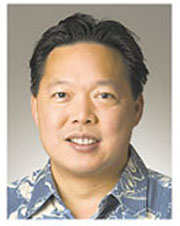 "Certainly, there's opportunity for protest,"
said Peter Ho, chairman of the private, nonprofit APEC Hawaii Host Committee set
up to help support the conference. "That's part of the fiber of our country." "Certainly, there's opportunity for protest,"
said Peter Ho, chairman of the private, nonprofit APEC Hawaii Host Committee set
up to help support the conference. "That's part of the fiber of our country."
Josh Cooper, one of the local leaders of protests that took place when the Asian
Development Bank held its 2001 conference in Honolulu, said people should expect
similar demonstrations.
Lee said demonstrators should and will have a right to free speech as long as
they don't try to disrupt the conference itself. "I wouldn't be encouraging any
organizations that would be disruptive of APEC 2011," he said.
Cooper said protests can be expected at any global summit that fails to
earnestly discuss the environment and human rights. "If the heads of state keep
their heads in the sand of Waikiki, talking only trade and tariffs without
including important issues of trafficking and the trees in the Asia-Pacific
region, people will demand more from the meeting," he said. Expect "strong
representation of indigenous peoples, climate change campaigners, women's rights
activists and global justice advocates," Cooper said.
Local officials said they are optimistic that a repeat of Toronto won't happen,
for several reasons.
First, APEC conferences typically have not been a lightning rod for protests, Ho
said. "If you look at the history of APEC, it's not really been subject to the
types of situations that you see with some of the other organizations," he said.
Second, Lee said, Hawaii's remote location works to its advantage. "It's
certainly helpful that protesters would need to pay a lot of money to fly in on
an airline to come to this -- much more difficult than driving into Los Angeles
or San Francisco," he said.
When nearly 3,000 people from 60 countries attended the Asian Development Bank's
conference at the Hawaii Convention Center in 2001, the state had estimated as
many as 5,000 protesters would accompany them. Instead, only about 500 turned
out and there were no arrests.
The additional state and city security cost about $3.3 million. Congress voted
to reimburse half that amount.
But that was pre-9/11.
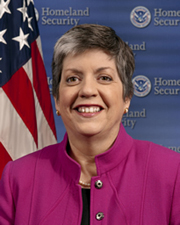 This time around, obtaining federal
support isn't expected to be as difficult. Janet Napolitano, secretary of
homeland security, is expected soon to designate the 2011 APEC conference a
National Special Security Event, or NSSE, making Hawaii eligible to tap federal
resources, including cash and law enforcement personnel. This time around, obtaining federal
support isn't expected to be as difficult. Janet Napolitano, secretary of
homeland security, is expected soon to designate the 2011 APEC conference a
National Special Security Event, or NSSE, making Hawaii eligible to tap federal
resources, including cash and law enforcement personnel.
The designation is typically given to U.S. events attended by a large number of
dignitaries and which hold "national significance," thus requiring larger-scale
security coordination. Previous NSSEs have included national political
conventions, Super Bowls and the Academy Awards.
Exactly how much the state and city will be reimbursed for security of the event
still is to be determined.
Ho is optimistic. "The intent is to get our community reimbursed for all of the
expenditures we lay out," he said.
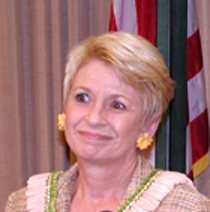 Marsha Weinert, the state's tourism
liaison, said one key thing to watch is if Napolitano designates the entire
week's worth of activities as an NSSE, or just the Nov. 12-13 weekend, when the
so-called "leaders' meeting" takes place. Marsha Weinert, the state's tourism
liaison, said one key thing to watch is if Napolitano designates the entire
week's worth of activities as an NSSE, or just the Nov. 12-13 weekend, when the
so-called "leaders' meeting" takes place.
Once the gathering is declared an NSSE, the U.S. Secret Service becomes the lead
federal agency for design and implementation of an operational security plan
with the help of local law enforcement officers, said Max Milien, a spokesman
for the Secret Service.
Meanwhile, the Federal Bureau of Investigation is put in charge of any "crisis
management" issues, while the Federal Emergency Management Agency is tasked with
"consequence management," Milien said.
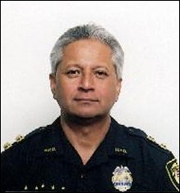 Local law enforcement agencies have also
begun preparing. The Honolulu Police Commission recently got a briefing from
members of HPD's Special Field Operations Bureau/APEC Planning Group on their
trip to the June G-20 summit in Toronto. The presentation was held behind closed
doors due to security reasons. They also will attend this fall's APEC conference
in Yokohama, Japan. Asked what HPD officials learned in Toronto, police Maj.
Clayton Kau said: "We learned that the law enforcement agencies involved in the
G-20 conference did an excellent job planning for the event. We learned how much
time and resources are needed to plan for a successful event." HPD has begun to
identify special training and equipment it might need to employ "to address
crowd control (illegal protests), venue security and dignitary protection," Kau
said. HPD will need to purchase bicycles, protective equipment and uniforms, as
well as pay for specialized training and the rental of vans, he said. Local law enforcement agencies have also
begun preparing. The Honolulu Police Commission recently got a briefing from
members of HPD's Special Field Operations Bureau/APEC Planning Group on their
trip to the June G-20 summit in Toronto. The presentation was held behind closed
doors due to security reasons. They also will attend this fall's APEC conference
in Yokohama, Japan. Asked what HPD officials learned in Toronto, police Maj.
Clayton Kau said: "We learned that the law enforcement agencies involved in the
G-20 conference did an excellent job planning for the event. We learned how much
time and resources are needed to plan for a successful event." HPD has begun to
identify special training and equipment it might need to employ "to address
crowd control (illegal protests), venue security and dignitary protection," Kau
said. HPD will need to purchase bicycles, protective equipment and uniforms, as
well as pay for specialized training and the rental of vans, he said.
The city has allocated $28 million over two years for APEC-related costs, about
$22 million of that for HPD.
The state also has a tentative budget, Lee said, but he declined to say how
much.
By Gordon Y.K. Pang
June 9 2010
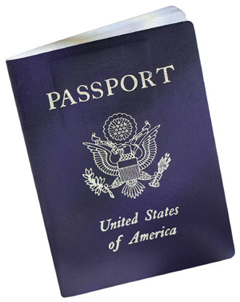 Practical
Idea for American Business Executive Traveling Abroad Practical
Idea for American Business Executive Traveling Abroad
For many years, the people of the world have had a love affair with America.
They have admired our culture, our products, and our optimistic, can-do
personalities. In recent years, however, there has been a significant shift in
those feelings. Research studies show that for a number of reasons,
"favorability" ratings for America are declining around the world (In other
countries, you are more than just an American. you are America).
While it is true that the rise in negative feelings towards us may result more
from perceptions than reality, you know that perceptions are powerful opinion
makers. You, and the some 60 other million other Americans who travel abroad
each year, have a unique opporutnity to change at least some impressions of us
from negative to positive. By following the simple suggestions described here,
you can have a better personal experience abroad, while showing America's best
face to others including those with whom you do business (The small things you
do can make a big difference in America's standing in the world - Being a better
citizen of the world is good for your company and your country).
16 Simple Suggestions.
1. YOU WILL NEVER GO WRONG WITH A SMILE - A smile, even if you have got a
problem, is always welcome. It is the one worldwide equalizer. Anger,
impatience, and rudeness are universal turnoffs.
2. SHOW YOUR PRIDE, BUT RESPECT THEIRS - People all around the world are
fascinated by the U. S. and the lives we Americans live. They admire our
openness, our optimism, our creativity, and our independent spirit. But that
does not mean they feel less proud of their own country and culture. Be proud of
the American way, but remember, it is not the only way.
3. THINK AS BIG AS YOU LIKE, BUT TALK AND ACT SMALL - In many countries, any
form of boasting is considered very rude. Talking about wealth, power, or status
- corporate or personal - can create resentment. When Americans meet each other
for the first time, our job (and its implied status) is a key of who we are and
how we introduce ourselves. This is less important elsewhere and can be
perceived as just boasting (In Japan, it is considered rude to look a person
directly in the eye for than a few seconds).
4. IT MAY BE GREEK TO YOU, BUT THEY WILL LOVE IT - Try to speak a little of the
language, even if it is only "hello" and "thank you". It is not insulting to
mispronounce a word or make a mistake. The effort will be appreciated.
5. IT IS OKAY TO TALK WITH YOUR HANDS IF YOU KNOW WHAT THEY ARE SAYING -
Gestures are powerful communications in any culture and are obviously easier to
learn than language. A combination of both can help you communicate better and
more quickly. But be aware that some gestures don't mean the same thing in
different culture (In most European countries, the correct way to wave hello and
good-bye is palm out, hand and arm stationary, finger wagging up and down.
Common American waving means "no" except in Greece, where it is an insult).
6. LEAVE THE SLANG AT HOME - Our colloquial or slang expressions mean little or
nothing in other culture. Using them can make you seem insensitive. They are
difficult to translate and may come across as gibberish or something stupid. And
even casual profanity is unacceptable.
7. LISTEN AT LEAST AS MUCH AS YOU TALK - by all means, talk about America and
your life in our country. But also ask people you are visiting about themselves
and their way of life. Listen, and show your interest in how they compare their
experiences with yorus.
8. SERVE THE LECTURES FOR YOUR KIDS - Whatever your subject of discussion, let
it be a discussion, not a lecture, and try to leave right and wrong out of it.
Justified or not, the U. S. is seen as imposing its will on the world. Try to
show a willingness to understood other viewpoints.
9. THINK A LITTLE LOCALLY - Try to find a few topics that are important in the
local popular culture. Lean a few names of pop singers, actors, TV
personalities, sports heroes. Remember, most people in the world have little or
no interest in the World Series or the Super Bowl. Show some interest in local
sports, even if only to ask questions (What we call "soccer" is football
everywhere else in the world. And it is the most popular sport on the planet).
10. SLOW DOWN - We talk fast, eat fast, move fast, live fast. Many cultures do
not. In fact, time is understood very differently around the world. Instant
solutions, immediate satisfaction, and short-term thinking are often unimportant
and not respected.
11. SPEAK LOWER AND SLOWER - In conversation, match your voice level and
tonality to the environment and other people. A loud voice is often perceived as
bragging. A fast talker can be seen as aggressive and threatening (Mandarin,
English, Hindi, Spanish, Arabic, Bengali, Portuguese and Russian-if you can say
"hello" in these languages, you can greet over half of the people in the world).
12. REMEMBER THAT YOUR RELIGION IS YOUR RELIGION AND AND NOT NECESSARILY THEIRS
- Religious worship and beliefs differ greatly around the world. Most
non-Western cultures have little knowledge of the Bible and will not understand
references to it. And in most other countries, religion is usually considered
deeply personal, not a subject for public discussion.
13. IF YOU TALK POLITICS, TALK-BUT DO NOT ARGUE - Make yourself aware of the
political environment of the region,but avoid expressing opinions about local
issues. Steer clear of arguments about American politics, even if someone is
attacking U. S. Politicians or Policies. Agree to disagree (Politics among
friends is not easy - among strangers if is even harder).
14. READ A MAP - You may not believe that anyone could confuse "Australia" with
"Austria", but it happens. Everyone's country is important to them. Familiarize
yourself with the local geography to avoid making insulting mistakes.
15. DRESS UP - YOU CAN ALWAYS STRIP DOWN - In some countries, casual dress is a
sign of disrespect. Check out what is expected. When in doubt, err on the side
of attire that is more formal than casual. You can remove a jacket and tie if
you are overdressed, but you can't make up for being too casual.
16. A FEW EXTRA HOURS IN THEIR COUNTRY WILL DO A LOT FOR YOURS - Few things will
make a bigger impression in another country than your interest in that country.
Try to carve out a few hours to tour the city or area you are visiting. And let
yoru hosts suggest what you should see,so they will feel your interest
firsthand.
Prepared by NBTA - National Business Travel Association -
connecting the business travel world "Building For Diplomatic Action" Building
New Bridges to the World.
 Think about
it - In 2003, 2.48% American out of the population of 294,043,000 carry a USA
Passport. In other words, 97.52% of the American did not travel outside of North
America....think about the implication on a nation and why we continue to
stumble! Think about
it - In 2003, 2.48% American out of the population of 294,043,000 carry a USA
Passport. In other words, 97.52% of the American did not travel outside of North
America....think about the implication on a nation and why we continue to
stumble!
April 27 2010
Designed to Shine
 Beijing-based computer giant Lenovo is tapping Hong Kong's design and innovation
expertise Beijing-based computer giant Lenovo is tapping Hong Kong's design and innovation
expertise
Computer giant Lenovo began capitalising on Hong Kong’s design and innovation
expertise by opening an Innovation Design Centre in the city last October. The
centre supports the brand’s Beijing operation in designing its existing product
portfolio, as well as developing new product concepts for the consumer PC market
and researching design and consumer trends.
Yao Yingjia, General Manager of the Lenovo Innovation Design Centre and company
Vice President, said the aim was to take advantage of the city’s diversity and
multicultural environment. “Not only does Hong Kong have a sophisticated
consumer group, it also has world-class design talents and is the ideal place
for design innovation. The establishment of our Innovation Design Centre in Hong
Kong will help further advance Lenovo’s innovative design competitiveness.”
Hong Kong, he said, is strategically positioned as the gateway to the Chinese
mainland and other Asian countries, especially to various emerging markets that
are a strategic focus of Lenovo.
“The closeness to local organisations will also help us immerse ourselves in
their design culture and strengthen our understanding of consumer preferences,
including fast-changing consumer markets,” Mr Yao said.
Best of the British
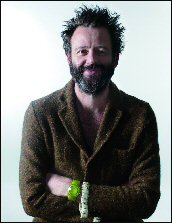 British designer Michael Young followed his instinct and came to Hong Kong British designer Michael Young followed his instinct and came to Hong Kong
It’s not just multinationals that are tapping Hong Kong’s creative energy. Some
of the world’s hottest designers have also set up in Hong Kong. Acclaimed
British designer Michael Young followed his intuition by choosing the city for
his global headquarters in 2006.
“I set up here because my instinct told me that, from the outset, I would be
surrounded by positive business energy combined with simple access to industry,”
said Mr Young. “The impact has been massive – it’s a synergy that is unique to
this city.”
He added that Hong Kong’s market differentiator is its focus on the economy,
“which is the true meaning for design.”
His eponymous design company, Michael Young, started out with four staff and has
since expanded to 11, including three interns from overseas. He plans to open a
gallery next year in Brussels that will act as a European base.
Global Portfolio
Among the prominent global clients that seek out Michael Young in Hong Kong are
Giant Bicycle of Taiwan, US electronics design company EOps Technology, and Hong
Kong brands Ostbahn, an aluminium manufacturer, and Zixag, an up-and-coming
laptop accessories and travel-bag brand. He also works on projects worldwide
including new furniture collections for US brand Emeco and Swedish brand Swedese,
kitchens for Scavolini of Italy, and glassware for Hennessy of France.
Mr Young was appointed Creative Director of 100% Design Tokyo 2007-08, Asian
Aerospace 2009 and 100% Design Shanghai 2010. Products he developed in Hong Kong
were showcased at an exhibition called “Works in China” at Vienna Design Week
last October. He is also producing a book about his time and work in Hong Kong
in collaboration with Hong Kong Polytechnic University Professor John Heskett.
The book will be launched at 100% Design Shanghai in November.
Mr Young said his Hong Kong experience “has been amazing. I work for global
clients and they can all tap into the resources we have developed, so my love of
industrial process is satisfied, as is the volume of brands we are helping now.
Business is very good.”
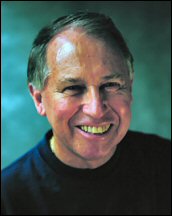 New Zealand native Neil Pryde says Hong Kong can lead by design New Zealand native Neil Pryde says Hong Kong can lead by design
He has also noticed a stream of designers who are likewise drawn to Hong Kong.
“I get three job or intern applications a day.” Mr Young said. “My project
‘Works in China’ is responsible for communicating that there is hope outside of
Europe to be a designer. Hong Kong is an amazing place to learn and grow as long
as you can hit the ground running. This is a city that stops for no one.”
The Pryde of Hong Kong
Neil Pryde’s design career began with his love of water sports. He came to Hong
Kong from New Zealand in 1963 and started Neil Pryde Ltd in 1970. He said that
47 years on, “Hong Kong still excites me” and that Hong Kong’s dynamism and
energy attract talent and stimulate the creative juices. “With a booming retail
economy, this sets the scene for Hong Kong to become a design centre for the
world.”
 NeilPryde's Lucifer, the first drysuit for cold climate kitesurfing, won the top
Red Dot award NeilPryde's Lucifer, the first drysuit for cold climate kitesurfing, won the top
Red Dot award
The NeilPryde brand is an industry standard and an official sponsor of Olympics
events. In its latest design coup, NeilPryde won three of the prestigious Red
Dot awards for design from Design Zentrum Nordrhein Westfalen. One was the lofty
Red Dot: Best of the Best Award, for NeilPryde's Lucifer, the industry’s first
snowboard-style drysuit intended for kitesurfing in extremely cold climates. The
brand also won for its windsurfing sails and windsurfing boom.
Mr Pryde said the awards are a credit to the skills of his designers.
 American fashion designer Diane Freis is a Hong Kong success story American fashion designer Diane Freis is a Hong Kong success story
“I am particularly proud of the fact that we are a home-grown Hong Kong company,
and these latest awards underline once again the depth of design expertise and
innovation that exists in Hong Kong.”
He hopes his company’s recognition will inspire more Hong Kong companies to
invest in research and development (R&D), so that more products will be
design-driven. “Hong Kong can become an international centre for design
excellence capable of supporting the widespread manufacturing operations that
Hong Kong industrialists have in China and around the world.”
Fashion Inspiration
 Flowing, feminine styles have made Diane Freis a household name
Flowing, feminine styles have made Diane Freis a household name
Internationally acclaimed fashion designer Diane Freis is another Hong Kong
success story. California-born Ms Freis came to Asia looking for exotic new
materials and skilled embroiderers, and found the fabrics and workmanship that
contributed to her distinctive fashion identity in Hong Kong.
When she opened her first boutique in the city in 1978, Ms Freis had “just a
handful of dedicated seamstresses and bolts and bolts of ideas.” She went on to
establish her own design and manufacturing studio and launch her own label.
Today she heads a multinational corporation with boutiques in Hong Kong and
Australia’s Gold Coast; franchised stores in Cairo and Riyadh, and an online
business in the United States.
Hong Kong remains “a very special place,” said Ms Freis. While the days of
having her own production plant on site are over due to increasing costs, the
city still hosts the brand’s R&D, quality control and export functions, and
offers convenient access to the factories the company works with on the
mainland.
“I can’t think of anywhere else I would rather locate,” Ms Freis said. “For me,
Hong Kong is ideal.”
April 20 2010
Creating an Innovation
Ecosystem for Hong Kong Share
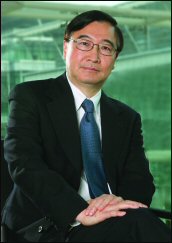 Cheung Nim Kwan, CEO of Hong Kong Applied Science and Technology Research
Institute Co Ltd
Cheung Nim Kwan, CEO of Hong Kong Applied Science and Technology Research
Institute Co Ltd
Hong Kong offers plenty of opportunity to make big money in a short time. But as
global competition intensifies, the government wants to diversify Hong Kong’s
economy so it relies less on sectors such as finance and property development.
That’s why it’s targeting six new economic areas for long-term growth, including
innovation and technology. And one element of that is to make the field a more
attractive career path for young people.
We need to do that,” says Dr Cheung Nim Kwan, CEO of Hong Kong Applied Science
and Technology Research Institute Co Ltd (ASTRI), based in Hong Kong Science
Park. “We need to set a good example – Science Park is a good starting point –
to create a lot of high-paying jobs to attract young people. And excitement is
very important. Besides well-paying, they should be cool jobs.”
From Wi-Fi to MRI
There are already some cool jobs – about 8,000 of them – with more than 310
companies working at Hong Kong Science Parks’ seaside campus in Sha Tin. Some
involve research with multinationals such as DuPont Apollo and Philips. Many
others are with small and medium-sized enterprises such as Altai Technologies
Ltd, a Hong Kong start-up incorporated in 2006 after exclusively licensing ASTRI
technology. ASTRI also helped it obtain US$10 million in venture-capital
funding. Today, Altai is a leading supplier of outdoor Wi-Fi cellular base
stations.
 This next-generation MRI technology was developed by Time Medical, a company
founded by scientists from Columbia University, Harvard Medical School and the
University of Hong Kong
This next-generation MRI technology was developed by Time Medical, a company
founded by scientists from Columbia University, Harvard Medical School and the
University of Hong Kong
Another successful ASTRI spin-off was its photonic technology unit, which it
sold to SAE Magnetics (HK) Ltd for HK$109 million plus royalties in 2004, two
years after the Hong Kong Government invested about HK$40 million in it.
Seventeen ASTRI staff joined the new company, which now has 30 design engineers
in Science Park, more than 1,000 production workers in Dongguan and sales
estimated at HK$70 million. SAE, a subsidiary of TDK Corporation, is the largest
independent manufacturer of magnetic recording heads for hard disk drives.
Then there’s Time Medical. The company, founded by scientists from Columbia
University, Harvard Medical School and the University of Hong Kong, collaborated
with ASTRI to develop next-generation magnetic resonance imaging (MRI)
technology. The result is a smaller MRI device that delivers high-quality images
at a low cost – ideal, for example, for use in hospitals in rural China.
“We would like to encourage these kinds of industries because they employ a lot
of highly trained people in physics, mathematics and engineering,” says Dr
Cheung.
ASTRI, set up by the government in 2000 to boost Hong Kong’s technological
competitiveness by commercialising research and development, does leading-edge
R&D for technology transfer to industry, developing the necessary human
resources and bringing together industry and university R&D assets. It focuses
on five key areas: communications technology; enterprise and consumer
electronics; integrated circuit design; material and packaging technology; and
biomedical electronics. Reaching into the Chinese mainland market, it
established a wholly owned subsidiary in Shenzhen in 2008.
Innovation on display at Electronics, ICT and Lighting events in Hong Kong
http://www.youtube.com/watch?v=R3dYEOkhZbE&feature=player_embedded
Jobs for Grads
In terms of luring young talent into the technology sector, “the government has
already taken a small step, which is the creation of the Intern Program,” says
Dr Cheung. “ASTRI is actually the biggest employer of interns in Hong Kong. We
have almost 50 interns, and our target for this financial year is to hire 60 of
them. It pays HK$10,000 or $12,000 a month. Actually, the government wants us to
hire double that amount, 120, if we can get our hands on that many youngsters.”
The interns are recent local university graduates with bachelor’s or master’s
degrees in science or engineering; some even have PhDs. “Last year we invited
five universities to a career day. It was a full house.”
The Intern Program, in its first year, engages the graduates in full-time work
with a research group. “Our goal is that by the end of one or two years, they
have a good training in different phases of R&D and design, says Dr Cheung.
“After two years, I hope they’ll get good jobs in the local industry.”
Science Park
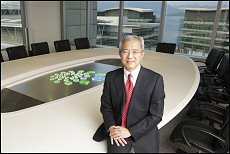 Creating an “ecosystem” for innovation and technology to flourish: HKSTP CEO
Anthony Tan
Creating an “ecosystem” for innovation and technology to flourish: HKSTP CEO
Anthony Tan
ASTRI is just one of the nurturing facilities at Hong Kong Science Park. In
addition to Science Park, Hong Kong Science and Technology Parks Corporation (HKSTPC)
manages the InnoCentre and three industrial estates.
Hong Kong Science Park provides infrastructure and support services for
commercialization of research targeting five areas: electronics, information
technology and telecommunications (ICT), precision engineering, biotechnology
and green technology.
HKSTPC CEO Anthony Tan says the Park has embraced the green concept in its
master plan, in the form of roof gardens, integrated photovoltaic technology
systems, recycled paving and automated refuse collection.
The Park’s Green 18 building, targeted for completion next year, will employ
environmental features such as natural ventilation and “total energy
management,” while Hong Kong Science Park Phase 3, given the go-ahead in the
2010-11 budget, will comprise 10 buildings with energy-efficient technology.
Among its offerings, Science Park provides 10 state-of-the-art laboratories and
technical centres, along with teams of engineers and experts. They provide
technical assistance to companies using the labs, and an incubation programme,
which helps fledgling technology entrepreneurs with rental subsidies and other
financial aid, along with mentorship and advice on their business plans.
Mr Tan says HKSTPC has identified six niche areas in which Hong Kong has the
potential to build a sustainable, world-class technology advantage:
radio-frequency identification; integrated circuit design for mobile devices;
energy management for buildings; environmental engineering; thin-film
photovoltaic solar cells; and light-emitting diode (LED) lamps.
Building the Ecosystem
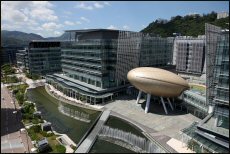 Hong Kong Science Park provides infrastructure and support services for
commercialization of research
Hong Kong Science Park provides infrastructure and support services for
commercialization of research
As for making Hong Kong a regional innovation and technology hub, Mr Tan cites
Hong Kong’s many advantages, including its proximity to the mainland, low taxes,
rule of law, intellectual property protection, free flow of information,
world-class university research and a skilled workforce.
To accomplish the goal, he says, Hong Kong needs a flourishing “ecosystem” for
innovation and technology bringing together academic research, institutions such
as Science Park and ASTRI to apply and commercialise the research, a large
talent pool, and financial support from “angels” and venture capital funds. The
latter is “really rather embryonic at this point,” but Mr Tan sees possibilities
among Hong Kong’s many successful, semi-retired industrialists, with their
wealth, resources and understanding of manufacturing technology. “I think
there’s potential for Hong Kong to create some angel-funding networks,” he says.
“With innovation and technology, it’s important that academia, the government,
the business sector and the community work together to build this ecosystem,” Mr
Tan says. “And we need to educate people about how innovation and technology is
important to the future sustainable economic development of Hong Kong, because
Hong Kong has got to diversify beyond just finance and real-estate development.”
March 3 2010
 Hawaii Needs to Better Promote Itself as a Meetings
Destination - By Kevin Iwamoto, VP, Enterprise Strategy, StarCite,
Inc.
Hawaii Needs to Better Promote Itself as a Meetings
Destination - By Kevin Iwamoto, VP, Enterprise Strategy, StarCite,
Inc.
Is it necessary for Hawaii’s travel industry to be suffering so?
As a meetings industry executive, it was tough for me to watch the nation’s
hotels take their bruises last year. One survey reported that average hotel
occupancy levels across America fell nearly 9% in 2009 to just above 55%. And as
a Hawaii native, it was especially painful to witness my home state’s troubles
with the travel industry – so vital to its economy.
Hawaii’s occupancy rate, at an average 66.5% last year, was enviable compared to
the national figures. But the pain was and still is there: Hawaii’s hotel
revenues in 2009 dropped by $741 million to $3.59 billion, driven by falling
occupancies, room rates and other hospitality indicators.
The good news is that there’s a prescription for what ails Hawaii’s travel
industry: a multi-front campaign by government and business to increase groups
and meetings travel, complementing the state’s already strong identification
with leisure tourism.
Hawaii’s Got it All for Meetings
Hawaii’s got much to offer for meetings travel: numerous flights (many of them
direct) from around the world; the Hawaii Convention Center’s 200,000 square
feet of exhibition space and nearly 150,000 square feet of total meeting space;
more than 70,000 hotel rooms (10,000 within walking distance of the Convention
Center); stunning natural beauty and an average year-round temperature (77
degrees) that many on the mainland U.S. only see in summer.
Yet, in 2008, the number of visitors staying overnight or longer on Hawaii’s six
islands fell more than 10% from the year earlier, including a 12% drop among
domestic visitors . This was partly due to consumers reining in spending on
vacations. But, from where I sit, it can be traced to companies cutting back on
meetings travel, under pressure to cut budgets. Also, unfortunately, it became
somewhat risky for companies to have a meeting in a place like Hawaii. There
were several high profile articles in the media criticizing companies –
especially those who’d received federal government TARP assistance – if they
held important meetings in destinations that were perceived to be luxurious or
exotic.
And of course it doesn’t help that major airlines have been cutting capacity to
Hawaii and raising fares. As a result, it makes sense for companies to meet
closer to their home bases or conduct virtual events.
Government/Travel Industry Collaboration Needed
So how can Hawaii fight these trends? Hawaii’s government and travel sectors
need to roll up their sleeves to create a campaign to get corporate and
association meeting planners to see the value of hosting meetings and events.
The messages should be that Hawaii is:
• A great place to do business (with plenty of meetings and convention
facilities) – not just for surfing and beaches;
• Rich in people resources! Multi-lingual and multi-cultural residents, as well
as an educated workforce of University of Hawaii graduates, can support
business’ needs for successful meetings today and in the future;
I don’t mean to imply that Hawaii is giving up the fight for more meetings
business. I applaud recent efforts by Hawaii’s travel industry to draw in more
meetings business, such as the week-long “Hawaii Prospect Sales Blitz,”
organized by the Hawaii Visitors and Convention Bureau’s (HVCB) Corporate
Meetings and Incentives division, chapter bureaus and the Hawaii Convention
Center. (In that effort, the partners called 10,000 leads to sell Hawaii as a
business destination.)
But what I’m advocating is a collaborative effort involving multiple government
agencies and the travel industry to help raise awareness levels that Hawaii is a
superior meetings destination. Possible strategies would include:
• Funding and dedicated resources to hold a series of trade fairs showcasing
Hawaii’s meetings attractions and infrastructure; downplaying the luxury and
leisure themes and focusing on logistics information and data
• State tax breaks for companies, associations and other groups holding meetings
in Hawaii;
• Forming partnerships with hotels and other suppliers to create new, more
creative incentive packages for companies looking to hold meetings in the state;
• Creating courses on strategic meetings management, internship and scholarship
opportunities at the University of Hawaii’s School of Travel Industry Management
to attract and keep more locals working in our industry; this is yet another
reason to maintain the specialized autonomy of the TIM School.
• Reaching out to the many wonderful professional business travel and meetings
associations, such as the National Business Travel Association, that can offer
wisdom and best practices in this area.
The long term ramifications of not moving forward means Hawaii will continue to
fall further behind in the business travel marketplace and will be forever
regarded as a leisure destination or, by some, as a luxury-only meetings locale.
Now is the time for Hawaii to broaden its horizons and attract a wider base of
meetings and events business! The future of business travel to the state depends
on a solid move-forward strategy.
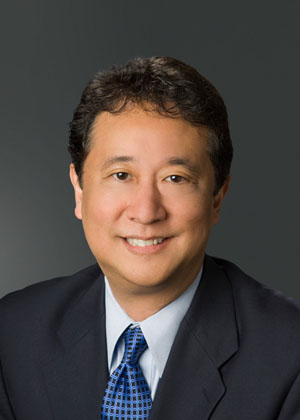 Kevin Iwamoto, is a former resident of Honolulu
and a University of Hawaii, School of Travel Industry Management (TIM) graduate.
He earned his Masters Global Leadership Professional (GLP) designation from the
Wharton School of Business. Mr. Iwamoto is currently VP of Enterprise Strategy
at Philadelphia-based StarCite, Inc., which provides global Web-based solutions
to help buyers and suppliers strategically manage corporate meetings and events.
Iwamoto is a highly respected and recognized business travel industry leader
with 20-plus years experience managing corporate travel and meetings programs.
He was president & CEO of the National Business Travel Association (NBTA) from
2001-2003, where he founded the global Paragon Partnership organization, and
forged a relationship between NBTA and Meeting Planners International and
created the NBTA Groups and Meetings Committee. Kevin has also won every major
travel industry award and recognition, culminating in 2009, when he received the
NBTA's "Industry Icon Award," the association's highest honor. The award
recognizes outstanding lifetime contributions to the managed travel and meetings
industry. At StarCite, Iwamoto also writes the popular blog, Strategic Meetings
Management
http://blog.starcite.com/blog/strategic-meetings-management-2. He is highly sought after by the global media as a subject matter
expert for business travel and strategic meetings management.
Kevin Iwamoto, is a former resident of Honolulu
and a University of Hawaii, School of Travel Industry Management (TIM) graduate.
He earned his Masters Global Leadership Professional (GLP) designation from the
Wharton School of Business. Mr. Iwamoto is currently VP of Enterprise Strategy
at Philadelphia-based StarCite, Inc., which provides global Web-based solutions
to help buyers and suppliers strategically manage corporate meetings and events.
Iwamoto is a highly respected and recognized business travel industry leader
with 20-plus years experience managing corporate travel and meetings programs.
He was president & CEO of the National Business Travel Association (NBTA) from
2001-2003, where he founded the global Paragon Partnership organization, and
forged a relationship between NBTA and Meeting Planners International and
created the NBTA Groups and Meetings Committee. Kevin has also won every major
travel industry award and recognition, culminating in 2009, when he received the
NBTA's "Industry Icon Award," the association's highest honor. The award
recognizes outstanding lifetime contributions to the managed travel and meetings
industry. At StarCite, Iwamoto also writes the popular blog, Strategic Meetings
Management
http://blog.starcite.com/blog/strategic-meetings-management-2. He is highly sought after by the global media as a subject matter
expert for business travel and strategic meetings management.
February 24 2010
Hong Kong Taxpayers will receive 1.29
billion of relief package
Hong Kong is smaller than the Island of Kauai with 7 million people. Like
Hawaii, Hong Kong has no natural resources. Let us take a look at what the two
(2) governments are doing for their people. Hong Kong under one-country-two
systems of the People Republic of China and Hawaii of the United States of
America.
There are more than 100,000 Americans working and living in Hong Kong,
including many from Hawaii.
Let us take a look at the new budget proposed by the Hong Kong Government, what
are they doing for the people and business there?
Why could we "not" do more for
the People and Businesses in Hawaii?
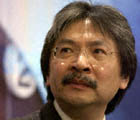 Financial Secretary John Tsang Chun-wah is
expected to dole out fresh sweeteners in his forthcoming budget, including a
salaries tax rebate of up to HK$6,000
(US$779) and a
property rates waiver for two quarters. Financial Secretary John Tsang Chun-wah is
expected to dole out fresh sweeteners in his forthcoming budget, including a
salaries tax rebate of up to HK$6,000
(US$779) and a
property rates waiver for two quarters.
Other relief measures likely to be announced by the finance chief in his budget
on Wednesday include a one-off allowance for welfare recipients and the elderly
as well as subsidies for children from low-income families to help them pay
their internet access charges.
The relief package will be worth
more than HK$10 billion (US$1.29 billion).
A person familiar with the government's financial position said the
administration would only announce relief measures which had been implemented
before.
The salaries tax rebate of up to HK$6,000 (US$779) per taxpayer would take about
HK$4.1 billion (US$572 million) from the public coffers, while the rates waiver
for two quarters will cost the government HK$4.2 billion (US$545 million).
The offer of these two sweeteners would be similar to those granted by the
financial secretary in his budget last year.
He is also likely to provide a matching grant of at least
HK$1 billion (US$129 million) for
applications by universities, to
encourage them to seek private donations.
The government has handed out HK$87.6 billion (US$11.37 billion) since February
2008. Tsang's maiden budget included measures worth HK$44.11 billion (US$5.72
billion), which the financial secretary characterized as returning wealth to the
people.
In July 2008, the government announced measures worth HK$11 billion (US$1.42
billion) to address inflation. Last year's budget, delivered in the wake of the
global financial crisis, included measures worth HK$10 billion (US$1.29 billion)
targeting jobs, competitiveness and economic development.
In May last year the government announced further measures, largely extensions
or reruns of those delivered in one or more of the three previous packages.
Hong Kong's economy will expand 4-5 percent this year, Financial Secretary John
Tsang said in his annual budget speech on Wednesday, February 24 2010, adding
the government will increase land supply and raise its transaction tax on luxury
homes to curb rising property prices.
Following are further highlights from Financial Secretary John Tsang's address
to the Legislator on Feb 24 2010:
OTHER MAJOR ECON DATA AND MEASURES:
-- Forecast inflation of 2.3 percent in 2010.
-- To raise stamp duties on transactions for property worth over HK$20 million
(US$2.58 million) to 4.25 percent from 3.75 percent with effect from April 1.
-- The government will quicken the pace of approving new flat supply in coming
few years and will explore means to revitalise the government's Home Ownership
Scheme to increase home supply.
-- The number of private residential units completed in 2010 will increase to
14,300 and there will be about 53,000 private residential units coming onto the
market in the coming three to four years.
-- The government will put up more urban residential sites for sale by auction
or tender in the coming two years, depending on market conditions.
-- The full (unlimited) bank deposit guarantee, introduced in 2008 during the
global financial crisis, will remain in force until the end of this year.
-- The estimated capital works expenditure for 2010/11 will increase to HK$49.6
billion (US$6.5 billion), from HK$45.1 billion in 2009/10. Major projects
include the Kai Tak Cruise Terminal Building and ancillary facilities, and
boundary crossings for the Hong Kong-Zhuhai-Macao Bridge.
-- Will continue to study refinements to yuan trade settlement services, to
promote the expanded use of yuan outside China, and to develop the yuan clearing
platform in Hong Kong.
-- Will further promote the development of yuan bond business in Hong Kong,
expand the issuance size of bonds and increase the types of bond issuers. The
amount of yuan bonds issued in Hong Kong reached 16 billion yuan last year,
including 6 billion yuan of sovereign bonds launched in Hong Kong for the first
time.
-- In addition to the current waiving of stamp duty for trading of exchange
traded funds (ETFs) with no Hong Kong stocks in their portfolio, the government
proposes to extend the stamp duty concession to cover ETFs that track indices
comprising not more than 40 percent of Hong Kong stocks, in an effort to reduce
the trading cost and promote healthy growth of the ETF market.
-- Proposes to reduce 75 percent of salaries tax and tax under personal
assessment for 2009-10, subject to a ceiling of HK$6,000. It will cost the
government about HK$4.5 billion (US$584 million).
-- Hong Kong posted a provisional HK$13.8 billion (US$1.79 billion) consolidated
surplus for 2009/10
BACKGROUND
-- The government had expected the economy to shrink by 3.3 percent last year.
Hong Kong's third-quarter data was weaker than expected, though retail sales and
exports have picked up, along with private consumption as the unemployment rate
continues to stabilize and a surge in the city's stock and property markets has
created a wealth effect.
-- Hong Kong pulled out of recession in the second quarter. Consumer spending is
expected to improve in coming months as confidence in economic recovery grows,
although it will be capped by weak wage growth as a recovery in corporate
earnings is expected to be slow, analysts have said.
-- The government has expressed concern about the risk of an asset bubble
developing although it is not apparent yet. Property prices in the city have
surged 30 percent this year, and price gains for luxury property have topped 40
percent, as the city has attracted excess global liquidity and wealthy mainland
Chinese have been snapping up luxury apartments.
Key points in the budget
One-off relief measures
* Salaries tax reduction of 75 per cent, capped at HK$6,000
* Property rates, capped at HK$1,500 per quarter, waived for a year
* Rent for public housing tenants waived for two months
* An extra month of CSSA payment, Old Age Allowance and Disability Allowance
* Business registration fee waived for a year
* Students receiving CSSA or student financial assistance will be given HK$1,000
allowance
Property
* Stamp duty on transactions over HK$20 million increased from 3.75 per cent to
4.25 per cent; buyers cannot defer stamp duty payment
* Several urban residential sites on Land Application List put up for sale by
auction or tender in the coming two years if they have not been triggered, if
needed
* Housing Authority to explore ways to revitalize secondary market of Home
Ownership Scheme flats
Economic development
* Stamp duty concession in trading of exchange traded funds extended
* Concessionary profits tax rate extended to cover qualifying debt instruments
* Profits tax deductions for purchase of registered trademarks, copyrights and
registered designs
* Phase three development of Hong Kong Science Park started
* Construction Industry Council will receive HK$100 million for training and
related work
Medical
* Hospital Authority will receive additional HK$1.24 billion for the training of
nurses and providing services for cataract, renal and cancer patients and expand
the usage of nine drugs already in use
* About HK$600 million allocated in the next three years to strengthen primary
care services
* HK$104 million allocated to vaccinations, including a new Vaccination Office
* Additional HK$40 million to enhance drug safety monitoring
Tobacco Control
* Duty-free concessions on tobacco for incoming passengers abolished
Building maintenance and redevelopment
* Additional HK$500 million for Operation Building Bright to help owners
maintain their buildings
* Urban Renewal Authority to launch redevelopment project near collapsed
building in Ma Tau Wai Road
* Government will consider relocating its offices and facilities to old
industrial buildings
Environment
* A HK$300 million Pilot Green Transport Fund to encourage buses, taxis and
ferries that use green technology
* Subsidies totalling HK$540 million to replace Euro II diesel commercial
vehicles
Education
* About 300,000 low-income families will receive a subsidy of HK$1,300 or HK$650
a year for their children's internet access fees
* Site at the former Queens Hill Camp in the New Territories will be reserved
for establishing a self-financing tertiary institution, which is expected to
provide 8,000 degree places
* HK$1 billion allocated for the Matching Grant Scheme for tertiary institutions
* The Language Fund will get a HK$500 million injection to upgrade proficiency
in English and Chinese
Employment
* A two-year Pilot Employment Navigator Program launched, which will offer job
seekers a HK$5,000 cash incentive
* A 12-month training and internship program to allow 500 young people with poor
qualifications to work at NGOs. Government will sponsor each intern HK$4,500 a
month, plus giving them HK$4,000 for job training during the program
Welfare
* Over 1,000 additional nursing home places for the elderly will be offered
after raising recurrent funding by HK$160 million
* Lotteries Fund will earmark HK$282 million for pilot schemes on home care for
the elderly and disabled and a pilot Bought Place Scheme for the disabled
* Nearly HK$200 million to enhance medical and community support for mental
patients
* Partnership Fund for the Disadvantaged will receive HK$200 million
Culture and sports
* Extra HK$486 million for art program development in the next five financial
years, including HK$69 million for Cantonese Opera Development Fund
* Injection of HK$3 billion into the Arts and Sport Development Fund as seed
money
* Beat Drugs Fund will receive HK$3 billion and an additional HK$52 million will
be allocated for anti-drug initiatives in 2010-2011
http://www.budget.gov.hk/2010/eng/speech.html
February 20 2010
Wok of ages - A tycoon has brought under one roof some of
Malaysia's best street food in the hope of preserving traditional family recipes
By Sean Yoong
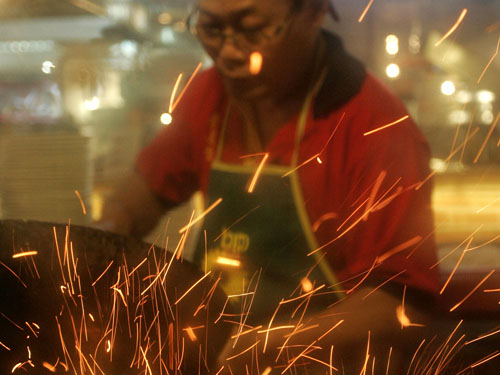 Food bloggers have expressed their delight
at the variety of good food on offer at Hutong, which attracted an estimated
250,000 customers in December alone Food bloggers have expressed their delight
at the variety of good food on offer at Hutong, which attracted an estimated
250,000 customers in December alone
Before you glimpse the roast duck on skewers, before you hear the clanging
Chinese woks, the first hint that you're approaching a melting pot of
generations-old family recipes is the sizzling smell of charcoal-fired noodles.
The place is Malaysia's newest food court, whose modern sleekness in a bustling
mall belies the rich history of its offerings: many outlets here are run by
families who have hawked their food for decades in pushcarts on the streets of
Kuala Lumpur, surrounded by traffic fumes, noise and heat.
Now, these masters of classic cooking - once scattered across the city - have
come under one air-conditioned roof at the Hutong food court, keeping alive a
heritage that some feared would be gobbled up by fast-food chains.
"We have a legacy of 60 years," says Herbert Wong, whose grandfather pioneered a
back-alley rice porridge business in Kuala Lumpur's Chinatown in 1949.
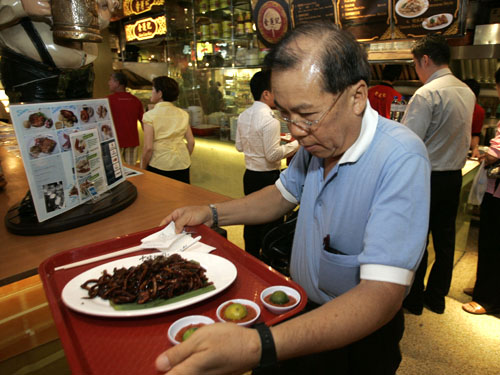 Food bloggers have expressed their
delight at the variety of good food on offer at Hutong, which attracted an
estimated 250,000 customers in December alone Food bloggers have expressed their
delight at the variety of good food on offer at Hutong, which attracted an
estimated 250,000 customers in December alone
"The recipe is the same - since my grandfather's time, we did not change
anything," Wong says while watching his employees prepare piping-hot bowls of
creamy porridge topped with raw fish, pork intestines and handmade meatballs.
Like Wong's locally famed Hon Kee Porridge business, the most prominent tenants
at Hutong are ethnic-Chinese Malaysians who have whipped up a culinary storm for
decades, earning immense popularity because their recipes handed down over
generations were known to be the best in town.
The recipes were brought by Chinese immigrants to the country during the British
colonial era of the 19th and early 20th centuries. Most of it is cheap, hearty
and fast to cook. But the vendors are ageing and some of their children are
reluctant to take over the business because of the long, exhausting hours in
hot, humid conditions. Also, most of the children are better educated - Wong is
a Singapore-trained mechanical engineer - and can secure more professional jobs.
Fearing these signature recipes might some day be lost forever, Malaysian tycoon
Francis Yeoh persuaded selected hawkers to open stalls in a food court in Lot 10
- one of Yeoh's shopping malls - overseen by their own family members who
control how the dishes are prepared.
"It's good because you can see all these famous brands in one place and you can
make sure that they stay alive," says 62-year-old Lee Ah Sang, who started
selling bak kut teh, a herbal broth made with pork ribs, nearly 40 years ago.
Yeoh, a self-avowed foodie and savvy entrepreneur who runs the property and
utility empire YTL, hand-picked the vendors for Hutong, which he dubbed a
"gourmet heritage village".
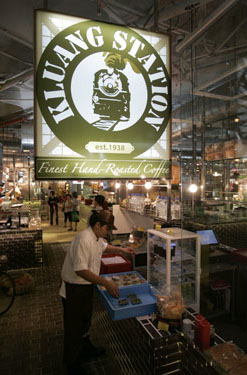 Vendors prepare their dishes. There are more than 20 stalls in the sprawling but
cluttered food hall.
Vendors prepare their dishes. There are more than 20 stalls in the sprawling but
cluttered food hall.
Hutong - Mandarin for courtyard neighborhoods traditionally found in Beijing -
fits the look of this place. It's a sprawling but cluttered area where 20-odd
stalls seem to spill over to one another. Customers jostle for space during
lunch hour, when the mall benefits from being at the intersection of the
downtown commercial and tourist district.
Yeoh's spokesman estimates 250,000 people visited Hutong in December, its first
full month - an impressive figure because most of Hutong's stalls serve pork,
which is off-limits for the ethnic-Malay Muslims who comprise nearly two-thirds
of Malaysia's 28 million people. Customers are mainly from the ethnic-Chinese
minority.
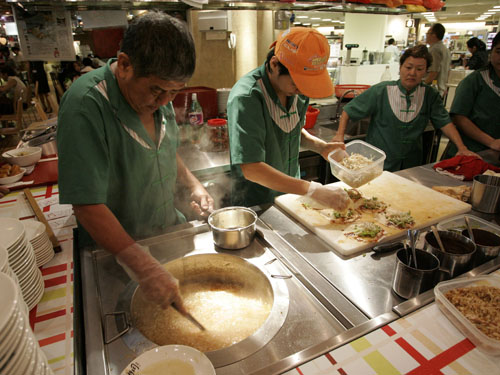 Food bloggers have raved about being
able to sample such a vast variety without having to travel to each of the
businesses' original stalls. Hutong's success is gratifying for vendors such as
David Low, one of the few non-Malaysians whom Yeoh invited. Low, a Singaporean,
has been preparing variations of Malaysian Chinese food, including oyster
omelette and stir-fried noodles with prawns, in the neighbouring city state
since 1972. Food bloggers have raved about being
able to sample such a vast variety without having to travel to each of the
businesses' original stalls. Hutong's success is gratifying for vendors such as
David Low, one of the few non-Malaysians whom Yeoh invited. Low, a Singaporean,
has been preparing variations of Malaysian Chinese food, including oyster
omelette and stir-fried noodles with prawns, in the neighbouring city state
since 1972.
"For the older generation, they loved these kinds of dishes. But now, the
younger people go for McDonald's, Western food, Japanese food. Slowly this kind
of food might die out," says Low, whose children work as accountants and
bankers, and declined to join him in the venture.
Even so, the booming business at Hutong indicates people aren't ready to let
these foods go. Despite the proliferation of sushi bars and burger franchises
nearby, young office workers and families with teenagers are among the
customers.
Yeoh's plan to preserve the recipes for many years to come also seems to be
working because some of the vendors' children have shown increased interest in
working in Hutong's clean, comfortable environment.
"Each generation will reap what the former generation has sown," says Tan Kai
Yong, Yeoh's mother, who helped launch Hutong. "It is my joy that we are able to
share the good food that we have enjoyed - not only with my children, but with
my grandchildren and their children's children. With Lot 10 Hutong, we are
preserving a cultural and culinary legacy."
February 9, 2010
Tourism school should be
separate (UH TIM School)
As a 30-year travel industry executive, including a tenure as president and
COO of Hawaiian Airlines and a former Travel Industry Management School advisory
board member, I am deeply concerned about the loss of the TIM School's
independence.
As someone who strongly believes in the need for a premier travel industry
school in Hawai'i, I find it extremely disturbing that your editorial staff and
the relatively new university administration appear to be rushing to judgment
over the future of TIM.
TIM has not only remained a relevant part of the university, the Hawaiian
community and the worldwide travel industry, it has actually excelled. Year
after year, TIM, its students and faculty are the recipients of numerous
academic and industry awards and certifications.
Through those achievements and its innovative programs, TIM has long held a
leadership position in the global travel and tourism industry. Its graduates,
students and faculty have not only served as a unique resource in Hawai'i, but
are often at the forefront for identifying, addressing and providing innovative
solutions for a variety of travel industry issues.
TIM needs to be strengthened, not subjected to the bureaucratic ways of the
business school, serving so many different academic disciplines.
It is my opinion that a merger as contemplated will diminish the TIM mission and
organization, lay aside the almost 50-year history of academic and individual
accomplishments, tarnish a hard-earned world-class reputation and quickly lead
to the marginalization of what should be the leading travel industry and tourism
education and knowledge-creation program in Hawai'i and the Asia-Pacific region.
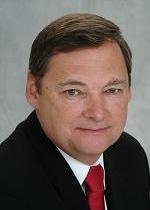 Robert W. Zoller, Honolulu, Hawaii
USA Robert W. Zoller, Honolulu, Hawaii
USA
Robert W. Zoller has a distinguished and successful passenger, cargo and
military aviation career with more than 30 years experience, highlighted by
executive and Board of Director positions of increasing scope and
responsibility. Mr. Zoller's management and consulting work includes service
with: American Airlines, Hawaiian Airlines, Airtran Airways, USAIR, Saudi
Arabian Airlines, other airlines and logistics companies, government regulatory
authorities and numerous transportation industry organizations.
Mr. Zoller is currently President and Managing Partner for International
Management Decisions (IMD) providing Middle East, Asia and U.S.-based investors
and Boards of Director strategy and management services. Zoller has earned
Master of International Business Administration (MIBA) and a Bachelor of Science
(BS, Economics and Business Administration) degree from the University of
Maryland, College Park, MD.
Jan 27, 2010
2010: The Year of
Transformation
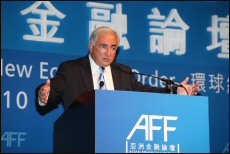 Asia has a
crucial role to play as the world economy undergoes transformation, predicts IMF
Chief Dominique Strauss-Kahn Asia has a
crucial role to play as the world economy undergoes transformation, predicts IMF
Chief Dominique Strauss-Kahn
The record attendance at the Asian Financial Forum (AFF) 2010 reflected keen
interest in the Forum’s theme: “Asia in the New Economic Order.” As the world
recovers from the financial crisis, the global economic landscape is changing,
most noticeably in a shift of influence from the west to Asia.
Over the two days of the AFF, more than 1,500 bankers, institutional investors,
fund managers, regulators, senior executives and journalists from around the
world gathered at the Hong Kong Convention and Exhibition Centre to hear leading
financial thinkers discuss Asia’s growing role in the post-crisis economy.
The consensus at the conference, held 20-21 January, was that the global
economic recovery is in motion – with plenty of warnings about risks that could
yet derail it – and that the rebound is being led by Asia, particularly the
Chinese mainland. During the Forum, Beijing announced that the mainland’s GDP
had grown a robust 8.7 per cent in 2009.
Asia’s New Status
“2008 was certainly a year of humility, where our confidence in markets,
institutions and the status quo turned out to be complacency,” Dominique
Strauss-Kahn, Managing Director of the International Monetary Fund, told the
Forum’s plenary session. “Now we know how fragile and interconnected we are.” He
added that 2009 “was a year of unity, where everybody came together to avoid
something which could happen such as the Great Depression.”
This year, he said, “has to be the year of transformation, not only the
transformation in the balance of power between east and west, but also
transformation in terms of global cooperation, and the fact to be aware that
working together, we can build something that is different from the kind of
economy we had before. From this point of view, Asia has certainly a crucial
role to play.”
Strong Mainland Presence
The Forum, organized by the Hong Kong Government and the Hong Kong Trade
Development Council (HKTDC), featured a number of senior mainland officials.
These included Liu Mingkang, Chairman of the China Banking Regulatory
Commission; Lou Jiwei, Chairman and CEO of China Investment Corporation (CIC),
the country’s sovereign wealth fund; and Huang Huahua, Governor of Guangdong
Province.
Mr Liu said credit played a primary role in the Central Government’s recovery
stimulus package by supporting massive infrastructure investment. “This year, we
will continue to control the pace and amount of the credit supply,” Mr Liu told
the Forum, adding that he expects it to decline to Rmb7.5 trillion this year
from a record Rmb9.5 trillion in 2009.
CIC’s Mr Lou noted the rapid growth of the world’s emerging markets. They have
been “the major stabiliser in the global crisis,” he said, and with their
growing reserves, they are increasingly looked to by developed economies for
financing.
Governor Huang, a keynote speaker on the Forum’s first day, outlined the
existing financial cooperation between Guangdong and Hong Kong and called for
even greater collaboration among cities in the Pearl River Delta.
Marquee Speakers
 Economist Nouriel
Roubini warns of a possible slowdown in the US, Europe and Japan in the second
half of the year Economist Nouriel
Roubini warns of a possible slowdown in the US, Europe and Japan in the second
half of the year
More than 60 distinguished speakers addressed the Forum, including such
influential international figures as Nouriel Roubini, Professor of Economics at
New York University’s Stern School of Business; Stephen Roach, Chairman of
Morgan Stanley Asia; and E Gerald Corrigan, Managing Director of Goldman Sachs
and former President of the Federal Reserve Bank of New York.
Professor Roubini, the keynote speaker at lunch on the second day, said the
mainland’s challenge was to move from an export-led growth model to one of
private consumption demand.
He also warned of a possible slowdown in the United States, Europe and Japan in
the second half of this year. “I think that could be the beginning of a market
correction,” he said, “because the macroeconomic news is going to surprise on
the down side, because earnings news is going to surprise on the down side,
because the ability of firms to cut costs is going to run its course.”
Still, he said, the world avoided a financial meltdown. “The recovery is
certainly much more robust in Asia. It is a region that, because of its own
financial macro and policy fundamentals, has a much better outlook for sustained
long-run economic growth, as long as some of those policy challenges I discussed
are going to be faced by the policymakers.”
During a panel discussion on China-focused topics, Dr Roach tried to rouse the
gathering from its “complacency.”
“You’ve figured out that the west is in trouble because of the crisis and is
likely to be in trouble for some time to come, so you presume that you will
inherit the earth and the Asian century has arrived,” he said. “I’m an optimist
on Asia. I moved out here nearly three years ago because I believe in the future
of this region. But it’s not going to be that easy. It doesn’t happen quickly.
It’s going to take a lot of heavy lifting for the region and for China.”
Mr Corrigan urged policymakers to stick with the recovery agenda. “Even though
the darkest days of the crisis occurred more than a year ago, the legacy of the
crisis in terms of swollen central bank balance sheets, large governmental
capital interventions in both financial and non-financial institutions and
virtually unprecedented budgetary deficits in the US, and elsewhere, remain,” he
said.
Hong Kong’s Role
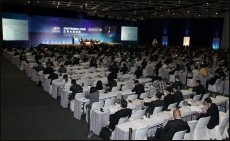 Record attendance at
this year’s Asian Financial Forum Record attendance at
this year’s Asian Financial Forum
The AFF also featured leading government officials from Australia, Indonesia,
Japan, Malaysia, South Korea, Thailand and Hong Kong.
Hong Kong Chief Executive Donald Tsang, in his opening address, said that the
international community expected Asia – and Hong Kong – to play a larger part in
the changing economic landscape.
“Through closer financial cooperation, we aim to play an exemplary role in
promoting intra-Asia financial collaboration and integration,” Mr Tsang said.
“In particular, we have the experience, the expertise and the motivation to
better connect our nations and partners in the region and around the world.”
When to Exit?
One of the key debates at the Forum was when and how governments should wind
down their stimulus programmes.
“Exiting the crisis is a real problem,” said Mr Strauss-Kahn. “Everybody came
into the crisis almost at the same time. The recovery has different speeds, so
different countries will exit from the crisis at different points in time.” He
said coordination was essential to avoid spillover of negative effects. “If you
wait too long, it’s a waste of resources. The longer you have a stimulus in
place, the bigger the public debt, and obviously reducing the public debt will
be the top priority for most countries in the coming years. But, on the other
hand, if you exit too early, you have a risk of a double dip.”
“Dealing with these fiscal challenges in the near to long term is key to all
advanced economies,” Professor Roubini said. “The trouble is if you contract
fiscal policy too soon, you end up in recession. If you do it too late, you make
another policy mistake that leads to stagflation and inflation.”
By the time the Forum wrapped up, such key topics had been thoroughly aired.
“The AFF is a really premier forum,” said Professor Roubini. “The most important
economic, policy and financial issues that are facing Asia in general, China and
Hong Kong specifically, are being discussed, and are being discussed at the
highest level.”

  Lee Jong-Wha: "V-shaped" Asian recovery in 2010
http://www.youtube.com/watch?v=xKd1kmdDM3Y
Lee Jong-Wha: "V-shaped" Asian recovery in 2010
http://www.youtube.com/watch?v=xKd1kmdDM3Y
Jan 23, 2010
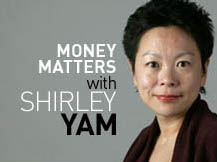 A tale of two cities and
their abiding suspicions - Shirley Yam* A tale of two cities and
their abiding suspicions - Shirley Yam*
The Hong Kong-Shanghai relationship has always been handshakes and smiles in
public and back-stabbing in private. This week there were more public embraces,
and with an intensity that we haven't seen before.
On Tuesday, to the surprise of many, a Shanghai official delegation arrived in
Hong Kong to sign a memorandum of understanding with Hong Kong pledging
co-operation on all financial fronts. At the ceremony, Shanghai deputy mayor Tu
Guangshao said: "Shanghai cannot prosper without Hong Kong's mentoring."
The day after, at the Asian Financial Forum attended by hundreds of foreigners,
he spoke for the first time about the strategic importance of Hong Kong-Shanghai
co-operation in the world's new financial order. "This is no zero-sum game," he
said at the conclusion of his 15-minute talk.
Less than 24 hours later, at the same forum, the president of the Shanghai Stock
Exchange, Zhang Yujun, told how much they had learned from Hong Kong.
"Market practitioners are a bit worried" [about the building of Shanghai into a
financial centre], he said. "That is unnecessary. Hong Kong has always been our
model and benchmark."
In the evening came the signing of an accord between the Hong Kong and Shanghai
bourses, promising more collaboration on product and technology development as
well as exchanges of talent.
In a rare press conference that followed, Zhang answered questions about the
controversial plan to list international corporates in Shanghai.
"You should not be scared," he said. "The number [of foreign issuers] will be
small. Our focus is always domestic corporate ... There are more than enough to
be listed [both in Hong Kong and Shanghai] till the retirement of me and [HKEx (SEHK:
0388, announcements, news) chief executive Li] Xiaojia."
Then came the champagne toast led by deputy mayor Tu, who described the accord
as "a very important consensus on very important issues reached by two very
important institutions at a very important time".
"Co-operation will be the loudest key melody between Hong Kong and Shanghai in
the time to come," Tu said.
Overwhelming, isn't it? Yet none of these speeches or agreements had been
planned until late last month, according to various sources.
"There have been lots of undercurrents in the past few months ... There is an
urgent need to do something about [the animosity between Hong Kong and
Shanghai]," one insider said.
The rivalry between the two cities is nothing new. The tension, at least on the
Hong Kong side, rose to a new level last spring when the State Council committed
in a policy paper to make Shanghai a financial centre by 2020.
Two letters from the office of the Hong Kong chief executive subsequently
arrived at the State Council, in September and November.
They expressed grave concern about the plan to allow the listing of
international companies such as HSBC (SEHK: 0005, announcements, news) and NYSE
Euronext in Shanghai, according to two informed sources. The letters said
Shanghai's so-called international board would compete against the Hong Kong
bourse, the success of which was vital to the prosperity (SEHK: 0803,
announcements, news) and stability of the city.
This is not the first time the Hong Kong government has complained. In 2007 a
similar petition was made against the listing of Hong Kong-listed red chips on
the mainland market.
But the times are different now. The 2008 financial crisis exposed the weakness
of United States-dominated financial mechanisms. It accelerated the rise of
China and increased the country's determination to play a leading role in
creating a new order. And this required the existence of a "national" financial
industry that is vibrant, safe and sophisticated.
Just imagine the introduction of the yuan as a reserve currency or China having
an important role in the international financial community without a mature
onshore and offshore yuan market.
While the rest of the world will do their best to delay this process, internal
bickering between Hong Kong and Shanghai is the last thing Beijing wants to see.
For Shanghai, the need to befriend Hong Kong - a city of huge political
importance in the eyes of Beijing - is also getting obvious. The complaints from
Hong Kong put a brake on the listing of international firms and red chips.
Therefore, in Tu's words, "with the will of the central government, the support
of relevant central departments and the effort of both Hong Kong and Shanghai,
we have improved our communication".
The result is this week's all-out campaign to woo Hong Kong, the pledge by the
Shanghai bourse to encourage more locally listed firms to come, and the first
open support of the international board by the Hong Kong exchange.
Yet response from the local community remains cold. The accords made no splash
in newspapers. Some even called the effort "sleeping with the enemy".
That is not difficult to understand. First, the accords are no more than a
collection of projects that have already been going on. Second, Hongkongers have
seen similar initiatives many times before.
There was the 1994 initiative proposed by then-Shanghai mayor Xu Kuangdi. There
was the 2003 initiative signed by then-Hong Kong chief executive Tung Chee-hwa
and former Shanghai party boss Chen Liangyu, with the encouragement of state
leader Zeng Qinghong.
Tung even assigned the financial secretary to head a joint working group with
his Shanghai counterpart, giving it more significance than the current one,
which is to be headed by the minister for financial services and the treasury.
Yet none of the past initiatives produced any results. In fact, no meeting was
held after the 2003 inauguration.
"There's no incentive to push forward," a source involved in the 2003 initiative
said.
The intention of state leaders to bring the two sides together should not be
doubted. However, the suspicion between the two cities is simply too deeply
rooted to be removed by a piece of official paper.
"There is an urgency to make it real this time," the insider said.
Let us hope so.
*Veteran journalist Shirley Yam brings you insights on
financial issues and mainland policies affecting your investment and business
January 10
2010
Paradigm in Progress
As the world pulls out of its deepest recession in 80 years, a new economic
paradigm is emerging, one that sees a fundamental correction addressing global
imbalances. The savings rate in the United States is set to increase, and
Chinese mainland domestic demand is expected to absorb excess production
capacity growth.
Overall business in traditional markets is not expected to return to pre-crisis
levels any time soon, so Hong Kong exporters will have to fix their sights on
emerging markets if they want to achieve significant sales expansion. But at
least they’re actually looking at expansion. How different that scenario is from
just a year ago. Although the US subprime crisis precipitated the collapse of
global markets in 2008, the underlying fuel for the crisis was over-spending in
so-called rich countries and excessive savings in emerging economies. That was
particularly so in developing Asia, led by the mainland.
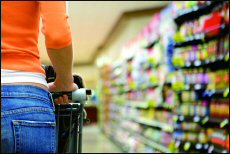 Of the emerging markets, the most promising
remain developing Asia (the mainland, India and emerging member countries of the
Association of Southeast Asian Nations (ASEAN), with Taiwan and South Korea).
And the mainland holds the largest potential, thanks to measures aimed at
boosting incomes and consumption. Of the emerging markets, the most promising
remain developing Asia (the mainland, India and emerging member countries of the
Association of Southeast Asian Nations (ASEAN), with Taiwan and South Korea).
And the mainland holds the largest potential, thanks to measures aimed at
boosting incomes and consumption.
Within ASEAN, Vietnam is likely to post the fastest growth over the medium term;
Malaysia and Indonesia are other bright spots. India is expected to grow faster
due to its large domestic market and lesser reliance on trade.
Central and Eastern Europe could benefit from the EU’s recovery to an extent but
are still suffering from the western European credit crunch, while Russia and
the Middle East are on course to take advantage of reviving oil and commodity
prices.
Buyers in emerging markets are more cost-conscious than they used to be, despite
increasingly positive market news. They tend to place smaller orders than those
in mature markets, but they are also more willing to accept simpler design –
less functionality in electronics, for example – and are more receptive to new
brands.
Indeed, the numbers of buyers in fledgling markets are due to increase given the
emergence of new middle-income class members, modernizing retail practices and
sustained trade liberalization.
Practical Trumps Luxury
 Consumers will be looking for value and
practical use. Recession-led trends in the mature markets will likely solidify
into long-term structural changes. Spurred by household deleveraging, higher
savings and cutbacks in spending, consumers in developed markets, not least the
US, are generally inclined to prefer practical, durable, value-for-money
products rather than luxury items. Consumers will be looking for value and
practical use. Recession-led trends in the mature markets will likely solidify
into long-term structural changes. Spurred by household deleveraging, higher
savings and cutbacks in spending, consumers in developed markets, not least the
US, are generally inclined to prefer practical, durable, value-for-money
products rather than luxury items.
Sales of competitively priced products that are stylish, safe and
environmentally friendly have strengthened, while private labels are gaining
popularity over branded products.
Consumers in traditional markets can also be expected to stick to discounters
and hypermarkets. Increasing retail concentration will force closures of
specialty and smaller stores, as well as the demise of smaller and inefficient
players along the distribution chain. As the winners grow larger, they may have
higher expectations of their suppliers, moving away from traditional sourcing
channels.
Changes in Sourcing Habits
 To streamline sourcing operations,
overseas buyers will likely reconstruct their supply chains and reduce their
suppliers. The mainland should remain the top sourcing destination, although the
focus will extend beyond the Pearl River Delta (PRD) to the Yangtze River Delta
and other parts of the mainland. To streamline sourcing operations,
overseas buyers will likely reconstruct their supply chains and reduce their
suppliers. The mainland should remain the top sourcing destination, although the
focus will extend beyond the Pearl River Delta (PRD) to the Yangtze River Delta
and other parts of the mainland.
Products such as clothing, footwear and travel goods, which need fewer
supporting industries, may face keener competition from Asian production centers
such as Vietnam.
Sourcing channels used by overseas buyers are evolving, too. For now, trade
fairs and exhibitions, existing suppliers/referrals and Internet websites and
trade portals are the most preferred channels.
Over the short to medium term, it is expected that buyers will move further
towards non-traditional channels, including electronic trade magazines and
product catalogues. But trade fairs and exhibitions will likely remain an
effective means of sourcing.
Value-added Strategy
Bigger, leaner suppliers have filled the gap left by the closure of less
efficient producers. In many cases, surviving suppliers have scaled down
production capacity, yet increased outsourcing to reduce overhead and to handle
small, rush orders.
It is generally expected that the number of Hong Kong suppliers will rise again.
These are unlikely to return to pre-crisis levels in the near term, however, as
overseas demand is forecast to grow more slowly than before.
Many Hong Kong manufacturers, mainly family firms, are faced with succession
problems, as their founders reach retirement but younger family members choose
not to take over the reins.
Like their counterparts on the mainland, Hong Kong exporters and manufacturers
operating in the post-recession era are expected to transform and upgrade
themselves, adopting a high-value-added strategy to secure a foothold in the
competitive business environment.
Tinkering in the World’s Factory
The Pearl River Delta has long been China’s manufacturing heartland. Yet rising
production costs, coupled with a tougher business environment, have forced
manufacturers to consider moving to lower-cost regions. Chinese government
efforts to encourage industry relocation and upgrades provide another driving
force.
Many plans have been on hold because of the global recession, but industry
relocation is expected to pick up, with manufacturing bases increasingly
extended to the Yangtze River Delta and inner regions. Enterprises are expected
to explore lower-cost centres within regions. But China’s role as the world’s
factory still appears secure. No other country possesses such huge production
capacity, capability and sophisticated support industries.
The production supply chain will likely go abroad, with China remaining the
region’s production hub. Mainland manufacturers are under mounting operational
pressures, and a significant number have closed amid waning exports.
Large-scale manufacturers and those engaging in domestic business or benefiting
from government support are less affected. Larger suppliers able to meet the
stringent product safety standards of developed economies are likely to survive.
More significantly, industry consolidation seems to be irreversible. Surviving
manufacturers will become bigger, buoyed by government initiatives to encourage
industry upgrades and environmental protection, and rising foreign demand for
safe, quality products.
Increasingly, they will be able to produce items ranging from high-tech finished
goods to raw materials and semi-manufactured items. More large manufacturers
will be able to develop their own brands, selling directly to overseas markets,
while capturing a share of the lucrative domestic business.
Most probably, Hong Kong suppliers will continue to move up the value chain,
undertaking product design and brand promotion, while relocating production
bases away from the PRD to other parts of the mainland, or even to other
countries.
They are also expected to further diversify into emerging markets. Even so, Hong
Kong suppliers are now showing a keen interest in the mainland market,
notwithstanding the operating hurdles.
Hong Kong’s role as a sourcing hub is expected to remain sustainable. According
to a Hong Kong Trade Development Council survey last April on mega fairs, 96 per
cent of overseas buyers said they would increase or maintain their sourcing with
or through Hong Kong once the economy recovers.
Despite this promising finding, the challenges are intensifying for Hong Kong
firms. With export demand from traditional markets unlikely to return to
pre-crisis levels soon, consumers are expected to continue to look for discount
and practical items, while retailers and importers hold the bargaining power
over suppliers.
Hong Kong suppliers also face operating difficulties on the mainland, from
rising labour costs to tougher environmental protection regulations, while
confronting increasing competition from indigenous mainland enterprises.
Business Instincts
To enhance competitiveness, Hong Kong will have to build credibility, expertise
and effectiveness as a marketing platform, especially sharpening skills in sales
and marketing, product design, quality assurance and supply-chain management.
Hong Kong companies will have to make good on their grasp of evolving consumer
trends, then formulate the right product and marketing strategies. They will
also need to reach out to low-cost retailers, particularly discounters and
hypermarkets.
To meet continuing demand for quick response and flexible delivery, traders also
have to strengthen their supply-chain management. Hong Kong firms will have to
establish themselves as value-for-money suppliers with a clear differentiation
from other low-cost vendors in Asia.
Hong Kong exporters will have to revisit their business instincts for good
deals, hunting for new business among the rising middle-class in emerging
markets. Counter-intuitively, they may well do that by offering products with
simpler design and less functionality than more sophisticated competitors,
building their own brands and leveraging their sourcing capability on the
mainland.
December 23
2009
Asia Rising
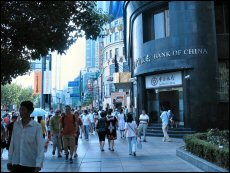 Asia, led by the Chinese mainland, is
leading the global economic recovery Asia, led by the Chinese mainland, is
leading the global economic recovery
Whether or not you subscribe to the notion that this will be “the Asian century”
– that China, India and the rest of developing Asia will dominate the 21st
century economically, as Great Britain did the 19th and the United States did
the 20th – there seems to be almost universal agreement that Asia’s star is on
the rise.
So what role will the region play in the new world economic order? And what do
Asian businesses and governments need to do to maintain their upward momentum?
Certainly Asia has made great progress since the dark days of the 1997-98
financial crisis, which forced banks and regulators to implement reforms to
improve the health of the region’s banking sector. And strong economic growth is
returning to the region in the wake of the global economic slowdown.
Taiwan appears to be coming out of recession, while the recovery in South Korea
has picked up pace. The Chinese mainland economy grew 8.9 per cent in the third
quarter of this year, and India’s expanded 7.9 per cent in the same period. The
Asian Development Bank recently increased its growth forecast for regional
developing economies as a whole to 4.5 per cent in 2009 and 6.6 per cent in
2010.
Dynamic Region
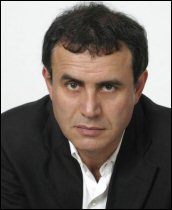 New York-based economist Professor
Nouriel Roubini is bullish on Asia New York-based economist Professor
Nouriel Roubini is bullish on Asia
Nouriel Roubini, Professor of Economics and International Business at New York
University’s Stern School of Business, foresees an anaemic global economic
recovery, but is more optimistic about Asia. “The Asia-Pacific region is one of
the most dynamic regions of global economic growth,” he says. “While I’m
concerned about advanced economies, I have a more bullish view of China and for
the emerging markets, especially in Asia. And there’s a lot of attention on Asia
because, in the next few years, as long as reforms continue, China and Asia’s
growth is going to be one of the most significant components of global economic
growth . . . The future belongs to Asia in many ways.”
Lee Jong-Wha, the Asian Development Bank’s Chief Economist and Head of its
Office of Regional and Economic Integration, agrees that “Asia is leading the
recovery from the global slowdown.” But, he cautions: “The crisis clearly showed
the risks attendant to excessive and unbalanced openness. Globalisation must be
matched with well-entrenched institutions and regulatory systems.”
Stephen Roach, Chairman of Morgan Stanley Asia, is upbeat about the long-term
growth of Asian consumer markets. “But today’s Asia is still an export machine,”
he says. “The internal private consumption share for developing Asia stands at a
record low right now of about 45 per cent. The export share has moved up 10
percentage points alone since the financial crisis of the late ’90s. At that
margin, this is a region that’s far more dependent on external than internal
demand.”
Without external demand, exports can’t grow enough to absorb surplus labour and
maintain stability, so Asian countries have to encourage greater internal
consumption. In Malaysia, Thailand and Vietnam, exports represent more than half
of the national GDP. The good news for these countries, at least in the short
term, is that the strong mainland economy is offsetting weaker external demand
in the west.
Intra-Asian Trade
James Adams, The World Bank’s Vice President of East Asia and Pacific Region,
notes that the economic rebound in East Asia and the Pacific “has been
surprisingly swift, but the challenge is to turn that rebound to longer-team
recovery.” That means developing Asia needs to resist protectionism and become
more economically integrated with the rest of the region and the world.
The Association of Southeast Asian Nations (ASEAN)-China Free Trade Area,
starting next year, will be a step in that direction.
“One can only be optimistic that China has come in on that,” says Sir David
Brewer, Chairman of the China-Britain Business Council. “With China being part
of a free-trade area, and with investments from Hong Kong and Singapore in
China, and China now investing outwards and getting more involved in companies
in Asia, it could have more effect than ASEAN without China.”
For small and medium-sized enterprises (SMEs), growing intra-Asian trade and
emerging consumer-driven markets in populous nations such as Indonesia, Vietnam,
Thailand and the Philippines translate into business opportunities for SMEs –
along with those presented by the burgeoning mainland market, of course.
Hong Kong’s Role
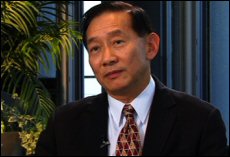 HSBC Executive Director Peter Wong: “Hong
Kong has benefited because of the growth of China” HSBC Executive Director Peter Wong: “Hong
Kong has benefited because of the growth of China”
HSBC Executive Director Peter Wong: “Hong Kong has benefited because of the
growth of China”
In the financial arena, as well, Asia is taking on a greater role. “The world
economy is changing – more and more with Asia as its centre of gravity,” says
Michael Smith, Chief Executive Officer of the Australia and New Zealand Banking
Group Ltd. “This is creating major opportunities for Asia to continue expanding
the influence of its major financial centres like Hong Kong.”
HSBC Executive Director Peter Wong says: “According to the City of London’s
Global Financial Index, Hong Kong’s position has come up quite a bit, edging out
Singapore. The index has also indicated that Hong Kong and Singapore are quite
important financial centres. In the past, they were a distant third and fourth
to New York and London, but now it’s getting very close. And it’s also indicated
that Hong Kong is going to be one of the more important centres.
“Hong Kong has benefited because of the growth of China,” notes Mr Wong. “There
are a lot more IPOs from China coming to Hong Kong, so you’ll see a lot more
bankers from the UK, the US and Europe coming to Hong Kong to capitalise on
these opportunities.”
Sovereign Wealth Funds
Also flexing their muscles are Asian sovereign wealth funds, such as the China
Investment Corporation (CIC), buying stakes in Western companies – not taking
them over so as to create a political backlash, but acquiring smaller stakes.
“We’re quietly seeing now a lot of investments taking place into the United
Kingdom from the sovereign wealth funds, from CIC [and] from SAFE, the State
Administration of Foreign Exchange,” says Sir David. “It may not be as
headline-grabbing as takeovers, but, for example, CIC came in with substantial
support when Canary Wharf needed rescuing by the Qataris. I think that’s rather
the pattern now. They’re coming in with other reliable international partners
and spreading their net quietly by taking substantial percentages in
organisations, but not totally taking them over. I think that’s a healthy sign.”
James Adams, Sir David Brewer, Lee Jong-Wha, Stephen Roach, Nouriel Roubini and
Michael Smith will be featured speakers at the Asian Financial Forum (AFF),
20-21 January 2010. Peter Wong is Chairman of the AFF Steering Committee.
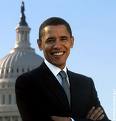 October 9 2009
October 9 2009
A call to action
Johnson --
This morning, Michelle and I awoke to some surprising and humbling news. At 6
a.m., we received word that I'd been awarded the Nobel Peace Prize for 2009.
To be honest, I do not feel that I deserve to be in the company of so many of
the transformative figures who've been honored by this prize -- men and women
who've inspired me and inspired the entire world through their courageous
pursuit of peace.
But I also know that throughout history the Nobel Peace Prize has not just been
used to honor specific achievement; it's also been used as a means to give
momentum to a set of causes.
That is why I've said that I will accept this award as a call to action, a call
for all nations and all peoples to confront the common challenges of the 21st
century. These challenges won't all be met during my presidency, or even my
lifetime. But I know these challenges can be met so long as it's recognized that
they will not be met by one person or one nation alone.
This award -- and the call to action that comes with it -- does not belong
simply to me or my administration; it belongs to all people around the world who
have fought for justice and for peace. And most of all, it belongs to you, the
men and women of America, who have dared to hope and have worked so hard to make
our world a little better.
So today we humbly recommit to the important work that we've begun together. I'm
grateful that you've stood with me thus far, and I'm honored to continue our
vital work in the years to come.
Thank you,
President Barack Obama
July 25 2009
 繼續強化拓展香港加州經貿合作
-
梁永恩履新在即先晤傳媒
繼續強化拓展香港加州經貿合作
-
梁永恩履新在即先晤傳媒
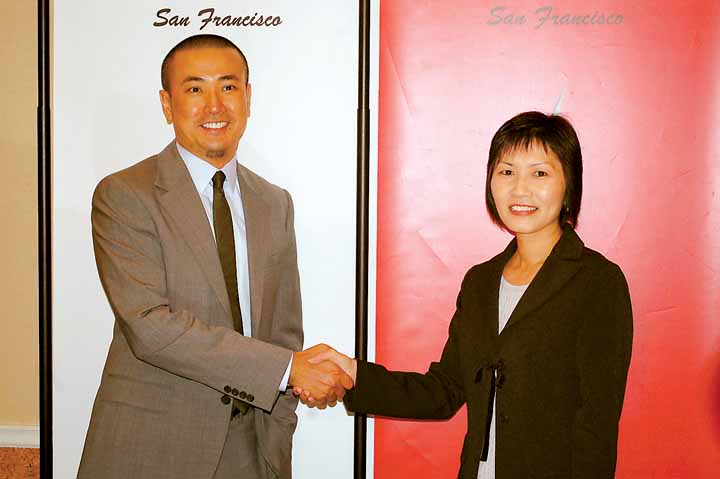 候任香港駐三藩市經濟貿易辦事處處長梁永恩(左)首次會見傳媒,與將離任現任處長的張美珠合照。記者朱瑞良攝
候任香港駐三藩市經濟貿易辦事處處長梁永恩(左)首次會見傳媒,與將離任現任處長的張美珠合照。記者朱瑞良攝
候任香港駐三藩市經濟貿易辦事處處長梁永恩昨日首次會見傳媒,並強調上任後將繼續強化香港與本地各界溝通,而該處早前在那柏酒鄉的推廣亦成效顯著,兩地貿易增加。
六產業與加州息息相關
梁永恩上任後,將代表香港政府在美國西岸19個州推廣香港的商機。他說,香港的六項開拓產業與加州息息相關,例如在加州發展蓬勃的環保產業,及以電影知名的文化創意。曾出任大學教育資助委員會秘書處副秘書長的梁永恩並表示,加州擁有受國際歡迎的大學教育,香港亦有數間學院擠身世界排名,兩者有互補的空間,因此他希望在未來日子加強推廣多方聯繫。
經貿處曾於本年4月,安排香港財政司司長曾俊華參觀那柏酒鄉,推廣香港從40%葡萄酒稅減至完全豁免。
現任香港駐三藩市經貿處處長張美珠指出,推廣成效顯著,各地入口到香港的葡萄酒數目倍增,包括佔美國市場9成的那柏酒鄉。不但收到本地酒商的查詢,到香港參加酒展的美國酒商亦有所增加。因為香港逐漸成為紅酒收藏中樞,業界更指香港將會很快取代倫敦成為全球第二大的紅酒拍賣城市。
梁永恩說,上任後將繼續強化香港與美國本地團體、政界人士及學術界人士溝通,令他們多認識香港來港發展或旅遊。
張美珠將短暫休假再出發
在1993年加入香港政府的梁永恩曾於多個崗位工作。他指出,因一直與各層面從社區市民至專業人士接觸,這有助他上任經貿處處長後在聯絡及溝通方面的工作。過去曾到訪三藩市兩次的梁永恩表示,與三藩市有緣份,喜歡她的多元化、有魄力及溫和天氣。
即將離任的張美珠則表示,非常幸運可以在三藩市工作,4年來多采多姿收穫豐富,亦有不少大型機會宣傳香港,包括經貿處分處20周年慶祝典禮等。她於下周六(1日)晚回港後將短暫休假,暫時未知道新工作崗位安排。
張美珠最後說,過去數年在工作認識不少朋友,希望回到香港繼續保持友誼,而候任處長梁永恩年輕有為及有衝勁,相信繼續當美國本地與香港的橋樑。
May 14 2009
NEW FOREIGN TRADE REGULATIONS TIGHTEN
ENFORCEMENT, INCREASE PENALTIES
Census Rule Makes Significant Revisions to Automated Export System The Census
Bureau published in the June 2 Federal Register its long-awaited final rule
relating to the new Foreign Trade Regulations.
This rule represents a substantial overhaul of Census' export regulations and
includes provisions that mandate the use of the Automated Export System,
significantly increase penalties and allow for greater enforcement by the
departments of Commerce and Homeland Security.
While the effective date of the FTR is July 2, the rule will not be formally
implemented until Sept. 30 in order to give the export community time to bring
their processes and activities in line with the new FTR requirements.
The final rule was issued after Census and the DHS resolved a three-year dispute
over the sharing of confidential export data with foreign governments and the
Option 4 program, which allows export data to be filed up to 10 days after
vessel departure. Census had strongly opposed the DHS's push to share
confidential export information with foreign governments for antiterrorism
purposes, while the DHS sought to put an end to Option 4 because it believed
this process creates an unacceptable loophole for illegal exports. In the end,
the two agencies agreed to disagree on the confidentiality issue, and the final
rule therefore retains the proposed rule's prohibition on sharing the data
contained in AES submissions with foreign governments.
With respect to Option 4, the existing moratorium on new users will continue and
only currently approved filers may use this procedure. Among the other key
provisions of the FTR are the following. replaces the term SED (Shipper's Export
Declaration) in the FTR with Electronic Export Information requires all export
data to be filed electronically through the AES-paper SEDs will no longer be
accepted describes the process for AES filing by U.S. principal parties in
interest or their agents describes the data elements required for AES filing and
when EEI must be transmitted via the AES specifies that only the internal
transaction number will serve as proof of AES filing-the external transaction
number will no longer be acceptable as proof of filing significantly increases
civil penalties to $1,000 to $10,000 per violation and criminal penalties to a
maximum of $10,000 per violation and/or 10 years' imprisonment creates new
provisions for the filing of voluntary self-disclosures-Census will share the
information contained in such disclosures with other exporting agencies, and the
weight afforded to such disclosures as a mitigating factor in penalty cases is
entirely within Census' discretion designates the Bureau of Industry and
Security's Office of Export Enforcement and the DHS's U.S. Customs and Border
Protection and U.S. Immigration and Customs Enforcement as the offices
responsible for enforcement of the FTR Exporters Advised to Review Compliance
Status Ahead of FTR Implementation As announced in late 2006, Census has begun
auditing exporters who are not meeting their AES obligations; i.e., those who
are not complying with their Option 4 filing requirements, have a high number of
late AES filings or unresolved fatal errors, or fail to achieve a 95 percent
compliance rate in the AES compliance reports issued monthly to AES filers.
Penalties for violations have not generally been enforced by Census, but that
will soon change with the implementation of the FTR. Further, because of the
greater sharing of information among the U.S. government agencies responsible
for the enforcement of export laws and regulations, exporters may find
themselves in a position of having to file multiple, simultaneous voluntary
disclosures with various agencies.
In light of the increased FTR enforcement initiatives of Census, CBP, OEE and
ICE, the increased penalties under the new FTR and the sharing of information
among export agencies, prudent exporters will move quickly to evaluate and
improve their export compliance status. This is particularly vital for those
exporters who rely on freight forwarders or other agents to submit their AES
records, since AES compliance reports and fatal error reports are issued to the
AES record filers and not necessarily to the exporters who ultimately have
liability for the accuracy of those records. Reliance on freight forwarders is
not a valid excuse for noncompliance with the FTR, as the exporter remains
principally liable for its agent's mistakes.
February 18 2009

Dear Colleague & HKCHcc Members:
On February 17, 2009, President Obama signed the American Recovery and
Reinvestment Act of 2009. This new legislation provides a one-time payment of
$250 to Social Security and Supplemental Security Income beneficiaries.
Over 60 million beneficiaries will receive a one-time payment. We expect all
payments to be delivered by late May 2009. To assist us in issuing these
payments as quickly as possible, beneficiaries should not contact Social
Security unless they do not receive their payment by June 4th. As we move to
implement the new legislation, we will continue to provide updates to keep you
informed of our efforts in this area.
You can learn more about these one-time payments at
www.socialsecurity.gov.
We ask that you share information about these efforts with members, colleagues
and any parties who would find them of interest.
I look forward to the opportunity to discuss this important legislation with
you.
Sincerely,
Cheri Arnott
Associate Commissioner
for External Affairs
February 13 2009
 http://www.honoluluadvertiser.com/apps/pbcs.dll/article?AID=/20090213/OPINION03/902130331&template=printart
http://www.honoluluadvertiser.com/apps/pbcs.dll/article?AID=/20090213/OPINION03/902130331&template=printart
Collaboration key to improving
economy - co-sponsored
by Hong Kong.China.Hawaii Chamber of Commerce (HKCHcc)
Government, business and
labor must form a necessary alliance
By Jim Tollefson and Melissa Pavlicek
As we enter 2009, the state of
the national and local economy is the primary concern for us all. Under the
threat of living in the worst economic times in recent history, it is imperative
that we re-examine how we do things in growing and strengthening our economy.
All businesses and their
employees are being impacted in one way or another. Not a day goes by when we do
not hear about a local establishment closing its door, employees losing jobs and
businesses cutting back on expenses. This uncertainty erodes our confidence,
both individually and collectively, which in turn impacts our need for social
services and our livelihood.
Perhaps the good news is that
for the first time in a long time, we can all focus on a common goal of
improving our economy. This will require an unusual but necessary alliance of
government, business and labor to collectively sacrifice, commit and develop a
game plan for us that will stimulate the economy. Although these economic
challenges will not go away anytime soon, we believe this is an opportunity for
the various stakeholders to collaborate and have the discipline to work toward a
common purpose of restoring confidence in an economy that will promote job
retention and creation in the most beneficial way.
In difficult times, it is easy
to be focused only on the problems and potential solutions that impact you or
your business. That's understandable when the kinds of problems we face are ones
of economic survival.
But it is also in these
difficult times that we must look beyond our individual wants and focus on the
"greater good." With limited resources, and with time running out on many
businesses, we need to focus on the economy. Retaining and creating jobs must be
our priority. Without work, without jobs, we will find ourselves in a downward
spiral that negatively impacts all aspects of our society.
And so while there are many
problems and issues that are critically important to each of us, we believe now
is the time to set aside those differences and focus on our immediate need of
job retention and creation. Right now, today, we need to focus on keeping our
economy going, our people working, our families in their homes and schools.
In Hawai'i, our strength is our
commitment to each other, to our 'ohana. We have united in the past when faced
with a common enemy, and today that common enemy is a recession. Let us unite
again as a community and remain focused and steadfast in our search for
solutions to the economic times. It is this expression of faith in our ability
to work together that will enable us to overcome the trepidation and fear that
we are experiencing.
The cornerstone of our state
has always been its people and the willingness and commitment to step up in
times of need. During the 2009 legislative session, we must approach legislative
process with the singular goal of finding solutions to the economic downturn. We
must focus on employment, on retaining and creating jobs, and collectively on
achieving positive results for Hawai'i and our citizens.
Additional Facts
December 18, 2008
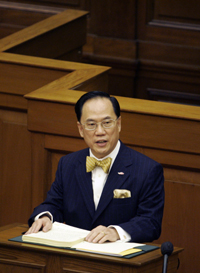 Creative openings - Hong Kong has played a vital role in the mainland's reform
and opening up, and will continue to do so by Donald Tsang
Creative openings - Hong Kong has played a vital role in the mainland's reform
and opening up, and will continue to do so by Donald Tsang
This year, our country marks the 30th anniversary of the reform and opening-up
process that has had a profound impact not just on the mainland, but also on the
rest of the world and Hong Kong. On December 18, 1978, the third plenary session
of the 11th Communist Party Central Committee was convened in Beijing, which
resolved to shift the focus of work to modernization. Put simply, the long-held
policy based on the principle of class struggle would give way to one that was
geared towards economic construction.
This was a profound and historic decision. The reform and opening-up policy
provided the Chinese people with an opportunity to innovate and give their best.
Over the past 30 years, the mainland has enjoyed rapid economic growth, with
average annual gross domestic product rises of 9.88 per cent. Hundreds of
millions of people have been lifted out of poverty.
The reform and opening up has also brought China back into the international
community and enabled it to contribute to global development.
In 1978, China's trade volume was less than 1 per cent of the world total.
Today, it accounts for about 8 per cent. At the same time, China has been
committed to maintaining peace and stability in the region and globally. In
future, China will continue to fulfill its international obligations as a world
power promoting the welfare of mankind and working with other countries to build
a harmonious world.
The mainland's reform and opening up, and the rapid development of Hong Kong,
are closely intertwined. While the tremendous changes in our country have had an
enormous impact on Hong Kong, the city has also been a participant in the
process and has made important contributions to our nation's development.
Hongkongers were the pioneers of investing in the mainland economy. We were the
first to establish joint ventures across the border. Today, Hong Kong's realized
direct investments on the mainland have reached almost US$320 billion - about 40
per cent of the mainland's total external direct investment. In Guangdong alone,
some US$112 billion has been invested - almost two-thirds of all direct external
investment in the province.
Capital investment aside, Hong Kong has also exported management experience,
international business networks and market economy concepts to the mainland.
The contributions by Hong Kong entrepreneurs go far beyond their investments on
the mainland. Many have devoted their knowledge, expertise, time and personal
wealth to promote the development of education and welfare there.
The city's role will not diminish as our country continues to develop. Rather,
it will become more crucial.
First, Hong Kong will continue to play a vital role as the mainland continues to
enhance its economic structure and merge with the global economy. The city can
help the mainland develop modern service industries including trading,
logistics, hosting conventions and exhibitions, information technology,
accounting, legal and engineering services.
We can also help mainland enterprises to fully use overseas markets to integrate
into the world economy.
Second, almost every major economy has a world-class financial centre. Hong Kong
is not only a fund-raising centre for mainland enterprises; it is also the only
international financial centre in China.
Third, global competition today is among regional economies. By complementing
each other's strengths, Hong Kong and Guangdong have set a successful example of
regional co-operation over the past three decades. But there is still plenty
more room for co-operation in the future.
We are working with Guangdong on a wide range of fronts to transform the Pearl
River Delta region into a world-class economic zone, serving as our country's
"flagship" as it competes globally.
Fourth, China's development requires good education and a vast pool of talent.
Hong Kong has an excellent track record in attracting talent from around the
world and providing a high standard of tertiary education.
Finally, given the strength of our legal system, market mechanisms,
administrative efficiency, corporate governance, entrepreneurship and city
administration, Hong Kong can help the mainland to refine its market economic
system, formulate effective public policies and strengthen its city
administration.
Although the world is in the grip of financial turmoil and facing a recession,
co-operation between Hong Kong and the mainland will not falter. The central
government has pledged to back Hong Kong and take effective measures to support
us. These measures will not only help the city face the present challenges, but
also aid the mainland's continued opening up and reform.
In addition, the 4 trillion yuan (HK$4.5 trillion) stimulus plan recently
unveiled by Beijing will not only help sustain the mainland's economic growth;
it will also provide a plethora of business opportunities for Hong Kong
enterprises.
Hong Kong and Guangdong will continue to deepen co-operation in the financial
and services sectors, as well as on cross-boundary infrastructure, to maximize
our regional advantages as we tackle the economic crisis together.
The past 30 years of reform and opening up have been of singular importance to
China and the world. It has changed the course of our nation's history and
affected the economic development of the whole world.
Hong Kong should take great pride in its active, unique role in this process. As
the reform and opening up continues, we will grasp every opportunity to deepen
our integration with the mainland, and make the best use of our competitive
strengths to contribute to the development of our country.
At the same time, Hong Kong will enter a new phase of development that holds
even greater promise for our city and our people.
Donald Tsang Yam-kuen is the chief executive of Hong Kong
December 9, 2008
The corruption factor by
JOSEPH CHENG
Chen Shui-bian is in custody; the "son of Taiwan" has become the "shame of
Taiwan". His case has led Hong Kong people to question the democratic system.
His allegedly corrupt behavior is, of course, a matter of personal conduct. But
there are institutional factors behind such behavior. The hysterical accusations
from his daughter, Chen Hsin-yu, that all Democratic Progressive Party leaders
had received money from her father naturally reflect problems in the electoral
system.
Taiwan's electoral campaigns are extremely costly; this is a political fact
recognized by the people. Campaign funds of political parties and candidates
come mainly from business groups; this is the root cause of collusion between
businessmen and politicians. Business groups making major donations to electoral
campaigns naturally expect returns. It is an open secret in Taiwan that
public-sector infrastructure projects involve substantial kickbacks.
When electoral campaign expenditure exceeds the legal limits, there will be all
kinds of shady deals. Since they go unreported, there is no accountability and
party leaders responsible for fund-raising could be easily corrupted.
The vast confidential state funds at the Taiwanese president's personal disposal
are a legacy of earlier authoritarian regimes. They are also related to Taiwan's
difficult diplomatic and security situation. The authorities spend substantial
funds on intelligence gathering (especially against the mainland), overseas
united-front activities, bribery to secure diplomatic relations, and the like.
Such expenditure cannot be in the open; it is therefore controlled by the
president alone. This gives rise to opportunities for corruption.
In many democracies, secret operations of intelligence agencies are monitored by
oversight bodes such as America's bipartisan Senate Select Committee on
Intelligence. The monitoring process remains classified, but nonetheless it
serves as an effective check-and-balance mechanism.
The US model may offer a useful point of reference for Taiwan. The key question
is whether its political parties in the legislature have sufficient mutual trust
and self-discipline to fairly monitor various types of covert activities on a
confidential basis to create effective checks and balances. This is certainly an
important test for a mature democratic system.
There is probably already adequate public support for the effective control of
electoral campaign expenditure according to the law. The same conditions exist
as in Hong Kong in the 1970s, when the Independent Commission Against Corruption
was established.
If Taiwanese President Ma Ying-jeou is determined to combat corruption, setting
up a high-level committee or working group headed by the premier is still
inadequate. What is needed is bipartisan co-operation and determination to
mobilize public opinion to reform the Central Election Commission and the
judiciary.
On this basis, special units may then be set up within the commission and the
police to monitor election campaign expenditure, together with a broad publicity
campaign. This should ideally be supported by advisory committees consisting of
respected anti-corruption community leaders.
The starting point may well be the local elections next year. Candidates from
all political parties should be treated equally. The commission, police and
judiciary will then gradually establish a strong image and style to run
elections cleanly. Further institutional reforms are also needed. Rules on
electoral expenditure must be clearly stipulated and loopholes closed.
Mr Ma is perceived to be very clean, politically. But his performance has been
lackluster in recent months. Establishing a clean electoral system will
certainly help him restore his appeal to the electorate.
Taiwan's democracy has been a major contribution to the Chinese nation. Clean
elections and corruption-free politics will secure even greater respect from the
international community.
Joseph Cheng Yu-shek is a professor of political science at
City University of Hong Kong
November 20, 2008
United States is guarding China's nuclear
'secrets' by Alex Lo SCMP
It is frequently asserted without proof or evidence by top Pentagon officials
and senior US politicians that China maintains extreme secrecy with its military
development. The media then duly reports their complaints as if they were facts.
The latest criticism comes from an interview with Rear Admiral Richard Wren,
commander of the Japan-based USS George Washington carrier strike group. If you
repeat the same thing over and over, and the media duly reports it, it must be
true.
Again, Admiral Wren claimed China's military is opaque with its intentions and
capabilities. "We all encourage China to become a responsible global
participant. But the way they are growing their military is confusing," he said.
"Why do you need a missile that can go thousands and thousands of kilometers if
you are a defensive force? The total number of submarines they have, and their
capabilities, sure doesn't point to a defensive or even an `active defence
force', as they like to call it."
But, it remains unclear whether the Chinese military is any more secretive than,
say, the US Defense Department. It may be safe to assume that a nation's nuclear
arsenals and weapons development programmes are among its best-kept military
secrets. But, on this, China has been remarkably open - to the US government.
A reader brought to my attention the September edition of the journal Physics
Today. It contained an account of the history of China's nuclear weapons program
by Tom Reed, a US nuclear weapons engineer and former secretary of the air
force. He knows this because, in 1990, his associate, Danny Stillman, was given
two full tours of China's key thermonuclear weapons research, development and
testing facilities across the country. Dr Stillman made seven more visits
between 1991 and 1999.
Dr Stillman was, at the time, director of the technical intelligence division at
Los Alamos National Laboratory, where the world's first atom bombs were
developed and subsequently dropped on Japan. The Chinese knew exactly who Dr
Stillman was and what he was after. He asked for the tours and he was promptly
granted them.
He was taken to research centers at Fudan University in Shanghai, a prime
component of the Chinese nuclear weapons complex; Science City, the intellectual
capital of the Chinese nuclear empire on the outskirts of Mianyang , in Sichuan
province; and several hard-to-reach test sites. He was shown weapons designs,
testing equipment and records of China's nuclear tests up to that time.
Why did the Chinese do it? "For one thing," Mr Reed wrote in the article, "the
Chinese probably sought deterrence. An American awareness of Chinese nuclear
capabilities should lead to a more cautious American military posture around
Taiwan and in the Pacific Ocean."
Beijing has defined its national interests as nation-building; its domestic
agenda requires a peaceful international environment. Its military is defensive
by policy and design. By contrast, the US defines its national interests as
global, which at times require military action to defend them. It is militarily
the most offensive of all nations.
But why did Mr Reed publish the article now? I suspect it was because his
friend, Dr Stillman, was having trouble publishing his book, Inside China's
Nuclear Weapons Program, based on his experiences in China.
The US government banned it in 2000 because it contained classified material. He
has unsuccessfully launched several lawsuits over the years. Last year, Dr
Stillman lost another suit against the CIA, which allegedly kept delaying its
review of the book, thereby preventing its publication.
So get this: the CIA and the Pentagon have successfully prevented the public
from learning about Chinese nuclear weapons development from one of its foremost
US experts. The US is guarding military secrets for the Chinese who have been
perfectly happy to divulge them.
November 14, 2008
Immigrant-Owned Businesses Provide Important
Contribution to U.S. Economy - Immigrants are 30 percent more likely to start
businesses than non-immigrants
Washington, D.C. –The Minority Business Development Agency (MBDA) and the Small
Business Administration (SBA) join together to share the report, “Estimating the
Contribution of Immigrant Business Owners to the U.S. Economy” by Robert W.
Fairlie, PhD, professor of economics at the University of California Santa Cruz
at an event held at the Department of Commerce from 10:00 am through 12:00 pm.
The study, funded by SBA’s Office of Advocacy, finds that immigrants are nearly
30 percent more likely to start a business than non-immigrants, representing
16.7 percent of all new business owners in the United States.
There are approximately 1.5 million immigrant business owners in the United
States, representing 12.5 percent of all business owners. Immigrant business
ownership is geographically concentrated in a few states, such as California,
New York, New Jersey, Florida and Hawaii. Nearly 30 percent of all business
owners in California are immigrants. One quarter of all business owners in New
York are foreign-born and one-fifth of all business owners are foreign-born in
New Jersey, Florida and Hawaii.
“U.S. Census figures predict that by 2050, the United States will be a
majority-minority country. This growth will be fueled by immigrants-specifically
people of color,” says Ronald N. Langston, National Director, MBDA. “Some fear
this change and others complain about the burden and cost of immigration,” he
adds. “But, this report illustrates the positive rewards of embracing inclusion,
diversity and minority entrepreneurship.”
“This report is the first time that immigrant business ownership rates and
immigrant-owned businesses contributions to the economy have been studied in
detail,” said Dr. Chad Moutray, Chief Economist for the Office of Advocacy.
“These findings can make a significant contribution to public policy debates,”
he added.
Although Mexican immigrants make up the largest percentage of immigrant business
owners, the top five countries of origin also include Korea, India, China and
Vietnam. Immigrants also own businesses that range from low-skill businesses
such as retail and wholesale trade to high-skill jobs like technology and
engineering. In fact, approximately 25 percent of engineering and technology
jobs started in the past decade were founded by immigrants. These specific firms
had more than $52 billion in sales and hired 450,000 workers, according to the
report.
About the Minority Business Development Agency (MBDA)
MBDA, http://www.mbda.gov, an agency within
the U.S. Department of Commerce, serves minority entrepreneurs across America
who are building and growing enterprises. In doing so, minority-owned firms are
better equipped to create jobs, impact local economies and compete successfully
in domestic and global marketplaces. With a nationwide network of more than 40
business centers and strategic partners, MBDA assists minority entrepreneurs and
business owners with consulting services, contract and financing opportunities,
bonding and certification services, building business-to-business alliances and
executive training.
About SBA’s Office of Advocacy
The Office of Advocacy of the U.S. Small Business Administration (SBA) is an
independent voice for small business within the federal government. The
presidentially appointed Chief Counsel for Advocacy advances the views,
concerns, and interests of small business before Congress, the White House,
federal agencies, federal courts, and state policy makers. For more information,
visit www.sba.gov/advo, or call (202)
205-6533.
February 25, 2008
Hong Kong Manufacturers
Enjoy Priority in PRD Power Supply Increase
Guangdong plans to increase its installed capacity by 8.35 million kw this year
to ease the problem of power shortage, which has forced many factories to "open
for three days and close for four days" a week. Hong Kong manufacturers in the
PRD will enjoy priority in electricity distribution.
Guangdong's power shortage has been a major headache for enterprises, including
Hong Kong manufacturers, who find the practice of "opening for three days and
closing for four days" a week unacceptable because it affects their normal
production process. In light of this, measures have been taken in recent years
to give Hong Kong manufacturers priority in power supply. Under these measures,
Hong Kong companies enjoy shorter power cutoff hours and more prompt service. In
the event that their power supply is interrupted, they can notify the local
foreign trade and economic cooperation department and their problem would be
resolved promptly.
Demand for electricity in Guangdong will continue to grow rapidly and steadily
this year. Total power consumption is expected to reach 333.9 billion kwh, an
increase of 12% year-on-year. Maximum load demand will reach 56 million kw, up
13% year-on-year. Of this, 46.5 million kw are subject to overall planning, up
24% year-on-year. With the increase in installed capacity by 8.35 million kw
this year, the problem of power shortage in the province could be eased.
Guangdong will see power generation projects going into operation in Guangzhou,
Shenzhen, Zhuhai, Huizhou, Shanwei and other places this year. Three of these
projects have 2 x 600,000 kw generating units. Each of them will increase
installed capacity by 1.2 million kw and flue gas desulfurization capacity by
1.2 million kw. The three projects are: the installation of generating units
Nos. 1 and 2 in the first phase of the Shanwei Power Plant at a cost of Rmb580
million; the installation of generating units Nos. 3 and 4 in the first phase of
the Zhuhai Power Plant at a cost of Rmb500 million; and the installation of
generating units Nos. 1 and 2 in the first phase of the Huilai Power Plant at a
cost of Rmb600 million. Following the completion of these projects, except for
the January-April dry season when a small power shortage is to be expected,
power supply will be basically well-balanced for the rest of the year under
normal circumstances. Overall, the year will see an easing of power shortage.
Proven Track Record Needed When Applying for Foreign-Invested
Design Enterprise Qualifications
On 1 February, the Ministry of Construction and Ministry of Commerce jointly
issued the Implementing Rules for Regulations on the Administration of
Foreign-Invested Construction Engineering Design Enterprises. The new rules set
strict standards for the application and verification of qualifications of
foreign-invested construction engineering design enterprises.
Under the new rules, when applying for verification of qualifications,
foreign-invested construction engineering design enterprises must not only meet
the necessary professional requirements, but must also provide documents
supporting their track record as foreign service suppliers outside China as well
as qualification certificates of individual registered architects and engineers.
As required by the Ministry of Construction, foreign service suppliers should be
enterprises engaged in construction engineering design or natural persons who
have obtained relevant professional qualifications in their own countries or
regions. While foreign enterprises must have proven track record as construction
engineering design enterprises in their own countries or regions, natural
persons must be registered architects or engineers engaged in construction
engineering design in their own countries or regions.
When foreign-invested construction engineering design enterprises employing
foreign registered architects or engineers as principal professional personnel
apply for qualifications as a construction engineering design enterprise, the
professional titles of these personnel will not be verified. Verification will
only be conducted on their academic qualifications, number of years of service
in engineering design, as well as their registered qualifications, track record
and goodwill in engineering design abroad.
As for 2009, the
outlook for Hong Kong's clothing exports will remain lacklustre, given the
tentative prospects of a global economic revival. In addition, the impending
elimination of US safeguard quotas on Chinese textiles and apparel is expected
to lead to calls for increased protection for US and regional manufacturers.
While US textile manufacturers are expected to seriously consider the
possibility of filing anti-dumping and/or countervailing duty actions against
Chinese products, the anti-dumping monitoring system in place on imports from
Vietnam could possibly be extended to cover China as well. These will certainly
pose challenges to Hong Kong's clothing exports, especially if the US economy
cannot regain growth momentum by the end of 2008 or on entering 2009.
Toys
Hong Kong's toy
exports expanded robustly by 20% in the first quarter of 2008 after the
tremendous growth of 23% in 2007, with non-traditional toys, such as video games
and electronic toys, being the main driver of the growth. In contrast,
traditional toys, such as dolls, construction sets and wheeled toys, have
experienced a period of stagnation. Among mature markets, sales to the EU, which
has benefited from a strong euro, have outperformed the US and Japan. Emerging
markets, such as the Chinese mainland and ASEAN, were also in good shape.
For the rest of
2008 and 2009, Hong Kong's toy exports should continue to expand, albeit at a
slower pace. Growth will still be underpinned by non-traditional toys, given the
sustained popularity of video games and electronic toys. However, the craze for
the latest generation of video game consoles like Wii and PS3 should start to
fade later this year, as they have been on the shelf for more than a year
already. The outlook for traditional toys is less promising amid keen
competition and a shift in consumer preference towards more sophisticated
products.
With the global
economy expected to enter a period of adjustment triggered by the US subprime
loan crisis, demand from most developed economies should slow. But emerging
markets, particularly the Chinese mainland, will be less affected because of a
strong appetite for quality toys on the back of higher purchasing power.
Meanwhile, the coming Beijing Summer Olympic Games 2008, which is expected to
cheer up a buying spree for souvenirs, festive items and related goods, will
provide added opportunities for Hong Kong exporters.
Increasing product
safety awareness in overseas markets, on the other hand, will remain a major
challenge for Hong Kong exporters. As a result of the high-profile toy recalls
last year, Hong Kong's major toy exporting markets, especially the US and the
EU, have tightened up the enforcement of their existing product safety
regulations. While tougher regulatory regimes are in the pipeline, a number of
retailers, notably Wal-Mart and Toys 'R' Us, have already responded to consumer
demand for safer products by adopting more stringent sourcing requirements. In
any event, Hong Kong companies, which excel in production experience and quality
compliance, should be able to adjust to tighter testing and inspection imposed
by overseas buyers, as well as increasingly stringent safety standards.
Watches and
Clocks
On top of a 6%
increase in 2007, Hong Kong's watches and clocks exports grew by 16% during
January-March 2008. Sales to most major markets, including not only the EU, but
also the US and Japan, managed to record increases, whereas those to the Chinese
mainland exhibited even stronger expansion. In the medium term, however, exports
are expected to become slower against the background of a slackening global
demand for timepieces.
Not surprisingly,
sales to the US will be affected by the sluggish consumer market. Given a
deteriorating economy and subdued sentiment, demand for timepieces is expected
to become uninspiring, especially for opening-price-point luxury watches,
although the top-end segment will likely remain promising. Yet in view of
growing consumer cautiousness, the appetite for competitively priced items will
remain stable. Hong Kong's exports of low-priced timepieces will continue to be
hampered by intensified competition from local Chinese companies, however.
The EU, for its
part, is a fairly mature market characterized by a penchant for watches with
fashionable designs for formal as well as casual occasions. In all likelihood,
there will still be potential in the middle- to high-end segment, focusing on
quality but value-for-money timepieces. In addition, the price competitiveness
of Hong Kong's timepieces will continue to be facilitated by stronger European
currencies. Spurred by the continued strength of the European currencies, sales
to the EU would remain steady over the medium term.
As regards the
Chinese mainland, sales of timepieces, apart from the positive effect of the
imminent Beijing Summer Olympic Games 2008, will be well supported by its
growing purchasing power. Now that mainland consumers are increasingly looking
for higher quality items amid the improvement in income levels, watches bearing
Hong Kong labels should enjoy a premium in the market. Regarding Japan, sales to
the country will only remain steady, as the market is already saturated,
although the stronger Japanese yen will enhance the price competitiveness of
Hong Kong timepieces.
Jewellery
On top of a 17%
rise last year, Hong Kong's exports of fine jewellery grew by 27% in value terms
in January-March 2008. However, the surging prices of precious materials for
jewellery fabrication, such as gold, silver and diamonds, have in fact hit
jewellery sales. In volume terms, for example, after dropping by 14% in 2007,
Hong Kong's exports of jewellery items of precious metals further declined by 6%
in the first three months of 2008. Marketwise, supported by the appreciation of
the euro, sales to the EU managed to register strong growth, while those to the
US and Japan dropped on their weaker demand.
For the rest of
2008 and 2009, the overall business sentiment will be clouded by softer global
demand brought by the US slowdown. In mature markets, notably the US, even
better-off consumers are tightening their budgets. Consumers, in general, will
tend to shift away from luxury jewellery articles towards lower-priced items,
although very affluent customers tend to be less price-sensitive. Emerging
markets, such as Russia and the Chinese mainland, should outpace the developed
ones because of their higher purchasing power due to their stronger currencies
or rising disposable incomes. Yet some of these exports may be semi-finished
products for further processing.
With high global
inflation and an expansionary monetary stance in most developed economies, the
prices of precious materials, stones and diamonds will likely remain at high
levels. Therefore, usage of karat gold and other metals, especially silver, is
expected to increase. The industry is also tackling the rising precious metal
costs through exploring new markets, developing innovative technologies,
adjusting product designs and providing better services.
May 30, 2008
Airport eyes Shenzhen and Zhuhai
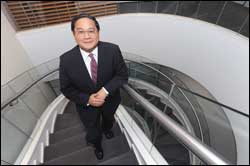 A third runway is not merely an option,
said outgoing Airport Authority chairman Victor Fung Kwok-king - more are needed
if there is full-fledged cooperation with Shenzhen Airport. He told Sing Tao
Daily, sister publication of The Standard, the authority is currently developing
a 20-year plan that includes ways to improve "the efficiency of the airport, the
runways and airport capacity." A third runway is not merely an option,
said outgoing Airport Authority chairman Victor Fung Kwok-king - more are needed
if there is full-fledged cooperation with Shenzhen Airport. He told Sing Tao
Daily, sister publication of The Standard, the authority is currently developing
a 20-year plan that includes ways to improve "the efficiency of the airport, the
runways and airport capacity."
The key to maximizing efficiency at Hong Kong International Airport, he said, is
cooperation with Shenzhen and Zhuhai airports in which Hong Kong's role is that
of a "gateway for passengers coming from Shenzhen and Zhuhai" and they will
serve as a gateway to other mainland cities in return." "If HKIA cooperates with
Shenzhen, we would be needing fifth, sixth, and seventh runways," Fung said.
Fung is not worried about such cooperation opening up a pandora's box of
airlines preferring Shenzhen Airport.
"We are concerned more about capacity. Those passengers will still be HKIA
customers," he said. Fung acknowledged the challenge posed by the increasing
likelihood that there will be direct links across the Taiwan Strait amid a thaw
in relations. The key to seeing off that challenge, Fung said, is with Hong Kong
adopting an open-skies policy.
He said direct links may have an impact in the short term, but "it should not be
a big problem ... it will eventually increase opportunities," Fung said. On
budget carriers and the recent demise of Oasis Hong Kong Airlines, he said
cooperation with Shenzhen and Zhuhai airports will create openings for budget
airlines, as the flight time between these airports is less than an hour. "In
the future, there may be more Oases," he quipped.
Fung - who steps down tomorrow - had pushed for HKIA's listing but the move has
been postponed. He said: "When an enterprise reaches a certain maturity, it
should be given a chance to become listed."
May 11, 2008
443 mainland enterprises got listed in
Hong Kong
A total of 443 mainland enterprises have got listed on the Main Board and GEM of
Hong Kong Stock Exchange by the end of April 2008, including 148 H shares, 93
red chips and 202 non-H-shares of the mainland private enterprises.
According to the latest statistics released from Hong Kong Stock Exchange, the
mainland stock shares account for 58.6% of the total market value and 74.2% of
the total market turnover of the Hong Kong stock market.
By the end of April, there were 1,244 listed companies with a total market value
of about 18 trillion Hong Kong dollars. Only one Hong Kong company got listed
during the first quarter this year. By the end of April, Hong Kong owned in
total 4,808 derivative warrants, 260 callable bull/bear contracts, 26 trust
funds, and 173 bonds.
April 11, 2008
French
wine traders cheer Hong Kong's duty-less regime
 |
| Measures enhance prospects for French
wine makers. |
When the Hong Kong government eliminated all duties
on wines and beer imports in February, winemakers and exporters across
France raised a glass of their finest vintage to celebrate.
"Next year will be a big, big market," says Yves
Lambert, owner of Domaine de Saint-Just and an agent for other
French vineyards.
Asia, especially the Chinese mainland, was already
becoming a major market, and this can only strengthen the trend, says
Lambert. Alcohol sales to the Mainland in 2007 totaled Euros247 million,
sparked by a growing middle class, and France has had a large share of the
market.
Sales of French wines to the Chinese mainland grew
145% last year, according to the Fédération des Exportateurs de Vins et
Spiritueux de France (FEVS). The trade association, which represents the
interests of 550 French wine and spirit producing and exporting companies,
says the Mainland was the 11th largest market by value for French wines and
spirits in 2007.
 |
| Mainland is a developing
market for French wines. |
Sales of French cognac and other spirits grew 162%
year-on-year by value, making the Chinese mainland the third largest market
for the products, behind the US and Singapore (which tranships to the
Mainland). Wine and liquor are France's second largest exports after
Airbus aircraft.
Rising incomes, a growing interest in Western
lifestyles and tastes, and better wine education, have driven the rise in
consumption on the Chinese mainland.
Drinking wine has a strong social status in China,
and French wines have that certain cachet. According to a recent
MasterCard survey, 80% of Chinese consumers prefer it.
 |
| Bordeaux wines selling on the Chinese
mainland. |
So, French winemakers - both small and large - are
looking to Asia for new markets. France mainly sells Bordeaux, Champagne and
Vins de Pays (a regional wine, a step up from table wine).
French vineyards interested in Hong Kong
"We think the market [to Asia] will increase," says
André Barlier, deputy director of Viniflhor, a public body based in Paris.
Viniflhor promotes wine as well as gathering industry information, which it
distributes through publications and on the Internet (www.frenchwines.com).
 |
| Body promotes wines and
information about them. |
"A lot of French companies will be interested in
Hong Kong," Barlier says. "Five years ago, the trend was through Hong Kong
to [the Chinese mainland] but in the past two or three years, wine has been
exported directly to [the Mainland]. Now this will change and Hong Kong
traders will acquire a new position."
Wine producers and exporters say that French
companies have had problems finding a suitable business partner on the
Chinese mainland. "It is difficult for the French to get a good company to
work with," Barlier says. Hong Kong partners know how to sell to the
Mainland better than the French do, he believes.
Will Chinese mainland winegrowers cover the market,
or will the country import, he asks. "They are planting a lot of grapes, but
the imports are rapidly increasing."
Exporters say that if Hong Kong does realize its
aspirations to become the wine hub of Asia, storage should pose no problems.
Exports will be mainly bottles, delivered in containers, not bulk wine. The
only storage needed is space, such as a warehouse, with temperatures
controlled. As long as the wine is not left outside, and is kept cool, it
can be stored safely.
Label development in Asia
Barlier mentions an opportunity for importers to
create their own labels. They can buy wine in bulk and create a label in
Europe, Hong Kong or on the Chinese mainland.
One concern for French dealers is that the Mainland
may not respect trademark rules, he says, producing a bottle of cheap
Chinese wine with the Eiffel Tower on a faux French label. "But the customer
can tell it isn't authentic by the price."
|
 |
| Barlier: problems with labels. |
|
 |
| Unreal quality: fake French label. |
|
Another problem is that many people on the Chinese
mainland don't know about wine, or even how to open a bottle. "There is a
lot to learn and producers should teach consumers how to buy and consume
wine," says Barlier.
Yves Lambert, who represents an association of
vineyards from Bordeaux, Languedoc and Côtes de Provence, agrees. "Wine is
part of the social life; it is good for socialising and for health," he
says. "Consumers start by buying cheaper wine; when they have more money,
they buy more expensive wines," he says. "And rich people buy expensive wine
because it is good for face. So there are two markets, for cheaper and more
expensive wines."
Wine experts say that when their incomes increase,
people prefer drinking wine rather than beer, and whenever taxes decrease,
wine consumption increases. They see a market for well-off Chinese
mainlanders interested in grand cru (the top growth of a region), but also
another market for very cheap wines.
More attractive trade environment
The new Hong Kong law will make exporting to the
territory more attractive, says Lambert, who is looking for a representative
importer in Hong Kong. "I can sell 300,000 bottles of my own wine and one or
two million other bottles," he says. "We have good wine and a good price,
and our wines are getting better and better."
 |
| Lambert: looking for a
representative in Hong Kong. |
His initial efforts on the Chinese mainland last
year were positive. "I sent a container to Shenzhen, and they have already
asked for another," he says. "The importer sold 12,000 bottles in a month."
In February, Lambert added Chinese to his French
and English web site (http://st-just.net/chine/index_chine.php).
The company also has a new project on the Chinese mainland, designing
special red and rose wines for weddings. "Young Chinese like this," he says.
The company sells a minimum per container, which is
12,000 bottles. "We sell 90% red wine," Lambert says. "White wine is only
popular along the coast, in fish and seafood restaurants."
Lambert also expresses a sentiment common among
French businessmen: it is easier to work in Hong Kong, as the law is not the
same as on the Chinese mainland. "British law is better for us," he says.
"For Europeans, it is easier to sell to Hong Kong, a major business centre,
and let Hong Kong importers sell to [the Chinese mainland]."
Hong Kong tax change reduces currency
fluctuations
A number of exporters point out that the Hong Kong
tax change will help offset the high Euro, as its recent increases against
the Chinese Yuan and the US dollar have hurt sales in two of the biggest
markets for French wines.
Geneviève Chavignon, export assistant of Les
Vins Jean-Pierre Teissèdre, says her company, which plans to sell to
Hong Kong and China, also welcomes the recent change.
So far, the demand from the Chinese mainland for
her company's wine has been for very low-priced wines, and for wine in bulk.
However, Chavignon believes that Hong Kong buyers will want more expensive
wines.
"We would certainly prefer to deal with Hong Kong
importers, as selling directly to [the Chinese mainland] is not easy," she
says, echoing comments from other exporters.
 |
| Fu with Teissèdre:
handling wine business on the Mainland. |
Managing director Jean-Pierre Teissèdre believes
his Rhone Valley wines, such as the Côtes du Rhône, and the
Vins de Pays from southern France will appeal to Chinese tastes, as
will Beaujolais Crus such as the Chénas or Morgon.
The company has hired Youxia Fu, a young woman from
Sichuan who has a master's diploma in business from Burgundy Business School
in Dijon, to handle its wine business in China.
Larger companies already exporting to the Chinese
mainland also anticipate an increase in sales. Étienne Godard, in charge of
overseas exports for Vins Skalli, says dropping the duties will be
good for premium wines bound for Hong Kong. The company, which sells 30
million bottles worth Euros85 million annually, also finds Hong Kong a
useful gateway into the Mainland.
"The recent tax change will definitely help us
develop our premium wines such as Domaine du Silène and Maison
Bouachon, and especially Côtes Rôties, Hermitage,
Gigondas and Châteauneuf du Pape," says Godard. "We are
convinced that the market will trade up."
 |
| Hong Kong a window for
French wines. |
Thanks to this change, Hong Kong will remain a
great window for wine in Asia, especially for premium wines, he says.
Skalli exports to Hong Kong through the distributor Maxxium
and to the Chinese mainland through ASC. The company sells just 10% of its
production to Asia, but the region is its fastest growing market.
"The trend we have seen in recent years is for
consumers' taste for rounder, easier to drink and more fruity wines," Godard
says. "We have worked all our wines to meet consumers' expectations, with
very fruity wines and silky tannins."
However, he adds, the company considers it's
important to keep wines well-balanced. Fortant wine is now the
number 10 imported brand in the Chinese mainland market, and the third
largest French brand. "Once consumers are more educated, they go for more
complex wines and move to premium varietals or AOC wines (Appellation
d'Origine Contrôlée, the highest classification)," Godard explains.
Exporters in the more rarified market of spirits
sales also greeted the tax change with enthusiasm. Florence Castarède,
director of Armagnac Castarède, exporter of Armagnac (an
exclusive brandy) and a newcomer to the Asian market, says the Hong Kong
move to cut duties is great news. "Some new companies will be happy to be in
Hong Kong," says Castarède. Her company began exporting to Hong Kong last
year.
 |
| Castarède: new companies
happy to be in Hong Kong. |
"It is an opportunity," she says. "[the Chinese
mainland] is the future for the wines and spirits market, the biggest in the
world by population."
However, she cautions that producers will have to
adapt to the taste of the market. "For each market, we have to adapt
packaging, taste and price."
Guillaume de Guitaut, director of public affairs
for Moët Hennessy, says the company, as part of the Hong Kong Wines
and Spirits Industry Coalition, pressured the government for the change, so
it came as no surprise.
He agrees that Hong Kong could become a wine hub
for Asia as there is a growing interest in wine. "It could be a place for
tasting, for auctions," he says. However, importers must concentrate on
quality wines.
"Volume is part of the equation, but value is more
important," de Guitaut explains. "You do not want to have a lake of the
worst wine in the world."
Hong Kong is not a market for cheap wine but for
quality, as wine is an elite drink, he says.
"I think wine marketing and auction houses will set
up in Hong Kong, and wine collectors will speculate," adds de Guitaut,
noting that many Asian customers now attend London wine auctions.
He also does not anticipate problems with storage
facilities in Hong Kong. "I think they will make the right investment in
order to store wine," de Guitaut says. "The key is not to leave a container
in the sun for a month, but rapidly put it in the right place."
Wine merchants, eagerly looking East, are certainly
heartened by Hong Kong's new tax regime and the opportunities it represents. |
Company/Association/Contact Person
Tel/Fax/Email/Web
Armagnac Castarède
Florence Castarède, Director Tel: (33) 1-44-05-15-81
Email: florence.castarede@wanadoo.fr
Web:
http://www.armagnac-castarede.fr ASC Fine Wines Tel:
(86) 20-8666-8683
Fax: (86) 20-3631-5005
Email: allysonhu@asc-wines.com
Web: http://www.asc-wines.com
Domaine de Saint-Just
Yves Lambert, Managing Director Tel: (33) 2-41-51-62-01, (33) 6-07-27-07-78
Fax: (33) 2-41-67-94-51
Email: infos@st-just.net
Web: http://www.st-just.net
Fédération des Exportateurs de Vins et Spiritueux de
France (FEVS)
Tel: (33) 1-45-22-75-73
Fax: (33) 1-45-22-94-16
Email: contact@fevs.com
Les Vins Jean-Pierre Teissèdre SARL
Geneviève Chavignon, Managing Director
Tel: (33) 4-74-03-45-08
Fax: (33) 4-74-03-46-33
Email: jp-teissedre.earl@wanadoo.fr
Web:
http://www.vins-teissedre.com MasterCard
Chris Monteiro Tel: (1) 914-249-5826
Fax: (1) 914-249-4207
Email:
chris_monteiro@mastercard.com
Web: http://www.mastercard.com
Maxxium Hong Kong Limited
Tel: (852) 2891-8086
Fax: (852) 2838-4664
Web: http://www.maxxium.com
Moët Hennessy
Guillaume de Guitaut, Director of Public Affairs Tel: (32) 2-372-96-30
Fax: (32) 2-372-96-19
Email:
gguitaut@moet-hennessy.com
Web: http://www.lvmh.fr
Skalli
Étienne Godard, Directeur Grand Export/International Manager
Tel: (33) 4-90-83-58-59
Email: etienne.godard@skalli.com
Web:
http://www.skallifamilywines.com Viniflhor
André Barlier, Deputy Director Tel: (33) 1-42-86-32-00
Email: andre.barlier@viniflhor.fr
Web: http://www.viniflhor.fr
March 27, 2008
Hong Kong Trains 1,000 People from
Jiangsu Each Year
Jiangsu's Personnel Department recently announced its decision to further expand
the Jiangsu-Hong Kong Personnel Training Cooperation Program after a successful
four-year run. In the six years between now and 2013, the province will be
sending over 1,000 professionals to Hong Kong each year for training. By 2013,
over 10,000 professionals from Jiangsu would have benefited from the most
advanced professional and technical expertise that top-notch universities and
training institutions in Hong Kong have to offer through the training program.
It is understood that the first batch of this year's trainees will leave for
Hong Kong on 8 April. During the four years since the implementation of this
training program, the biggest of its kind in the history of Jiangsu, 4,850
people have received training in Hong Kong in more than 70 professional fields,
including major service sectors such as accounting, finance, securities and
auditing. The trainees came from different trades and professions in Jiangsu.
The Jiangsu-Hong Kong Personnel Training Cooperation Program has been adopted by
the government of Jiangsu as one of its priorities this year. This year, the
scope of training has been extended from modern services to various sectors
relating to economic and social development. More than 10 new professional
fields have been added, including housing planning; airport operation,
management and control; hotel management; corporate financing and listing;
information services; construction engineering consultancy; and volunteer
community work. The program currently covers over 100 fields, and the trainees
range from personnel in the service sectors to specialized personnel of all
kinds.
 The New Media Olympics - Expectations High
for New Technology at Beijing Olympics
The New Media Olympics - Expectations High
for New Technology at Beijing Olympics
Nothing short of a media frenzy is expected to converge on Beijing during this
year’s Summer Olympic Games in the Chinese capital. Top-ranking Chinese media
executives discussed the possibilities for the country’s new media industry at
the 17 March FILMART (www.hkfilmart.com) International Forum on the Beijing
Olympics – Media Convergence and Cooperation. President of the Chinese
mainland’s Harun Media Group, Liu Yanming, said the international sporting event
was much more than a chance to promote social harmony and China’s market
prosperity. “It’s also a very important event for our media because, with this
opportunity, our media can show their might and establish a well-known brand for
themselves,” said Mr Liu.
Miracle Event - “With new technology, we will be able to keep improving in areas
such as digital telecasting and production values,” said Mr Liu. “The Beijing
Olympics is a miracle event for us. It’s a chance to apply the latest technology
and bring about multi-functional media for our creative industries, so that we
can develop a competitive edge over our rivals and make full use of digital
technology.” Yang Zhen Hua, CEO of the Shanghai New Culture Media Investment
Group, said that the Beijing Olympics was a rare opportunity to interact with
global media and exchange views, experience and technological know-how. “It will
be a convergence point for media all over the world, because they’re all
concerned about how Beijing is going to present these Olympics,” said Mr Yang.
“It is an unprecedented opportunity,” he added.
High Expectations - There is a lot of pressure, he said, because China will be
broadcasting to the rest of the world, and expectations are high. “We have to
keep raising our standards to satisfy their needs and aspirations. We’d like to
have good cooperation with our friends overseas, particularly in Hong Kong,
Taiwan and Southeast Asia, as well as Japan and Korea.” Mr Yang pointed out that
not many Chinese productions are being seen in the western world, and that the
globalization of economies doesn’t necessarily imply a globalization of culture.
“Our cultural programs will have to satisfy the needs of those outside China, so
as to arouse the interest of the western world,” he said. “We have produced a
lot of Chinese programs in recent years but not many of them can do us proud.”
Peter Lam, Vice President of the Hong Kong Televisioners Association, also
raised the question of how to produce attractive programming for an overseas
audience. Documentaries, he said, are an interesting and effective way to
promote the achievements of China’s many athletes. “An overseas audience could
be introduced to our training techniques and understand our athletes,” he said.
Chinese ESPN - Mr Lam pointed to the successful international career of
basketball star Yao Ming, as well as track star Liu Xiang. These and other
sports celebrities, he said, can be used to promote Chinese culture. “China has
these international stars,” he said. “We want the world to know about their
training and the spirit behind their hard work.” The proliferation of new media
distribution channels provides an opportunity to discuss how they can converge
with traditional media outlets, he added. “The Olympics has so many sporting
events and activities. How are we going to make use of the multi-level
broadcasting channels and media to provide immediate information for a
sports-hungry audience? Given the global nature of the Olympics, Mr Lam wondered
whether it might be time to promote a Chinese sports channel, “a Chinese ESPN
that could broadcast different sporting activities.” Wang Chang Tian, President
of mainland Enlight Media, cited a statistic about China’s cultural industries.
He said the total market was about RMB500 million. Based on the cultural
industries standard of developed countries, he said that “current market demand
in China could be RMB2 trillion, but we are now only satisfying a quarter of the
demand.
New Media Triumph - Mr Wang said that the mainland could not rely simply on
imported songs and TV programs. “We have to have our own productions. The games
will trigger this demand and release it. Somebody will have to light the
detonator so that the industry will explode.” He warned, however, that the
opportunity could create a crisis of sorts for such traditional media as
television. “They may well have the broadcasting rights, but they’ll be affected
by the convergence of the Internet and the fact that people will be able to read
about the Olympics on blog sites or on their mobile phones,” he said. “New media
will triumph over traditional media during these Olympics.”
March 22, 2008
International Accent Highlights 3rd
Hong Kong Music Fair Fair's Musical Doors Open to Industry Professionals and
Public
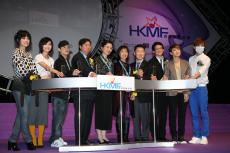 The 3rd Hong Kong Music Fair opened
today and continues until 21 March. Officiating at the opening ceremony were
(left to right): Hong Kong performers Joey Yung, Charlene Choi and Justin Lo; Ng
Yu, Chairman, Working Committee, Hong Kong Music Fair; Fu Yanmei, Assistant
Ombudswoman, Department of Cultural Market, Ministry of Culture, PRC; Esther
Leung, Deputy Secretary for Home Affairs, HKSAR; Benjamin Chau, TDC Assistant
Executive Director; Hung Tik, Chairman of IFPI (HK Group) Ltd; performers Denise
Ho and Hins Cheung The 3rd Hong Kong Music Fair opened
today and continues until 21 March. Officiating at the opening ceremony were
(left to right): Hong Kong performers Joey Yung, Charlene Choi and Justin Lo; Ng
Yu, Chairman, Working Committee, Hong Kong Music Fair; Fu Yanmei, Assistant
Ombudswoman, Department of Cultural Market, Ministry of Culture, PRC; Esther
Leung, Deputy Secretary for Home Affairs, HKSAR; Benjamin Chau, TDC Assistant
Executive Director; Hung Tik, Chairman of IFPI (HK Group) Ltd; performers Denise
Ho and Hins Cheung
The 3rd Hong Kong Music Fair opened today with about 70 exhibitors from Hong
Kong, the Chinese mainland, Germany, Korea and Singapore. Record companies, new
media content providers, music portals and mobile and hardware manufacturers,
along with music industry artists and other professionals, are taking part in
the three-day fair, which continues until 21 March at the Hong Kong Convention
and Exhibition Centre.
Jointly organised by the Hong Kong Trade Development Council (TDC) and the IFPI
(Hong Kong Group), the fair caters to business as well as public interests,
promoting music products and raising awareness of legal downloads.
"Thanks to the 10 German companies joining us for the first time, our fair is
more international than ever," said Benjamin Chau, TDC Assistant Executive
Director, speaking at the opening ceremony. "With the development of new media,
music's business model can no longer focus solely on the sales of CDs and other
traditional music products. That makes artist management, including concert
management and celebrity endorsements, an even more important aspect of the
industry," he added.
As such, a series of star seminars will be staged on 20 March, with artist
managers from all over Asia sharing their management secrets. Managers Virginia
Lok, Paco Wong and Mani Fok, along with such local artists as Law Ka Leung, Jade
Kwan and Eric Suen, are sure to shed new light on this hot topic.
For the first time, the IFPI Hong Kong Top Sales Award presentation ceremony and
the Hong Kong Music Fair will be held at the same venue. To promote the public's
awareness of intellectual property rights, visitors are free to download
segments of the presentation ceremony at the fair's Cyberport booth, 20 March to
21 March. Among the other new features this year is the Talent Showcase, giving
promising singers and composers from Hong Kong and the Chinese mainland a chance
to be discovered by industry professionals. The showcase is a new initiative
introduced by the IFPI (Hong Kong Group).
The music fair will open to public from 5pm to 9:30pm on 20 March, and from
10:30am to 9:30pm on 21 March. Exhibitor promotion sessions will be held on 21
March, with local singers Fiona Sit, Ivana Wong, Stephy Tang, Alex Fong, Kary
Ng, Kay Tse, Chet Lam and others performing at various times. Visitors who
purchase music products of at least HK$50 in value at the fair will be admitted
free.
Also presiding at today's opening ceremony were: Esther Leung, Deputy Secretary
for Home Affairs, HKSAR; Fu Yanmei, Assistant Ombudswoman, the Department of
Cultural Market, Ministry of Culture, PRC; Ng Yu, Chairman, Working Committee,
Hong Kong Music Fair; Hung Tik, Chairman of IFPI (HK Group) Ltd; and performers
Joey Yung, Hins Cheung, Charlene Choi, Denise Ho and Justin Lo.
The Hong Kong Music Fair is one of the core events of Entertainment Expo Hong
Kong. Other Expo events include: the Hong Kong International Film and Television
Market; the Hong Kong International Film Festival; the Hong Kong Film Awards
Presentation Ceremony; the Asian Film Awards; the Hong Kong - Asia Film
Financing Forum; the IFPI Hong Kong Top Sales Music Award; the Digital
Entertainment Leadership Forum; and the Hong Kong Independent Short Film and
Video Awards.
March 12, 2008

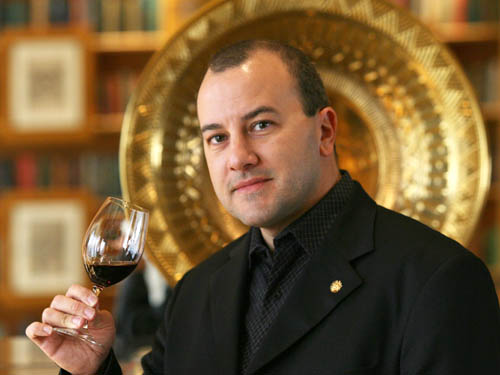 HK will lead billion-dollar boom in region's wine trade, survey finds -
Dennis Eng
HK will lead billion-dollar boom in region's wine trade, survey finds -
Dennis Eng
Hong Kong will dominate the region's booming trade in wine after scrapping the
40 per cent wine duty and reap valued-added economic benefits expected to top
HK$1 billion by 2012, a study has found. The economic benefits, including the
creation of thousands of jobs, were projected to reach almost HK$3 billion by
2017, said Edward Leung Hoi-kwok, the Trade Development Council's chief
economist.
The wine market in Asia was predicted to grow by between 10 per cent and 20 per
cent annually over the next five years, with the mainland alone expected to
import HK$7 billion worth of wine by 2017, the council's study said. The value
of wines consumed in the region, excluding Japan, would reach HK$130 billion in
2012 and HK$210 billion by 2017. Since the government announced two weeks ago
that wine duties would be abolished, excitement in the industry has been
considerable. Fine-wine auctions are planned and various wine-related businesses
intend to set up offices in Hong Kong.
"It's not going to give you the opportunity to become a world wine-trading
centre, truly, because of the location of Hong Kong, but you're going to run
Asia," said Gil Lempert-Schwarz, chairman of the Wine Institute of Las Vegas. On
May 31, New York-based Acker Merrall & Condit, the oldest wine merchant in the
US, will visit to auction fine wines worth more than US$6 million.
"This is going to be gigantic in terms of the wines that are involved and in
terms of this potentially being one of the top 10 sales of all time," Mr Lempert-Schwarz
said. "Somebody said that two or three of the big clients of Acker in Hong Kong,
who were going to bid on stuff in New York this last weekend, are now holding
back from that because they want to put all their effort into the sale here in
Hong Kong."
Mr Lempert-Schwarz, a consultant for Acker Merrall, said he expected 85 per cent
of the roughly 1,000 lots on sale to go to either local or mainland buyers, and
maybe some Taiwanese collectors. The company will hold another auction in the
city in November, with wines valued at US$4 million to US$5 million. According
to Mr Lempert-Schwarz's brother, who runs a wine hedge fund for Merrill Lynch
out of Japan, a number of major collectors in Japan are talking about storing
wine in Hong Kong to capitalize on the zero duties, provided storage facilities
are suitable.
Mr Lempert-Schwarz also said three of the top 10 wine collectors in the world
were in Hong Kong, one of whom was looking to relocate a significant portion of
his wines from London. It is estimated that at least 2 million cases of wine
stored in London are owned by Asian collectors.
To capitalize on the market potential, the council will hold the first Hong Kong
International Wine Expo from August 14 to 16.
March 8, 2008
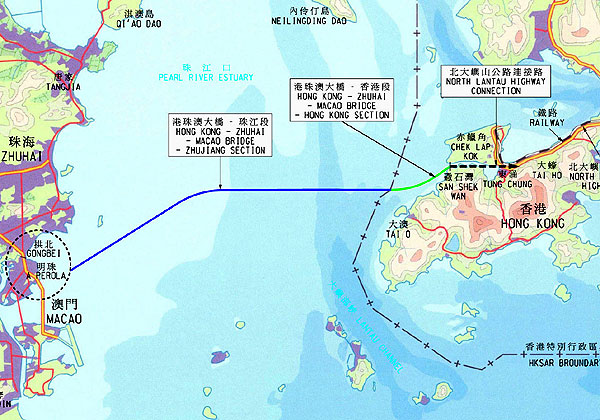 Agreement reached on bridge link
funding - Hong Kong-Zhuhai-Macau Bridge. Agreement reached on bridge link
funding - Hong Kong-Zhuhai-Macau Bridge.
The new bridge will dramatically speed up connections between Hong Kong,
Macau and Zhuhai Hong Kong, Zhuhai and Macau have reached a consensus on the
financing of the Hong Kong-Zhuhai-Macau Bridge linking the three places. Once
completed, the bridge is expected to be a major landmark which will enhance Hong
Kong's connections with other cities and port facilities in the Pearl River
Delta in southern China. The project would soon proceed to public tenders but
arrangements have been made to cover any shortfall between construction costs
and investment by the private developer that wins the bid to build the bridge.
Hong Kong would cover 50.2 per cent, Guangdong 35.1 per cent and Macau 14.7 per
cent.
Secretary for Transport & Housing Eva Cheng said: "The three sides agreed that
the three governments would be responsible for the construction and operation of
the boundary-crossing facilities and connecting roads to the bridge within their
own territory. We agreed to share the amount of the subsidy under the
cost-to-benefit ratio which takes into account the economic benefits to each
side."
Improved cargo flows - Dr Billy Mak from the Department of Finance at Baptist
University told South China Morning Post (February 29) the bridge was likely to
lead to more cargo flow from western Guangdong and Guangxi region to Hong Kong
container terminals and the airport. The bridge would also stimulate the
development of North Lantau as a tourist zone.
The connecting roads are about 12.6km on the Hong Kong side and 13.9km on the
mainland side. The main body of the bridge measuring 29.6km is expected to run
from San Shek Wan in Lantau to Gongbei in Zhuhai and A Perola in Macau.
Travelling time between Hong Kong and Macau and Zhuhai will be shortened from an
hour to between 15 and 20 minutes.
The bridge was first proposed in 1982 by Hong Kong entrepreneur Gordon Wu whose
company Hopewell Holdings is expected to be one of the bidders for the project.
Foreign and Domestic Banks Actively
Build QDII Brands
Since the launch of the qualified domestic institutional investor (QDII)
program on the mainland in 2006, various large foreign and domestic banks have
rushed to build their own brands and launch different types of QDII financial
products to meet the increasing demand for wealth management from mainlanders.
As of the end of October 2007, a total of 154 QDII bank products had been
launched by 16 foreign and domestic banks and the sales volume amounted to
Rmb35.196 billion and US$1.012 billion. Of these 154 products, 64 were offered
by 11 domestic banks capturing Rmb29.349 billion and US$0.317 billion in sales,
while 90 were sold by five foreign banks raising Rmb5.848 billion and US$0.695
billion.
Many of these QDII bank products have established a name in the market and have
built a brand in wealth management. The Industrial and Commercial Bank of China
launched the first wealth management product making offshore investment on
behalf of clients on the mainland and built the "Pearl of the Orient" brand.
Among this series, "Pearl of the Orient I" is the first QDII product investing
in offshore stock markets following the liberalization policy and
record-breaking sales have been attained. Other well-known investment product
brands established by domestic banks include "Huideyin" and "Haiyin I" of the
China Construction Bank, and "Delibao" and "Huijutong" of the Bank of
Communications. Investment products offered by foreign banks include "Dynamic
Return Investment" of the Standard Chartered Bank and "Jihuibao" of the Bank of
East Asia.
According to Li Fuan, director of the business innovation and supervision
department under the China Banking Regulatory Commission (CBRC), banks offering
offshore wealth management services are characterized by having a steady client
base, good reputation, extensive operation network, flexible and diversified
product designs, and rich product variety. The many offshore wealth management
products offered by them can meet the various demands of clients.
However, these products also have room for improvement. For instance, the sales
channels and coverage are limited, the marketing effort is not strong enough,
the brand advantage has yet to be formed, manpower support and backup system are
inadequate, etc. Also, policy constraints such as restrictions on investment
types, proportion and minimum amount have stifled the growth of QDII products.
With respect to the demand for wealth management, the vigorous boom in the
capital market in the last two years has greatly boosted the demand of mainland
investors for wealth management. The wealth effect of the stock market has also
caused saving deposits to flow in its direction. According to the statistics of
the People's Bank of China, in October 2007 the level of savings of mainlanders
dropped Rmb506.2 billion, the greatest drop ever in a single month. At the same
time, the trend of mainlanders terminating their insurance policies and
diverting the money to the stock market was obvious. The number of people
investing in securities and fund has continued to rise.
To meet the increasing demand for wealth management, CBRC will continue to
strengthen its support for commercial banks in providing offshore wealth
management services. Efforts will be made to create the conditions for further
liberalizing the investment market, allowing investors to participate more in
the international capital market. CBRC is also planning to extend the scope of
offshore stock market beyond Hong Kong to include other mature stock markets so
as to achieve a rational global distribution of assets for diversification of
risks.
According to Li, CBRC will conduct studies on the QDII business of commercial
banks, collecting information on the banks' development strategies, product
designs and marketing plans in relation to their QDII business. Meanwhile, CBRC
will call on the commercial banks to strengthen their ability in risk and
investment management, and will also continue with its efforts in enhancing
investors' investment experience and risk awareness so as to safeguard their
interests.
It can be expected that the demand for offshore wealth management of
mainlanders and the support of the central government will bring enormous
business opportunities for Hong Kong's professional service sectors such as
financial services, financial accounting, legal services and marketing.
Amid the increasing demand of mainlanders for wealth management, foreign and
domestic banks engaged in QDII business on the mainland have offered a large
variety of financial products but none of them have emerged as the leading
brand. Hong Kong financial institutions, with their rich experience in designing
and marketing financial products, coupled with the fact that Hong Kong is the
first stop of the mainland's QDII offshore wealth management business, have
first-mover advantage in formulating relevant marketing strategies and
developing QDII brands.
QDII can also drive the development of Hong Kong's marketing, accounting and
legal services sectors which can provide professional services for QDII business
such as market consultation, financial and legal services.
As China's QDII business is going to extend to international capital markets
beyond Hong Kong, Hong Kong's financial and other professional services sectors
stand to benefit by assisting the mainland to "go global" via Hong Kong.
February 24, 2008
Hong Kong retains mantle as world's
freest economy
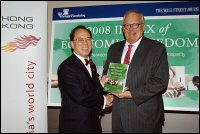 Chief Executive Donald
Tsang receives his copy of the 2008 Index of Economic Freedom from Heritage
Foundation President Dr Edwin Feulner Chief Executive Donald
Tsang receives his copy of the 2008 Index of Economic Freedom from Heritage
Foundation President Dr Edwin Feulner
Hong Kong claimed the top spot as the world's freest economy for the 14th
straight year in a study released by Washington-based think tank, the Heritage
Foundation.
The 2008 Index of Economic Freedom covered 157 economies worldwide after
assessing them on 10 economic freedom factors. Hong Kong scored top marks on
four factors: trade freedom, investment freedom, financial freedom and property
rights. The city also ranked among the top 10 in other areas such as freedom,
government size, monetary freedom and labour freedom.
Second and third place went to Singapore and Ireland respectively.
Financial Secretary John Tsang said the government was determined to uphold Hong
Kong's position as the freest economy in the world. "We see the role of the
government as that of a facilitator. We provide a business-friendly environment
where all the firms can compete on a level playing field and establish an
appropriate regulatory regime to ensure the integrity and smooth functioning of
a free market," he said.
The report also noted the city's simple business regulation and highly flexible
labour market. Investment in Hong Kong was strongly encouraged with virtually no
restrictions on foreign capital.
A separate report released recently showed that more Hong Kong people wanted to
start their own businesses amid the rosy economic outlook. The 2007
entrepreneurship study showed one out of 10 Hong Kong people had tried starting
their own businesses, up from 3 per cent in a 2004 similar study. It was also
the second highest rate among so called "high income countries", following
Iceland where the rate was 12.5 per cent. The United States came third with 9.6
per cent.
The findings coincided with the latest Hong Kong Company Registry figures,
showing a record 22.9 per cent rise in newly registered companies in 2007.
The study was conducted by Global Entrepreneurship Monitor (GEM), a non-profit
research oganisation led by Boston's Babson College and the London Business
School. Last year's study was the fourth GEM Hong Kong report, in which 2,000
people were interviewed between May and October.
February 1, 2008
Hong Kong's World-class services a
platform for growth
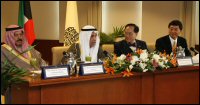 (From right) HKTDC Executive
Director Fred Lam; HKSAR Chief Executive Donald Tsang; Ali M Thunayan Al-Ghanim,
Chairman of the Kuwait Chamber of Commerce & Industry and H.E.Sheikh Dr Salem
Jaber Al-Ahmad Al-Sabah, Adviser to the Kuwaiti Prime Minister. (From right) HKTDC Executive
Director Fred Lam; HKSAR Chief Executive Donald Tsang; Ali M Thunayan Al-Ghanim,
Chairman of the Kuwait Chamber of Commerce & Industry and H.E.Sheikh Dr Salem
Jaber Al-Ahmad Al-Sabah, Adviser to the Kuwaiti Prime Minister.
Hong Kong is well placed to become a centre for Islamic finance in Asia, said
Chief Executive Donald Tsang at a business luncheon organized by the Hong Kong
Trade Development Council (HKTDC) and the Kuwait Chamber of Commerce. He invited
Kuwaiti banks and financial services companies to extend and diversify their
global reach through the city. Attended by more than 200 Kuwaiti business
people, the luncheon held in late January was the first stop in a week-long
business services sector trip to the Middle East which also covered Riyadh, the
Saudi Arabian capital, along with Abu Dhabi and Dubai in the United Arab
Emirates.
Mr Tsang said Hong Kong's sound financial services infrastructure and
well-established system make it an attractive location for investments. The
first Islamic retail fund launched recently in Hong Kong had attracted about
US$45 million worth of orders by December. Noting Hong Kong is already a market
of first choice for Middle Eastern companies, Mr Tsang said average annual
bilateral trade with Kuwait grew 20.5 per cent from 2002-2006. In 2006, it was
worth US$264 million.
Cepa good for business - "One way to further deepen the trading relationship is
for Kuwaiti companies to capitalize on Hong Kong's special status within China,"
said Mr Tsang, adding that the Closer Economic Partnership Agreement (Cepa) is
especially good for this purpose. "We welcome investments by sovereign wealth
funds, which are becoming more prominent in financial markets and are a positive
force for global markets."
Hong Kong Trade Development Council Executive Director Fred Lam added that Time
magazine in its January 2008 cover story had called Hong Kong "China's Wall
Street at the dawn of the Asian century", noting the city's world-class
financial services sector and bustling stock market.
"We believe we can also become the Middle East's Wall Street," said Mr Lam. He
added that there is much more to Hong Kong than finance. A delegation of more
than 20 of Hong Kong's most senior players including international bankers, top
property developers, architects, urban planners and interior designers as well
as heads of major legal services and media companies accompanied Mr Tsang and Mr
Lam for the Middle East mission to explore areas of cooperation with Middle East
investors.
Asian filmmaking hub scores starring
role
 Wouter Barendrecht,
pictured with actress Michelle Yeoh, says no other country apart from America
has so many international stars Wouter Barendrecht,
pictured with actress Michelle Yeoh, says no other country apart from America
has so many international stars
In 1991, Dutch-born Wouter Barendrecht founded Fortissimo Films with Hong Kong
film director and distributor Shu Kei due to his passion for Asian films.
Seventeen years later, with present business partner Michael J. Werner, he was
honoured at the annual CineAsia convention in Macau for his "significant
achievements in the development, financing, co-production, promotion and
distribution of award-winning films globally".
Fortissimo is responsible for bringing to the world Hong Kong cinema classics
such as director Wong Kar Wai's Chungking Express and In the Mood for Love. The
latter film won Best Actor award for Hong Kong actor Tony Leung Chiu Wai at the
2000 Cannes Film Festival. But their presence is felt all around Asia. For
example, they helped bring Thailand's booming film industry into the
international limelight with hits like The Eye trilogy and The Iron Ladies.
"I have always loved Asian films," said Fortissimo's Co-Chairman. Mr Barendrecht
had previously worked as a programmer for the Rotterdam Film Festival and as a
press officer for the Berlin Film Festival.
"I think Asian films have more to offer than either European or American films.
The film industry in Europe is subsidised and there is no business element.
Sometimes, it is just art for art's sake. There is nothing wrong with that but
Asian filmmaking is more interesting as there is more variety in the genre and
overall, there are more auteur aspects," he said. "Asian films have
entertainment and art. It proves that both elements can co-exist at the same
time."
Quantum leap - Asian films have come a long way, according to Mr Barendrecht.
"Back then when we were selling Asian films, people referred to it as Oriental
films, which smacks of neo-colonialism. Now, everybody can differentiate between
Japanese, Korean or Thai films."
He started Fortissimo Films as a hobby, with just a "fax machine in my bedroom
in Amsterdam", while his partner Shu Kei was in Hong Kong doing film
distribution. "We went to Cannes in 1991 and pitched ourselves as a new company
involved with Asian films. At the beginning, we focused on Japanese and Korean
films. We had no money then, only our passion and integrity and a firm belief
that Asian films are artistic and exciting."
The turning point came with Hong Kong director Clara Law's Autumn Moon, which
won the Golden Leopard award at Locarno Film Festival in 1992. Fortissimo
distributed the film and things progressed from there and he moved to Hong Kong.
"Hong Kong is my home now and it is good operating from here. There are now
about 10 other companies in Hong Kong doing what we do but we are the only
company distributing foreign films as well as Asian films." Fortissimo is also
distributing a documentary on The Rolling Stones called Shine a Light which is
scheduled to open in Hong Kong around March/April.
He said he couldn't find a better place in the world for his kind of business.
"Hong Kong is really the heart of Asian filmmaking. With the exception of
America, there is really no other place which has exported such talents as
international stars Michelle Yeoh, Maggie Cheung, Tony Leung Chiu Wai, Andy Lau,
Jackie Chan, Chow Yun Fat and directors like John Woo, Wong Kar Wai and Johnnie
To."
Promising future - Mr Barendrecht said Hong Kong's film industry is doing well
these days. In the past, the Chinese mainland regarded Hong Kong films as
foreign films. But the good news is that Hong Kong filmmakers have discovered
co-production which helps to spread the risks financially. "The film industry is
a risky business so it is good to spread the risks around with all parties. It
also guarantees that we can distribute the film to a wider audience. Best of
all, depending on how we structure our films on a co-production basis, we can
distribute to the huge mainland market." Any film over US$5 million has to be
co-produced, he said, as the Hong Kong market is too small.
He cited the successful co-production example of Lust, Caution, produced by Hong
Kong's Bill Kong, directed by Taiwan's Ang Lee (he won an Oscar for Brokeback
Mountain), starred Hong Kong's Tony Leung Chiu Wai and Chinese mainland actress
Tang Wei. The film won the Golden Lion for Best Film for Ang Lee at the recent
Venice Film Festival and the Golden Horse Best Actor award for Tony Leung Chiu
Wai at the Taiwan Golden Horse. "This film has everything - star power, an
auteur script based on a famous novel and beautiful production. But can we
repeat the success? There are no guarantees in the film making business."
Mr Barendrecht is also actively involved with Hong Kong Asian Film Financing
Forum (HAF) which he founded in 2000 together with the Hong Kong Directors
Guild. "It was a particularly trying time as Hong Kong and the rest of the Asia
Pacific region were just coming out of the Asian financial crisis. A year later
we were hit by Sars: nobody was going to the cinema, and China was not opening
its market to Hong Kong films. We looked at the European business model, reached
out to other countries, discovered co-production in Asia and we are now all
working on a pan-Asian level. This is the model that the Asian film industry in
Korea, Hong Kong, Thailand, Japan, China and Singapore are working on now."
Entertainment Expo shines - Mr Barendrecht had been lobbying, along with the
entire Hong Kong film industry, for HAF and Filmart to come under one umbrella –
Entertainment Expo – for some time and is very glad that it has taken off.
"People want to do business efficiently and the timing for the Entertainment
Expo is great as it is held six weeks before the Cannes Film Festival.
Entertainment Expo is a very compact event – everything takes place under one
roof and it is an important event for buyers around the world. I meet a lot of
people at the event and all my clients love to come to Hong Kong because of its
great food and shopping…but of course, business is the most important, and they
feel that they get a lot done here."
With five staff in its Hong Kong office and almost 20 in Amsterdam, Fortissimo
handles around 20 films a year – two to three productions, five to six
co-productions and the rest are acquisitions. Besides Hong Kong, Fortissimo
Films has offices in Amsterdam, London, New York, Sydney and Paris and agents in
the US, Europe, Tokyo, Beijing and the Middle East.
Footwear Design Competition Winners
Announced Dazzling Footwear and Bags on Display at Awards Show
 A dazzling array of footwear and
bags were showcased at today's 8th Footwear Design Competition Hong Kong - Belle
International and Lam Wing Yee were the big winners at today's 8th Footwear
Design Competition Hong Kong awards show, held at the Hong Kong Convention and
Exhibition Centre. A dazzling array of footwear and
bags were showcased at today's 8th Footwear Design Competition Hong Kong - Belle
International and Lam Wing Yee were the big winners at today's 8th Footwear
Design Competition Hong Kong awards show, held at the Hong Kong Convention and
Exhibition Centre.
 Ms Lam picked up the
Staccato Award for Grand Champion, the Millie's Award for the Most Promising New
Talent 2008, and the Ladies' Boots award for her Amphitrite design theme. Belle
International swept all three corporate prizes, including the Shoemaster Award
for Best Corporate Design and the Texon Award for Corporate Creativity,
impressing the judges with her Flying Belle design theme. The company also
received the Licheng Award for the Best Commercial Prospect. Ms Lam picked up the
Staccato Award for Grand Champion, the Millie's Award for the Most Promising New
Talent 2008, and the Ladies' Boots award for her Amphitrite design theme. Belle
International swept all three corporate prizes, including the Shoemaster Award
for Best Corporate Design and the Texon Award for Corporate Creativity,
impressing the judges with her Flying Belle design theme. The company also
received the Licheng Award for the Best Commercial Prospect.
 Belle International
swept all three corporate prizes, including the Shoemaster Award for Best
Corporate Design and the Texon Award for Corporate Creativity Belle International
swept all three corporate prizes, including the Shoemaster Award for Best
Corporate Design and the Texon Award for Corporate Creativity
More than 1,100 entries were submitted, and Tang Yiu, Chairman of the Federation
of Hong Kong Footwear Ltd, was impressed with the high design quality. "The
competition is meant to develop young design talent and to enhance creativity
and quality in the Hong Kong footwear industry. All these are vital to the
growth of the industry," said Mr Tang, who chaired the organising committee for
this year's Footwear Design Competition.
Ladies' Shoes and Bags was this year's new category, joining six others:
Children; Sports; Men's Shoes; Ladies' Boots; Ladies' Sandals; and Ladies'
Shoes. Judging was based on creativity, fashion aesthetics and ease of design
production.
Prizes were awarded in each category. In addition, a number of special awards
were presented: the Joy & Peace Award for Creativity; Fiorucci Award for Most
Eye-catching Design; le saunda Award for Modern Chic; Amann Award for
Intelligent Design; Y-NOT KiDS Award for the Most Smart Kid's Shoes; Classical
Award for the Best Charismatic; APLF Global Market Award; and China Shoes for
Best Fashion Sense Award.
The winning designs will be featured in Hong Kong Footwear, published by the
Hong Kong Trade Development Council (TDC). They will also be displayed at
several major fairs, including Style Hong Kong and Fashion Access.
Hong Kong footwear exports amounted to US$5.4 billion (HK$42.1 billion) in the
first 11 months of 2007, with the United States, Japan and the Chinese mainland
the top three markets. Exports to the Chinese mainland, Italy and Germany grew
substantially over the same period last year, up 15 per cent, 16 per cent and 12
per cent respectively.
The competition was organized by the Federation of Hong Kong Footwear and the
TDC (Hong Kong Trade Development Council).
January 30, 2008
Olympic torch relay set for May 2
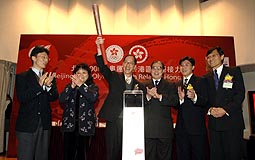 Olympic spirit: Secretary for Home
Affairs Tsang Tak-sing (third left) announces the Olympic torch relay will take
place on May 2 in Hong Kong. Olympic spirit: Secretary for Home
Affairs Tsang Tak-sing (third left) announces the Olympic torch relay will take
place on May 2 in Hong Kong.
The Olympic flame will arrive in Hong Kong April 30 and the Olympic Torch Relay
will be held May 2. The flame will be carried by 120 torchbearers across Hong
Kong and the torch relay will last eight hours. Secretary for Home Affairs Tsang
Tak-sing today said Hong Kong will be the first stop on Chinese soil after the
Olympic flame is carried through 19 cities around the world.
A launch ceremony for the torch relay will be held at its starting point in the
Cultural Centre Piazza in Tsim Sha Tsui. It will finish at Golden Bauhinia
Square in Wan Chai followed by a closing celebration at Sha Tin Racecourse.
Torchbearers will pass Tsing Ma Bridge, the Shing Mun River, the Olympic
Equestrian Venue in Sha Tin, Sha Tin Racecourse, the Avenue of Stars, Victoria
Harbour, the Legislative Council Building, Olympic Square in Hong Kong Park and
the Convention & Exhibition Centre.
Students and residents' associations will be invited to cheer the torchbearers
along the relay route, and people can witness the historical moment live on
television. Roving exhibitions will be held in the 18 districts from March to
May.
After Hong Kong the Olympic flame will head to Macau and major Mainland cities
before arriving in Beijing on August 8 for the opening ceremony of the Beijing
2008 Olympic Games.
January 22, 2008
Hong Kong's Jewellery sparkles in
upbeat Malaysia - Developing the Hong Kong brand.
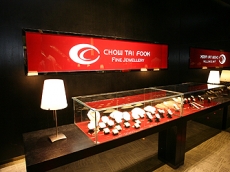 Hong Kong's Chow Tai Fook, which has 750
retail outlets in the territory, Macau, Taiwan and on the Chinese mainland, has
opened its first store in Kuala Lumpur. It's a move to take advantage of
Malaysia's growing prosperity and higher-income consumers - and forge ahead of
other foreign designers who may not take account of Malaysian tastes and
jewellery requirements. Hong Kong's Chow Tai Fook, which has 750
retail outlets in the territory, Macau, Taiwan and on the Chinese mainland, has
opened its first store in Kuala Lumpur. It's a move to take advantage of
Malaysia's growing prosperity and higher-income consumers - and forge ahead of
other foreign designers who may not take account of Malaysian tastes and
jewellery requirements.
The new store was established in November 2007 in prestigious The Gardens in Mid
Valley City, and is presenting a dragon-themed line of jewellery inspired by
ancient Chinese craftsmanship. The work is aimed at modern-minded women who
appreciate the richness of Chinese designs.
The Kuala Lumpur store is the first step by Chow Tai Fook into South East Asia,
and the pieces are guided by design guru Yip Kam Tim. The firm says it chose the
Malaysian capital as an opening to the region because Malaysian retail offers
modern, dynamic appeal to an emerging consumer pool.
With a growing demographic for youthful, affluent shoppers, Kuala Lumpur offers
plenty of potential for mid-priced and well-designed jewellery.
In fact, Hong Kong brands have an established reputation for stylish offerings,
thanks to the popularity of the territory's movie stars, films, TV programmes
and singers. Hong Kong's cachet is particularly strong among Chinese Malaysians.
The Malaysian jewellery sector has been opening to a wider range of jewellery
and methods of retail in recent months. Jeweller Poh Kong Holdings Bhd recently
opened franchise operations in Kelantan, Terengganu, Sabah, and Sarawak, aiming
to draw on sales from greater prosperity in the provinces.
January 17, 2008
Lampposts to house Wi-Fi facilities
Wi-Fi facilities will be installed into 669 lampposts across Hong Kong.
Secretary for Commerce & Economic Development Frederick Ma told legislators
today the Office of the Telecommunications Authority supports the move and has
provided detailed lamppost data to Wi-Fi service operators.
Three operators have applied for Wi-Fi installation on lampposts. One has
already presented its technical proposal to the Highways Department.
The Housing Department has made 1,000 estate lobbies available to operators for
Wi-Fi services. The Housing Authority also plans to reserve ducts between
lampposts in new estates for the installation of Wi-Fi or other electronic
services.
January 14, 2008
Hong Kong ranks world's freest economy
again for 14 consecutive years by Heritage Foundation
Hong Kong has been ranked as the world's freest economy for the 14th consecutive
year by the Heritage Foundation in the foundation's 2008 Index of Economic
Freedom study released on Tuesday, a press release from the Hong Kong Special
Administrative Region (HKSAR) government said.
According to the study report, Hong Kong scores exceptionally well in almost all
areas of economic freedom.
Among the 10 individual areas assessed, Hong Kong ranks first in trade freedom,
investment freedom, financial freedom and property rights. Hong Kong also ranks
in the top 10 in another four areas - fiscal freedom, government size, monetary
freedom and labor freedom.
The report noted that Hong Kong's income and corporate tax rates were very
competitive, and overall taxation was relatively small as a percentage of gross
domestic product (GDP).
It also said that Hong Kong's business regulation was simple, the labor market
was highly flexible, and investment in Hong Kong was strongly encouraged with
virtually no restrictions on foreign capital.
The foundation also complimented Hong Kong as one of the world's leading
financial centers, with its regulation of banking and financial services both
non-intrusive and transparent. The study noted that property rights were
protected by an independent and virtually corruption-free judiciary.
Compared to Singapore, Hong Kong fares better in regard to trade freedom, fiscal
freedom, investment freedom and financial freedom, while Singapore fares better
in business freedom, government size, monetary freedom, freedom from corruption
and labor freedom. Both Hong Kong and Singapore are ranked first in property
rights.
"We are determined to uphold Hong Kong's position as the freest economy in the
world," Hong Kong Financial Secretary John C Tsang said while welcoming the
study report.
"We see the role of the HKSAR government as that of a facilitator. We provide a
business-friendly environment where all firms can compete on a level-playing
field and establish an appropriate regulatory regime to ensure the integrity and
smooth functioning of a free market," Tsang said.
The study measured the degree of economic freedom of 157 economies worldwide by
assessing 10 factors: business freedom, trade freedom, fiscal freedom,
government size, monetary freedom, investment freedom, financial freedom,
property rights, freedom from corruption, labor freedom. Hong Kong retained its
position as the freest economy in the world, followed by Singapore and Ireland.
Make HK top source of talent, urges new
AmCham HK chief
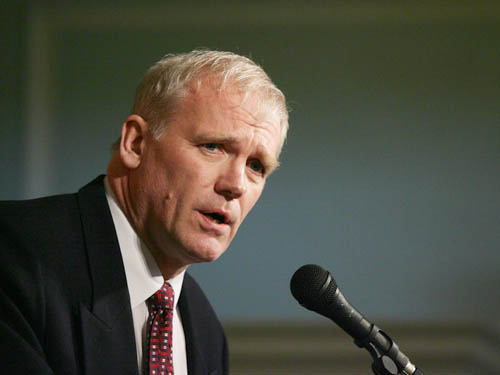 Developing Hong Kong into a regional hub
for top talent is key to maintaining its stature as an international business
centre, according to Steven DeKrey, the new chairman of the American Chamber of
Commerce. Dr DeKrey, an associate dean and director of MBA programs at the Hong
Kong University of Science and Technology, said yesterday he was aware of the
region's growing need for talent. Developing Hong Kong into a regional hub
for top talent is key to maintaining its stature as an international business
centre, according to Steven DeKrey, the new chairman of the American Chamber of
Commerce. Dr DeKrey, an associate dean and director of MBA programs at the Hong
Kong University of Science and Technology, said yesterday he was aware of the
region's growing need for talent.
In his first speech in his new role - "Face to Face with AmCham: 40 Years in
Asia's Business Capital" - made at an AmCham luncheon at the Ritz-Carlton Hotel,
Dr DeKrey urged the government to put more effort into becoming a source of
talent for Asia.
"Much progress has been made on educational fronts and visa policies, but more
can be done," said the new chairman, who succeeds Gary Clinton.
He said the chamber would continue to pursue the provision of quality education
for expatriate children - especially the availability of school places, which
had become a significant concern for its members.
"It has made it difficult for many incoming executives to find school places for
their children, which affects the ability of companies to bring their top talent
to the city," Dr DeKrey said.
Another top priority would be to work closely with the other seven AmChams in
Greater China, including those in Macau, Taiwan, Beijing and Shanghai.
Referring to a survey conducted by the chamber, he said he was optimistic about
this year's economic outlook. "Firms are very satisfied being in Hong Kong.
Regional headquarters are also staying," he said.
Dr DeKrey said he believed the mortgage crisis in the US was not over.
"It is still not clear for the future, and its impact has not been fully
reflected in the market," he said.
January 13, 2008
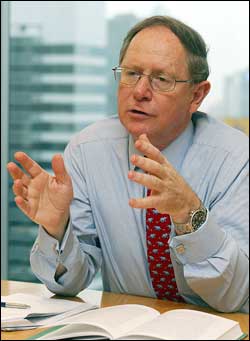 Invesco chief economist John Greenwood, also dubbed the `architect of the dollar
peg,' says local currency appreciation is not an effective measure to alleviate
inflationary pressure in the long run. "Let's say the dollar peg appreciated
from 7.8 to 7.6, inflation will temporarily decline but the inflation rate will
resume to its previous course later," Greenwood told The Standard, warning that
currency appreciation would have more of a downside as it would invite more
speculation activity. Under the currency peg, the Hong Kong dollar is fixed at
7.8 to the US dollar, though the widening of the trading band in May 2005
allowed it to be traded between 7.75 and 7.85. On January 2, the China
Securities Journal published a report suggesting the Hong Kong dollar should
appreciate from its current 7.8 to 7.5, to help ease inflationary pressure and
avoid an asset bubble. Greenwood, who has been on the Hong Kong Monetary
Authority's currency board committee since 1988, said he does not see an asset
bubble in the local economy, stressing that the HKMA has an effective mechanism
to maintain stocks of the Hong Kong dollar. A strong advocate of the currency
peg since the 1980s, Greenwood also insists the current peg system is the best
for Hong Kong. "Hong Kong's business cycle is determined by the global business
cycle, not that of China. When you talk about the global economy, the United
States is still the most influential." Greenwood said the Hong Kong dollar
cannot be pegged to the Chinese yuan as it is not freely convertible. "It will
take more than 15 years for the yuan to become fully convertible. "If the yuan
is freely convertible then the Chinese government will lose control over it. Do
you think the Chinese government will abandon its control?"
Invesco chief economist John Greenwood, also dubbed the `architect of the dollar
peg,' says local currency appreciation is not an effective measure to alleviate
inflationary pressure in the long run. "Let's say the dollar peg appreciated
from 7.8 to 7.6, inflation will temporarily decline but the inflation rate will
resume to its previous course later," Greenwood told The Standard, warning that
currency appreciation would have more of a downside as it would invite more
speculation activity. Under the currency peg, the Hong Kong dollar is fixed at
7.8 to the US dollar, though the widening of the trading band in May 2005
allowed it to be traded between 7.75 and 7.85. On January 2, the China
Securities Journal published a report suggesting the Hong Kong dollar should
appreciate from its current 7.8 to 7.5, to help ease inflationary pressure and
avoid an asset bubble. Greenwood, who has been on the Hong Kong Monetary
Authority's currency board committee since 1988, said he does not see an asset
bubble in the local economy, stressing that the HKMA has an effective mechanism
to maintain stocks of the Hong Kong dollar. A strong advocate of the currency
peg since the 1980s, Greenwood also insists the current peg system is the best
for Hong Kong. "Hong Kong's business cycle is determined by the global business
cycle, not that of China. When you talk about the global economy, the United
States is still the most influential." Greenwood said the Hong Kong dollar
cannot be pegged to the Chinese yuan as it is not freely convertible. "It will
take more than 15 years for the yuan to become fully convertible. "If the yuan
is freely convertible then the Chinese government will lose control over it. Do
you think the Chinese government will abandon its control?"
January 11, 2008
Delicate Balance of Creativity and
Functionality - Hong Kong Product Shines in China Red Star Award
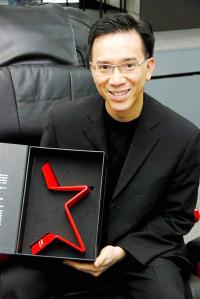 Yip states with Hong Kong celebrating the
10th anniversary of the reunification with its mother country, local product
designers have to re-position themselves accordingly. Yip states with Hong Kong celebrating the
10th anniversary of the reunification with its mother country, local product
designers have to re-position themselves accordingly.

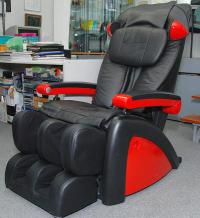 Yip Chi Wing was awarded the China Red
Star Award with his "Li Ning Power-pack" camping backpack (top) and "Life-power
LP6500" massage chair (bottom). Yip Chi Wing was awarded the China Red
Star Award with his "Li Ning Power-pack" camping backpack (top) and "Life-power
LP6500" massage chair (bottom).
"China Red Star Design Award" is one of the most distinguished awards in the
Chinese Mainland's design industry. The Award aims to promote the development of
Chinese design industry, and enhance international competitiveness of Chinese
products by encouraging Mainland enterprises to carry on independent innovation
and brand building. Among over 1,500 entries for this year, the renowned Hong
Kong product designer Alan Yip Chi Wing snatched highest awards with his "Li
Ning Power-pack" camping backpack and "Life-power LP6500" massage chair. This
reiterates the prominent presence and reputation of Hong Kong product designers
in the international design world.
Broadening Horizons through Expos and Competitions
Alan Yip has been a product designer for over 20 years. He graduated from Dept
of Industrial Design of Hong Kong Polytechnic University in 1987. After winning
a working scholarship in 1986, he worked as an intern for Frog Design Inc. in
California, USA. Upon his graduation he was hired at the Philips Eindhoven, the
Netherlands. Yip returned to Hong Kong in 1990 and founded his own Yip Design
Ltd. He comments, "For a relatively small market like Hong Kong, it is paramount
for product designers to participate in different kinds of expositions and
competitions, so as to strive for room for better development and opportunities.
For instance, I have been participating promotional activities organized by Hong
Kong Trade Development Council (HKTDC) continuously; that is not for awards or
benefits but the experiences I gain. Joining expos and competitions offers a
great opportunity for me to appreciate the excellent works from designers around
the world, helping me cultivate an international perspective about design. In
additional, meeting Mainland and overseas industry players is also crucial for
business development in the long run. "
Leverage on Hong Kong's Competitive Advantages
Alan Yip's awarded products are for him merited by their bold embrace of
creativity. He explains, "Li Ning Power pack is quite a breakthrough
design-wise. Apart from its swift flowing outer shell, it is made of hi-tech
plastic materials. The strength of cushioning is also ergonomically fine-tuned
befitting different parts of the wearer's body. It could be said an innovation
of its kind in the leisure product market in China. Life-power LP6500, on the
other hand, resembles first class in-flight seating in its design. It offers a
luxuriant comfort and comes in a vibrant, spray-painted outlook. As of
purchasing a car, the buyers can also select their favourite colour of paints
when they place their order for the chair. Such customized service proves
successful in appealing to the younger market, generating 'talking points' as
well as sales."
Yip furthers that with Hong Kong celebrating the 10th anniversary of the
reunification with its mother country, local product designers have to
re-position themselves accordingly. He adds, "As Hong Kong product designers,
our competitive advantages are highlighted: there is much room for creativity in
Hong Kong and we are backed by the huge Mainland market. It is high time we
moved forward with a globalized point of view, and leveraged our unique position
to explore new business opportunities for our design industry."
January 10, 2008
Hong Kong and Macau Doctors Allowed to
Open Private Clinics on Mainland
The Ministry of Health has recently issued a circular on the implementation of
Supplement IV to the Mainland-Hong Kong and Mainland-Macau Closer Economic
Partnership Arrangement (CEPA) with regard to medical services. According to
this circular, qualified Hong Kong and Macau service providers who are holders
of the mainland Certificate of Practicing Physician (for clinical treatment,
traditional Chinese medicine and oral care) may apply to open private clinics in
mainland cities after 1 January 2008.
The applicants must be licensed to practice medicine in Hong Kong and Macau and
must have a medical license for over five years in either Hong Kong or Macau,
have practiced continuously in both Hong Kong and Macau for a total of five
years, or have served in clinical posts in the same field on the mainland for
over five years.
Each Hong Kong or Macau service provider may only open one private clinic. He or
she must be the sole proprietor and responsible person of the clinic.
In principle, a private clinic may not employ other physicians. However, if
circumstances so require, the Hong Kong or Macau service provider may employ one
to two practicing physicians (mainland residents) in the same area of practice
to meet the needs for medical services. A suitable number of mainland registered
nurses may also be employed based on medical service needs.
|
![]()
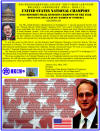 USA Small Business Administration (SBA)
Selected Johnson Choi/HKCHcc
2008 United States
National Champion
USA Small Business Administration (SBA)
Selected Johnson Choi/HKCHcc
2008 United States
National Champion![]()
![]() and follow us
on
and follow us
on
![]()

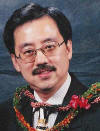
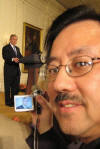
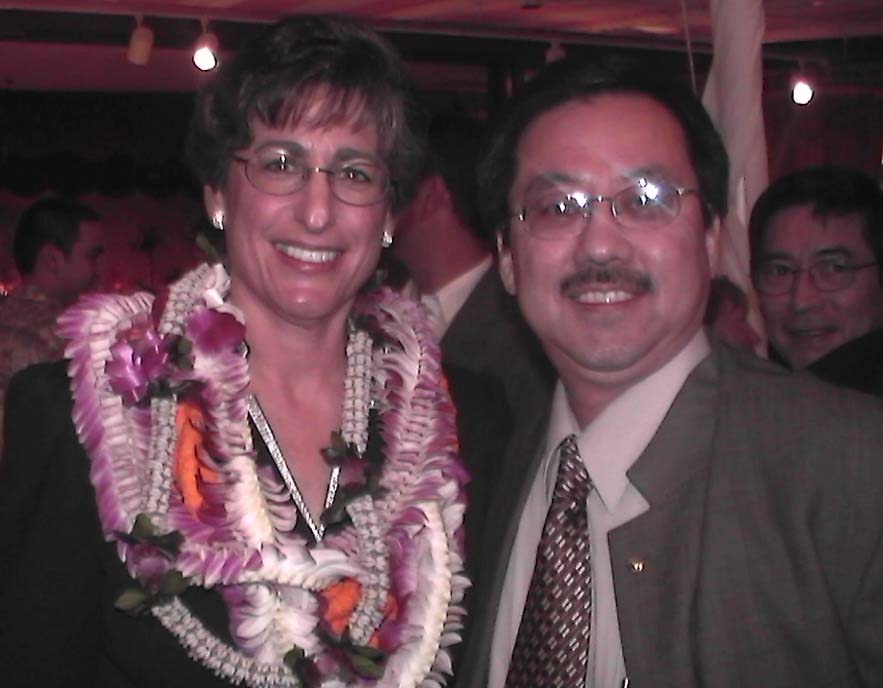
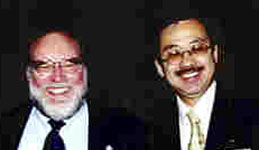
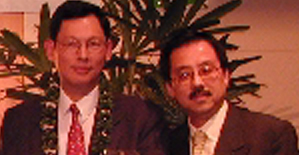
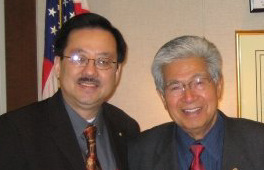


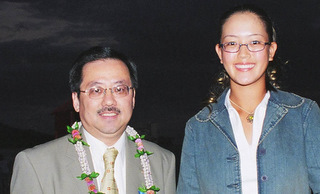
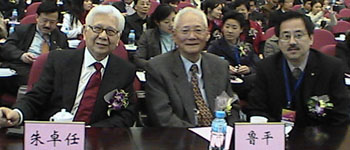













 Enterprises in the garment industry have indicated plans to set up new production bases in the next three years
Enterprises in the garment industry have indicated plans to set up new production bases in the next three years  Certain cities in inland provinces have proven attractive to foreign investment
Certain cities in inland provinces have proven attractive to foreign investment  Average pay for workers still lags in central and western regions compared to their counterparts in coastal areas
Average pay for workers still lags in central and western regions compared to their counterparts in coastal areas Hong Kong has a significant role in the Central Government’s latest Five-Year Plan, unveiled this month
Hong Kong has a significant role in the Central Government’s latest Five-Year Plan, unveiled this month View Video Presentation Online
View Video Presentation Online  Green technology is one of the seven strategic industries set out by the Central Government’s latest Five-Year Plan
Green technology is one of the seven strategic industries set out by the Central Government’s latest Five-Year Plan  Global brands are drawn to the growing spending power of Chinese mainland consumers
Global brands are drawn to the growing spending power of Chinese mainland consumers Hong Kong’s diversified financial services can provide the necessary capital for mainland technology projects
Hong Kong’s diversified financial services can provide the necessary capital for mainland technology projects  Hawaii's Brain Drain
Hawaii's Brain Drain
 Nicholas Ordway, professor of financial economics and institutions at UH, would rather talk about the "education drain."
Nicholas Ordway, professor of financial economics and institutions at UH, would rather talk about the "education drain." Ira Rohter, UH associate professor of politics, preferred to talk about the "soul drain," but added, "I think there is a real brain drain in Hawaii if you mean ... that the best and the brightest are leaving."
Ira Rohter, UH associate professor of politics, preferred to talk about the "soul drain," but added, "I think there is a real brain drain in Hawaii if you mean ... that the best and the brightest are leaving." "A large number of kids (nationally) go to college within a 500-mile radius," said Myron Arakawa, Punahou's director of college counseling. "Well, for Hawaii kids, 500 miles is in the middle of the Pacific. It's not abnormal for Hawaii students to want an adventure away from home. Unfortunately, 'away from home' is awaaay from home."
"A large number of kids (nationally) go to college within a 500-mile radius," said Myron Arakawa, Punahou's director of college counseling. "Well, for Hawaii kids, 500 miles is in the middle of the Pacific. It's not abnormal for Hawaii students to want an adventure away from home. Unfortunately, 'away from home' is awaaay from home." That's not necessarily bad. Students who go to the mainland for college "have so many different and new positive experiences that they feel that those who stay back may not have had the chance to get involved in," said Lillian Yonamine, counselor for Waipahu High. "They feel, 'Oh wow, my friends (who stayed in Hawaii), they seem like they're still in high school.' "
That's not necessarily bad. Students who go to the mainland for college "have so many different and new positive experiences that they feel that those who stay back may not have had the chance to get involved in," said Lillian Yonamine, counselor for Waipahu High. "They feel, 'Oh wow, my friends (who stayed in Hawaii), they seem like they're still in high school.' " State Rep. Brian Schatz, 27, said many of Hawaii's children leave before they have had a chance to participate in an adult Hawaii: "When you're 18, 21, you go to other people's events. As you get older, you start giving them -- you are the party, you are the community organization."
State Rep. Brian Schatz, 27, said many of Hawaii's children leave before they have had a chance to participate in an adult Hawaii: "When you're 18, 21, you go to other people's events. As you get older, you start giving them -- you are the party, you are the community organization." "I think people equate staying here with a lack of drive," said Kippen Chu. After graduating from the American University in Paris, Chu returned to Hawaii and now works in the state Legislature. "It's like, 'Oh you just want to stay here so you can go beach every day.' "
"I think people equate staying here with a lack of drive," said Kippen Chu. After graduating from the American University in Paris, Chu returned to Hawaii and now works in the state Legislature. "It's like, 'Oh you just want to stay here so you can go beach every day.' " "We believe, and we've always believed, that we're five steps behind," said nationally acclaimed author Lois-Ann Yamanaka. "It's the 'You're only good [enough] to be on this rock' mentality. It's ingrained. And when your neighbor's kid goes to Stanford and you had to stay in Hilo College -- I mean, heaven forbid! To me it's sad because I felt that way."
"We believe, and we've always believed, that we're five steps behind," said nationally acclaimed author Lois-Ann Yamanaka. "It's the 'You're only good [enough] to be on this rock' mentality. It's ingrained. And when your neighbor's kid goes to Stanford and you had to stay in Hilo College -- I mean, heaven forbid! To me it's sad because I felt that way." "We would be able to keep more of our people here if some of the captains of our industry here made it a point to hire people from here rather than bring people in," said Gov. Ben Cayetano.
"We would be able to keep more of our people here if some of the captains of our industry here made it a point to hire people from here rather than bring people in," said Gov. Ben Cayetano. Ordway also said he thinks the brain drain is partly responsible for a dearth of innovation here. Given Hawaii's wealth of scientific natural resources, scientific breakthroughs like Ryuzo Yanagimachi's cloned mice should not be isolated incidents.
"Hawaii is producing about one-fourth to one-fifth the number of patents it should, given the size of its population," said Ordway, "and despite the fact that we have a comparative advantage in astronomy, biology, botany."
Ordway also said he thinks the brain drain is partly responsible for a dearth of innovation here. Given Hawaii's wealth of scientific natural resources, scientific breakthroughs like Ryuzo Yanagimachi's cloned mice should not be isolated incidents.
"Hawaii is producing about one-fourth to one-fifth the number of patents it should, given the size of its population," said Ordway, "and despite the fact that we have a comparative advantage in astronomy, biology, botany." If Hawaii continues on this path, UH Law professor Randall Roth's projections for five years down the road are grim. He described a changed Hawaii, with less aloha spirit and fewer people with roots in Hawaii. People have continued to move to Hawaii from elsewhere, but "their life experiences and values are not identical to those of the folks whose places they took.
If Hawaii continues on this path, UH Law professor Randall Roth's projections for five years down the road are grim. He described a changed Hawaii, with less aloha spirit and fewer people with roots in Hawaii. People have continued to move to Hawaii from elsewhere, but "their life experiences and values are not identical to those of the folks whose places they took. Lavonne Leong is a 1993 graduate of Punahou. She received a bachelor's degree in English from Barnard College and is now in the third year of a doctoral program in English literature at Oxford University in England.
In many ways, she is the embodiment of Hawaii's brain drain. Asked about her future plans, she said:
Lavonne Leong is a 1993 graduate of Punahou. She received a bachelor's degree in English from Barnard College and is now in the third year of a doctoral program in English literature at Oxford University in England.
In many ways, she is the embodiment of Hawaii's brain drain. Asked about her future plans, she said: 州長林格曾積極爭取直航機往來中國與夏威夷,但未有結果。
州長林格曾積極爭取直航機往來中國與夏威夷,但未有結果。 Foster + Partners of London, led by Sir Norman; Dutch firm Office for
Metropolitan Architecture (OMA), led by principal Rem Koolhaas; and Hong Kong
firm Rocco Design Architects Ltd, led by Rocco Yim.
Foster + Partners of London, led by Sir Norman; Dutch firm Office for
Metropolitan Architecture (OMA), led by principal Rem Koolhaas; and Hong Kong
firm Rocco Design Architects Ltd, led by Rocco Yim.  Graham Sheffield, CEO, West Kowloon
Cultural District Authority
Graham Sheffield, CEO, West Kowloon
Cultural District Authority Rocco Design’s concept comprises three
integrated layers: Green Terrain, City Link, Cultural Core
Rocco Design’s concept comprises three
integrated layers: Green Terrain, City Link, Cultural Core The OMA’s Mr Gianotten agreed.
The OMA’s Mr Gianotten agreed.  OMA’s plan is for three villages nurturing
all aspects of the creative process
OMA’s plan is for three villages nurturing
all aspects of the creative process Colin Ward, Architect and Partner, Foster +
Partners
Colin Ward, Architect and Partner, Foster +
Partners (Left to right) Vincent Kwan,
Director and General Manager of Hang Seng Indexes Company Ltd; Hong Kong
Financial Secretary John Tsang; Margaret Leung, Hang Seng Bank Vice Chairman and
Chairman of the Hang Seng Indexes Advisory Committee; Peter Wong, Chairman of
RepuTex (HK) Ltd
(Left to right) Vincent Kwan,
Director and General Manager of Hang Seng Indexes Company Ltd; Hong Kong
Financial Secretary John Tsang; Margaret Leung, Hang Seng Bank Vice Chairman and
Chairman of the Hang Seng Indexes Advisory Committee; Peter Wong, Chairman of
RepuTex (HK) Ltd Hugh Grossman, Executive Director,
RepuTex
Hugh Grossman, Executive Director,
RepuTex Global shipping giant Orient
Overseas (International) Ltd - (OOIL) is one of the 30 constituents in the Hang
Seng Corporate Sustainability Index
Global shipping giant Orient
Overseas (International) Ltd - (OOIL) is one of the 30 constituents in the Hang
Seng Corporate Sustainability Index  Ken Cambie, Chief Financial Officer,
Orient Overseas (International) Ltd
Ken Cambie, Chief Financial Officer,
Orient Overseas (International) Ltd Fixed-asset investments in
the mainland’s transport infrastructure and real estate sectors by Hong Kong,
Macau, Taiwan and foreign companies have more than doubled in the four years to
2008
Fixed-asset investments in
the mainland’s transport infrastructure and real estate sectors by Hong Kong,
Macau, Taiwan and foreign companies have more than doubled in the four years to
2008  As greater numbers of people migrate to
the cities, there’s a corresponding increase in demand for public utilities such
as power, sewage treatment and garbage disposal
As greater numbers of people migrate to
the cities, there’s a corresponding increase in demand for public utilities such
as power, sewage treatment and garbage disposal  By virtue of the Hotel
Accommodation Tax Ordinance, Cap 348 (“HATO”), Hotel Accommodation Tax (“HAT”)
is imposed on hotel and guest house accommodation.
By virtue of the Hotel
Accommodation Tax Ordinance, Cap 348 (“HATO”), Hotel Accommodation Tax (“HAT”)
is imposed on hotel and guest house accommodation. City density for retail has far to
go
City density for retail has far to
go  Urban consumer spending is
on the rise
Urban consumer spending is
on the rise  Intense market competition has also
prompted more retail enterprises to expand into second- and third-tier cities.
According to data from the China General Chamber of Commerce, trends for mergers
and acquisitions on a regional basis and expansion towards second- and
third-tier cities were well defined among the top 100 retail enterprises in
2009.
Intense market competition has also
prompted more retail enterprises to expand into second- and third-tier cities.
According to data from the China General Chamber of Commerce, trends for mergers
and acquisitions on a regional basis and expansion towards second- and
third-tier cities were well defined among the top 100 retail enterprises in
2009. Hong Kong Commissioner to the United
States, Donald Tong, welcomed the findings of the report, saying: “I am
delighted that the Cato Institute, in conjunction with other prominent research
institutions, once again recognizes Hong Kong’s staunch commitment to free trade
and the rule of law.
Hong Kong Commissioner to the United
States, Donald Tong, welcomed the findings of the report, saying: “I am
delighted that the Cato Institute, in conjunction with other prominent research
institutions, once again recognizes Hong Kong’s staunch commitment to free trade
and the rule of law. According to the report,
Hong Kong’s rating for economic freedom is 9.05 out of 10, followed by Singapore
with a rating of 8.70. The United States is the sixth-freest economy in the
world with a rating of 7.96.
According to the report,
Hong Kong’s rating for economic freedom is 9.05 out of 10, followed by Singapore
with a rating of 8.70. The United States is the sixth-freest economy in the
world with a rating of 7.96. The rooftop swimming pool
at Traders Hotel, Western District, operated by the Shangri-La group
The rooftop swimming pool
at Traders Hotel, Western District, operated by the Shangri-La group Andrea Mastellone, General
Manager, Traders Hong Kong
Andrea Mastellone, General
Manager, Traders Hong Kong Mid-range EAST hotel in Taikoo Shing, a
Swire property
Mid-range EAST hotel in Taikoo Shing, a
Swire property Brian Williams, Managing Director,
EAST
Brian Williams, Managing Director,
EAST Reflecting a boom in MICE travel, the
Hong Kong Jewellery & Gem Fair in September drew a record 3,205 exhibitors from
45 countries
Reflecting a boom in MICE travel, the
Hong Kong Jewellery & Gem Fair in September drew a record 3,205 exhibitors from
45 countries San Francisco California - September 20 2010 - More than 200 distinguished
guests, consuls general, senior government officials and business leaders
gathered at the "Meet the Many Faces of Hong Kong" reception at the de Young
Museum, San Francisco, on September 20.
San Francisco California - September 20 2010 - More than 200 distinguished
guests, consuls general, senior government officials and business leaders
gathered at the "Meet the Many Faces of Hong Kong" reception at the de Young
Museum, San Francisco, on September 20. At the reception, the Director of the Hong
Kong Economic and Trade Office, San Francisco, Mr Jeff Leung, updated the guests
on the revitalized Brand Hong Kong (BrandHK), a communications platform to
promote Hong Kong as Asia's world city.
At the reception, the Director of the Hong
Kong Economic and Trade Office, San Francisco, Mr Jeff Leung, updated the guests
on the revitalized Brand Hong Kong (BrandHK), a communications platform to
promote Hong Kong as Asia's world city. Addressing the 50 industry leaders and
senior executives from the region’s vineyards and wineries, Mr. Jeff Leung,
Director of the Hong Kong Economic and Trade Office, San Francisco highlighted
the zero wine import duty policy of Hong Kong.
Addressing the 50 industry leaders and
senior executives from the region’s vineyards and wineries, Mr. Jeff Leung,
Director of the Hong Kong Economic and Trade Office, San Francisco highlighted
the zero wine import duty policy of Hong Kong. Also speaking at the luncheon was Mr.
Andrew Davis, Associate Director-General at Invest Hong Kong. He highlighted the
customs facilitation measures for wines entering the Mainland China market
through Hong Kong and the wine market profile.
Also speaking at the luncheon was Mr.
Andrew Davis, Associate Director-General at Invest Hong Kong. He highlighted the
customs facilitation measures for wines entering the Mainland China market
through Hong Kong and the wine market profile.  China
Construction Bank is one of the three large Chinese lenders to open a branch in
New York in the past two years.
China
Construction Bank is one of the three large Chinese lenders to open a branch in
New York in the past two years.
 Maj. Gen. Robert G.F. Lee, who as adjutant
general heads the state Department of Defense, said he doesn't expect that to
happen here. "We are going to have enough security for APEC 2011," Lee said.
Federal enforcement agencies will provide resources to help Honolulu police, and
more than 5,500 Army and Air National Guard troops will also be available to
help if necessary, he said.
Maj. Gen. Robert G.F. Lee, who as adjutant
general heads the state Department of Defense, said he doesn't expect that to
happen here. "We are going to have enough security for APEC 2011," Lee said.
Federal enforcement agencies will provide resources to help Honolulu police, and
more than 5,500 Army and Air National Guard troops will also be available to
help if necessary, he said. "Certainly, there's opportunity for protest,"
said Peter Ho, chairman of the private, nonprofit APEC Hawaii Host Committee set
up to help support the conference. "That's part of the fiber of our country."
"Certainly, there's opportunity for protest,"
said Peter Ho, chairman of the private, nonprofit APEC Hawaii Host Committee set
up to help support the conference. "That's part of the fiber of our country." This time around, obtaining federal
support isn't expected to be as difficult. Janet Napolitano, secretary of
homeland security, is expected soon to designate the 2011 APEC conference a
National Special Security Event, or NSSE, making Hawaii eligible to tap federal
resources, including cash and law enforcement personnel.
This time around, obtaining federal
support isn't expected to be as difficult. Janet Napolitano, secretary of
homeland security, is expected soon to designate the 2011 APEC conference a
National Special Security Event, or NSSE, making Hawaii eligible to tap federal
resources, including cash and law enforcement personnel. Marsha Weinert, the state's tourism
liaison, said one key thing to watch is if Napolitano designates the entire
week's worth of activities as an NSSE, or just the Nov. 12-13 weekend, when the
so-called "leaders' meeting" takes place.
Marsha Weinert, the state's tourism
liaison, said one key thing to watch is if Napolitano designates the entire
week's worth of activities as an NSSE, or just the Nov. 12-13 weekend, when the
so-called "leaders' meeting" takes place. Local law enforcement agencies have also
begun preparing. The Honolulu Police Commission recently got a briefing from
members of HPD's Special Field Operations Bureau/APEC Planning Group on their
trip to the June G-20 summit in Toronto. The presentation was held behind closed
doors due to security reasons. They also will attend this fall's APEC conference
in Yokohama, Japan. Asked what HPD officials learned in Toronto, police Maj.
Clayton Kau said: "We learned that the law enforcement agencies involved in the
G-20 conference did an excellent job planning for the event. We learned how much
time and resources are needed to plan for a successful event." HPD has begun to
identify special training and equipment it might need to employ "to address
crowd control (illegal protests), venue security and dignitary protection," Kau
said. HPD will need to purchase bicycles, protective equipment and uniforms, as
well as pay for specialized training and the rental of vans, he said.
Local law enforcement agencies have also
begun preparing. The Honolulu Police Commission recently got a briefing from
members of HPD's Special Field Operations Bureau/APEC Planning Group on their
trip to the June G-20 summit in Toronto. The presentation was held behind closed
doors due to security reasons. They also will attend this fall's APEC conference
in Yokohama, Japan. Asked what HPD officials learned in Toronto, police Maj.
Clayton Kau said: "We learned that the law enforcement agencies involved in the
G-20 conference did an excellent job planning for the event. We learned how much
time and resources are needed to plan for a successful event." HPD has begun to
identify special training and equipment it might need to employ "to address
crowd control (illegal protests), venue security and dignitary protection," Kau
said. HPD will need to purchase bicycles, protective equipment and uniforms, as
well as pay for specialized training and the rental of vans, he said. Practical
Idea for American Business Executive Traveling Abroad
Practical
Idea for American Business Executive Traveling Abroad Think about
it - In 2003, 2.48% American out of the population of 294,043,000 carry a USA
Passport. In other words, 97.52% of the American did not travel outside of North
America....think about the implication on a nation and why we continue to
stumble!
Think about
it - In 2003, 2.48% American out of the population of 294,043,000 carry a USA
Passport. In other words, 97.52% of the American did not travel outside of North
America....think about the implication on a nation and why we continue to
stumble! Beijing-based computer giant Lenovo is tapping Hong Kong's design and innovation
expertise
Beijing-based computer giant Lenovo is tapping Hong Kong's design and innovation
expertise  British designer Michael Young followed his instinct and came to Hong Kong
British designer Michael Young followed his instinct and came to Hong Kong New Zealand native Neil Pryde says Hong Kong can lead by design
New Zealand native Neil Pryde says Hong Kong can lead by design NeilPryde's Lucifer, the first drysuit for cold climate kitesurfing, won the top
Red Dot award
NeilPryde's Lucifer, the first drysuit for cold climate kitesurfing, won the top
Red Dot award  American fashion designer Diane Freis is a Hong Kong success story
American fashion designer Diane Freis is a Hong Kong success story Flowing, feminine styles have made Diane Freis a household name
Flowing, feminine styles have made Diane Freis a household name Cheung Nim Kwan, CEO of Hong Kong Applied Science and Technology Research
Institute Co Ltd
Cheung Nim Kwan, CEO of Hong Kong Applied Science and Technology Research
Institute Co Ltd This next-generation MRI technology was developed by Time Medical, a company
founded by scientists from Columbia University, Harvard Medical School and the
University of Hong Kong
This next-generation MRI technology was developed by Time Medical, a company
founded by scientists from Columbia University, Harvard Medical School and the
University of Hong Kong  Creating an “ecosystem” for innovation and technology to flourish: HKSTP CEO
Anthony Tan
Creating an “ecosystem” for innovation and technology to flourish: HKSTP CEO
Anthony Tan  Hong Kong Science Park provides infrastructure and support services for
commercialization of research
Hong Kong Science Park provides infrastructure and support services for
commercialization of research

 Financial Secretary John Tsang Chun-wah is
expected to dole out fresh sweeteners in his forthcoming budget, including a
salaries tax rebate of up to HK$6,000
(US$779) and a
property rates waiver for two quarters.
Financial Secretary John Tsang Chun-wah is
expected to dole out fresh sweeteners in his forthcoming budget, including a
salaries tax rebate of up to HK$6,000
(US$779) and a
property rates waiver for two quarters. Food bloggers have expressed their delight
at the variety of good food on offer at Hutong, which attracted an estimated
250,000 customers in December alone
Food bloggers have expressed their delight
at the variety of good food on offer at Hutong, which attracted an estimated
250,000 customers in December alone Food bloggers have expressed their
delight at the variety of good food on offer at Hutong, which attracted an
estimated 250,000 customers in December alone
Food bloggers have expressed their
delight at the variety of good food on offer at Hutong, which attracted an
estimated 250,000 customers in December alone Vendors prepare their dishes. There are more than 20 stalls in the sprawling but
cluttered food hall.
Vendors prepare their dishes. There are more than 20 stalls in the sprawling but
cluttered food hall. Food bloggers have raved about being
able to sample such a vast variety without having to travel to each of the
businesses' original stalls. Hutong's success is gratifying for vendors such as
David Low, one of the few non-Malaysians whom Yeoh invited. Low, a Singaporean,
has been preparing variations of Malaysian Chinese food, including oyster
omelette and stir-fried noodles with prawns, in the neighbouring city state
since 1972.
Food bloggers have raved about being
able to sample such a vast variety without having to travel to each of the
businesses' original stalls. Hutong's success is gratifying for vendors such as
David Low, one of the few non-Malaysians whom Yeoh invited. Low, a Singaporean,
has been preparing variations of Malaysian Chinese food, including oyster
omelette and stir-fried noodles with prawns, in the neighbouring city state
since 1972. Robert W. Zoller, Honolulu, Hawaii
USA
Robert W. Zoller, Honolulu, Hawaii
USA Asia has a
crucial role to play as the world economy undergoes transformation, predicts IMF
Chief Dominique Strauss-Kahn
Asia has a
crucial role to play as the world economy undergoes transformation, predicts IMF
Chief Dominique Strauss-Kahn  Economist Nouriel
Roubini warns of a possible slowdown in the US, Europe and Japan in the second
half of the year
Economist Nouriel
Roubini warns of a possible slowdown in the US, Europe and Japan in the second
half of the year Record attendance at
this year’s Asian Financial Forum
Record attendance at
this year’s Asian Financial Forum
 A tale of two cities and
their abiding suspicions - Shirley Yam*
A tale of two cities and
their abiding suspicions - Shirley Yam*
 Of the emerging markets, the most promising
remain developing Asia (the mainland, India and emerging member countries of the
Association of Southeast Asian Nations (ASEAN), with Taiwan and South Korea).
And the mainland holds the largest potential, thanks to measures aimed at
boosting incomes and consumption.
Of the emerging markets, the most promising
remain developing Asia (the mainland, India and emerging member countries of the
Association of Southeast Asian Nations (ASEAN), with Taiwan and South Korea).
And the mainland holds the largest potential, thanks to measures aimed at
boosting incomes and consumption.  Consumers will be looking for value and
practical use. Recession-led trends in the mature markets will likely solidify
into long-term structural changes. Spurred by household deleveraging, higher
savings and cutbacks in spending, consumers in developed markets, not least the
US, are generally inclined to prefer practical, durable, value-for-money
products rather than luxury items.
Consumers will be looking for value and
practical use. Recession-led trends in the mature markets will likely solidify
into long-term structural changes. Spurred by household deleveraging, higher
savings and cutbacks in spending, consumers in developed markets, not least the
US, are generally inclined to prefer practical, durable, value-for-money
products rather than luxury items.  To streamline sourcing operations,
overseas buyers will likely reconstruct their supply chains and reduce their
suppliers. The mainland should remain the top sourcing destination, although the
focus will extend beyond the Pearl River Delta (PRD) to the Yangtze River Delta
and other parts of the mainland.
To streamline sourcing operations,
overseas buyers will likely reconstruct their supply chains and reduce their
suppliers. The mainland should remain the top sourcing destination, although the
focus will extend beyond the Pearl River Delta (PRD) to the Yangtze River Delta
and other parts of the mainland.  Asia, led by the Chinese mainland, is
leading the global economic recovery
Asia, led by the Chinese mainland, is
leading the global economic recovery  New York-based economist Professor
Nouriel Roubini is bullish on Asia
New York-based economist Professor
Nouriel Roubini is bullish on Asia HSBC Executive Director Peter Wong: “Hong
Kong has benefited because of the growth of China”
HSBC Executive Director Peter Wong: “Hong
Kong has benefited because of the growth of China”  October 9 2009
October 9 2009 繼續強化拓展香港加州經貿合作
-
梁永恩履新在即先晤傳媒
繼續強化拓展香港加州經貿合作
-
梁永恩履新在即先晤傳媒 候任香港駐三藩市經濟貿易辦事處處長梁永恩(左)首次會見傳媒,與將離任現任處長的張美珠合照。記者朱瑞良攝
候任香港駐三藩市經濟貿易辦事處處長梁永恩(左)首次會見傳媒,與將離任現任處長的張美珠合照。記者朱瑞良攝

 Creative openings - Hong Kong has played a vital role in the mainland's reform
and opening up, and will continue to do so by Donald Tsang
Creative openings - Hong Kong has played a vital role in the mainland's reform
and opening up, and will continue to do so by Donald Tsang A third runway is not merely an option,
said outgoing Airport Authority chairman Victor Fung Kwok-king - more are needed
if there is full-fledged cooperation with Shenzhen Airport. He told Sing Tao
Daily, sister publication of The Standard, the authority is currently developing
a 20-year plan that includes ways to improve "the efficiency of the airport, the
runways and airport capacity."
A third runway is not merely an option,
said outgoing Airport Authority chairman Victor Fung Kwok-king - more are needed
if there is full-fledged cooperation with Shenzhen Airport. He told Sing Tao
Daily, sister publication of The Standard, the authority is currently developing
a 20-year plan that includes ways to improve "the efficiency of the airport, the
runways and airport capacity."










 The 3rd Hong Kong Music Fair opened
today and continues until 21 March. Officiating at the opening ceremony were
(left to right): Hong Kong performers Joey Yung, Charlene Choi and Justin Lo; Ng
Yu, Chairman, Working Committee, Hong Kong Music Fair; Fu Yanmei, Assistant
Ombudswoman, Department of Cultural Market, Ministry of Culture, PRC; Esther
Leung, Deputy Secretary for Home Affairs, HKSAR; Benjamin Chau, TDC Assistant
Executive Director; Hung Tik, Chairman of IFPI (HK Group) Ltd; performers Denise
Ho and Hins Cheung
The 3rd Hong Kong Music Fair opened
today and continues until 21 March. Officiating at the opening ceremony were
(left to right): Hong Kong performers Joey Yung, Charlene Choi and Justin Lo; Ng
Yu, Chairman, Working Committee, Hong Kong Music Fair; Fu Yanmei, Assistant
Ombudswoman, Department of Cultural Market, Ministry of Culture, PRC; Esther
Leung, Deputy Secretary for Home Affairs, HKSAR; Benjamin Chau, TDC Assistant
Executive Director; Hung Tik, Chairman of IFPI (HK Group) Ltd; performers Denise
Ho and Hins Cheung
 HK will lead billion-dollar boom in region's wine trade, survey finds -
Dennis Eng
HK will lead billion-dollar boom in region's wine trade, survey finds -
Dennis Eng Agreement reached on bridge link
funding - Hong Kong-Zhuhai-Macau Bridge.
Agreement reached on bridge link
funding - Hong Kong-Zhuhai-Macau Bridge.  Chief Executive Donald
Tsang receives his copy of the 2008 Index of Economic Freedom from Heritage
Foundation President Dr Edwin Feulner
Chief Executive Donald
Tsang receives his copy of the 2008 Index of Economic Freedom from Heritage
Foundation President Dr Edwin Feulner (From right) HKTDC Executive
Director Fred Lam; HKSAR Chief Executive Donald Tsang; Ali M Thunayan Al-Ghanim,
Chairman of the Kuwait Chamber of Commerce & Industry and H.E.Sheikh Dr Salem
Jaber Al-Ahmad Al-Sabah, Adviser to the Kuwaiti Prime Minister.
(From right) HKTDC Executive
Director Fred Lam; HKSAR Chief Executive Donald Tsang; Ali M Thunayan Al-Ghanim,
Chairman of the Kuwait Chamber of Commerce & Industry and H.E.Sheikh Dr Salem
Jaber Al-Ahmad Al-Sabah, Adviser to the Kuwaiti Prime Minister. Wouter Barendrecht,
pictured with actress Michelle Yeoh, says no other country apart from America
has so many international stars
Wouter Barendrecht,
pictured with actress Michelle Yeoh, says no other country apart from America
has so many international stars  A dazzling array of footwear and
bags were showcased at today's 8th Footwear Design Competition Hong Kong - Belle
International and Lam Wing Yee were the big winners at today's 8th Footwear
Design Competition Hong Kong awards show, held at the Hong Kong Convention and
Exhibition Centre.
A dazzling array of footwear and
bags were showcased at today's 8th Footwear Design Competition Hong Kong - Belle
International and Lam Wing Yee were the big winners at today's 8th Footwear
Design Competition Hong Kong awards show, held at the Hong Kong Convention and
Exhibition Centre.  Ms Lam picked up the
Staccato Award for Grand Champion, the Millie's Award for the Most Promising New
Talent 2008, and the Ladies' Boots award for her Amphitrite design theme. Belle
International swept all three corporate prizes, including the Shoemaster Award
for Best Corporate Design and the Texon Award for Corporate Creativity,
impressing the judges with her Flying Belle design theme. The company also
received the Licheng Award for the Best Commercial Prospect.
Ms Lam picked up the
Staccato Award for Grand Champion, the Millie's Award for the Most Promising New
Talent 2008, and the Ladies' Boots award for her Amphitrite design theme. Belle
International swept all three corporate prizes, including the Shoemaster Award
for Best Corporate Design and the Texon Award for Corporate Creativity,
impressing the judges with her Flying Belle design theme. The company also
received the Licheng Award for the Best Commercial Prospect. Belle International
swept all three corporate prizes, including the Shoemaster Award for Best
Corporate Design and the Texon Award for Corporate Creativity
Belle International
swept all three corporate prizes, including the Shoemaster Award for Best
Corporate Design and the Texon Award for Corporate Creativity Olympic spirit: Secretary for Home
Affairs Tsang Tak-sing (third left) announces the Olympic torch relay will take
place on May 2 in Hong Kong.
Olympic spirit: Secretary for Home
Affairs Tsang Tak-sing (third left) announces the Olympic torch relay will take
place on May 2 in Hong Kong. Hong Kong's Chow Tai Fook, which has 750
retail outlets in the territory, Macau, Taiwan and on the Chinese mainland, has
opened its first store in Kuala Lumpur. It's a move to take advantage of
Malaysia's growing prosperity and higher-income consumers - and forge ahead of
other foreign designers who may not take account of Malaysian tastes and
jewellery requirements.
Hong Kong's Chow Tai Fook, which has 750
retail outlets in the territory, Macau, Taiwan and on the Chinese mainland, has
opened its first store in Kuala Lumpur. It's a move to take advantage of
Malaysia's growing prosperity and higher-income consumers - and forge ahead of
other foreign designers who may not take account of Malaysian tastes and
jewellery requirements. Developing Hong Kong into a regional hub
for top talent is key to maintaining its stature as an international business
centre, according to Steven DeKrey, the new chairman of the American Chamber of
Commerce. Dr DeKrey, an associate dean and director of MBA programs at the Hong
Kong University of Science and Technology, said yesterday he was aware of the
region's growing need for talent.
Developing Hong Kong into a regional hub
for top talent is key to maintaining its stature as an international business
centre, according to Steven DeKrey, the new chairman of the American Chamber of
Commerce. Dr DeKrey, an associate dean and director of MBA programs at the Hong
Kong University of Science and Technology, said yesterday he was aware of the
region's growing need for talent.  Invesco chief economist John Greenwood, also dubbed the `architect of the dollar
peg,' says local currency appreciation is not an effective measure to alleviate
inflationary pressure in the long run. "Let's say the dollar peg appreciated
from 7.8 to 7.6, inflation will temporarily decline but the inflation rate will
resume to its previous course later," Greenwood told The Standard, warning that
currency appreciation would have more of a downside as it would invite more
speculation activity. Under the currency peg, the Hong Kong dollar is fixed at
7.8 to the US dollar, though the widening of the trading band in May 2005
allowed it to be traded between 7.75 and 7.85. On January 2, the China
Securities Journal published a report suggesting the Hong Kong dollar should
appreciate from its current 7.8 to 7.5, to help ease inflationary pressure and
avoid an asset bubble. Greenwood, who has been on the Hong Kong Monetary
Authority's currency board committee since 1988, said he does not see an asset
bubble in the local economy, stressing that the HKMA has an effective mechanism
to maintain stocks of the Hong Kong dollar. A strong advocate of the currency
peg since the 1980s, Greenwood also insists the current peg system is the best
for Hong Kong. "Hong Kong's business cycle is determined by the global business
cycle, not that of China. When you talk about the global economy, the United
States is still the most influential." Greenwood said the Hong Kong dollar
cannot be pegged to the Chinese yuan as it is not freely convertible. "It will
take more than 15 years for the yuan to become fully convertible. "If the yuan
is freely convertible then the Chinese government will lose control over it. Do
you think the Chinese government will abandon its control?"
Invesco chief economist John Greenwood, also dubbed the `architect of the dollar
peg,' says local currency appreciation is not an effective measure to alleviate
inflationary pressure in the long run. "Let's say the dollar peg appreciated
from 7.8 to 7.6, inflation will temporarily decline but the inflation rate will
resume to its previous course later," Greenwood told The Standard, warning that
currency appreciation would have more of a downside as it would invite more
speculation activity. Under the currency peg, the Hong Kong dollar is fixed at
7.8 to the US dollar, though the widening of the trading band in May 2005
allowed it to be traded between 7.75 and 7.85. On January 2, the China
Securities Journal published a report suggesting the Hong Kong dollar should
appreciate from its current 7.8 to 7.5, to help ease inflationary pressure and
avoid an asset bubble. Greenwood, who has been on the Hong Kong Monetary
Authority's currency board committee since 1988, said he does not see an asset
bubble in the local economy, stressing that the HKMA has an effective mechanism
to maintain stocks of the Hong Kong dollar. A strong advocate of the currency
peg since the 1980s, Greenwood also insists the current peg system is the best
for Hong Kong. "Hong Kong's business cycle is determined by the global business
cycle, not that of China. When you talk about the global economy, the United
States is still the most influential." Greenwood said the Hong Kong dollar
cannot be pegged to the Chinese yuan as it is not freely convertible. "It will
take more than 15 years for the yuan to become fully convertible. "If the yuan
is freely convertible then the Chinese government will lose control over it. Do
you think the Chinese government will abandon its control?"  Yip states with Hong Kong celebrating the
10th anniversary of the reunification with its mother country, local product
designers have to re-position themselves accordingly.
Yip states with Hong Kong celebrating the
10th anniversary of the reunification with its mother country, local product
designers have to re-position themselves accordingly. 
 Yip Chi Wing was awarded the China Red
Star Award with his "Li Ning Power-pack" camping backpack (top) and "Life-power
LP6500" massage chair (bottom).
Yip Chi Wing was awarded the China Red
Star Award with his "Li Ning Power-pack" camping backpack (top) and "Life-power
LP6500" massage chair (bottom).